Introduction
Welcome, everybody, to this new Flight-report! In this review, I will be taking you along with me to fly with Air Canada in economy class on the Boeing 787-9 from Toronto Pearson YYZ, Canada, to Edinburgh, Scotland (UK).
This review will cover the airport experiences in Toronto and Edinburgh, as well as the onboard hard and soft products. For each aspect of the experience, I will rate it on a scale of 1 to 10. The final score for the full experience is out of 100.
Booking the flight
This was the final flight of a five-legged multi-city round trip of EDI-EWR-LAX-SEA-YYZ-EDI, booked through United but with the LAX-SEA flight being operated by Skywest on behalf of United Express, and the SEA-YYZ-EDI legs operated on codeshare by fellow Star Alliance member Air Canada. A fare of GBP869/EUR1019 was paid for the itinerary.
For the return journey from the US back to Edinburgh, Air Canada was the cheapest option, hence my choice when booking. This flight came after a 26-hour layover in Toronto (initially 13, but that changed when my previous flight from Seattle was cancelled and I was rebooked onto an earlier flight).
On to the seat selection: United itself offers complimentary free seat selection for most of their fare classes, but unfortunately since this leg was to be operated by Air Canada on one of the lowest fare classes, I was unable to assign seats through either United or Air Canada’s apps and websites. Hence, I count myself lucky to have secured seat 45A in the final row of the aircraft, the seat I had initially desired, during online check-in, after having initially been assigned a windowless window seat at 30A.
Expectations
While Air Canada is not known to be a very luxurious or a high-quality airline or any sorts, I still expected a pleasant experience with a good hard product on a relatively new aircraft, as well as good service. I also expected decent quality from Air Canada’s complimentary food and beverages on board.
Departure Airport - Toronto Pearson YYZ
Transport to/from the Airport
Toronto Pearson is well connected to Toronto, Mississauga, and the Greater Toronto Area by road, rail, and bus services. Located near major highways such as Highway 401 and Highway 427, YYZ offers easy access to downtown Toronto, Missisauga, and surrounding areas. The UP Express (Union Pearson Express) train is a popular option, providing a direct link between Pearson and downtown Toronto’s Union Station in about 25 minutes. Public buses operated by the Toronto Transit Commission (TTC) and GO Transit also provide frequent services to and from the airport, connecting various destinations in the region. I arrived by car at a rainy Terminal 1 around 2 hours before scheduled departure time.
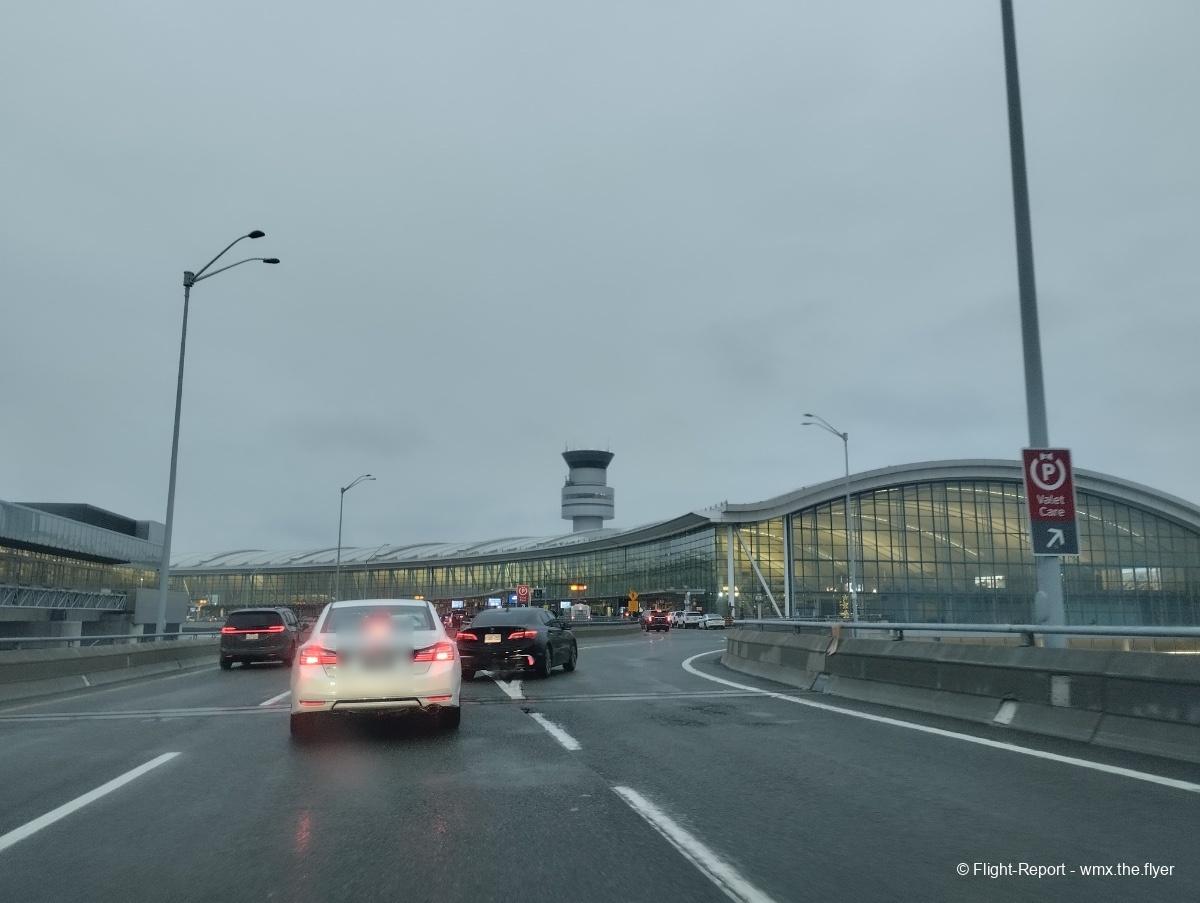
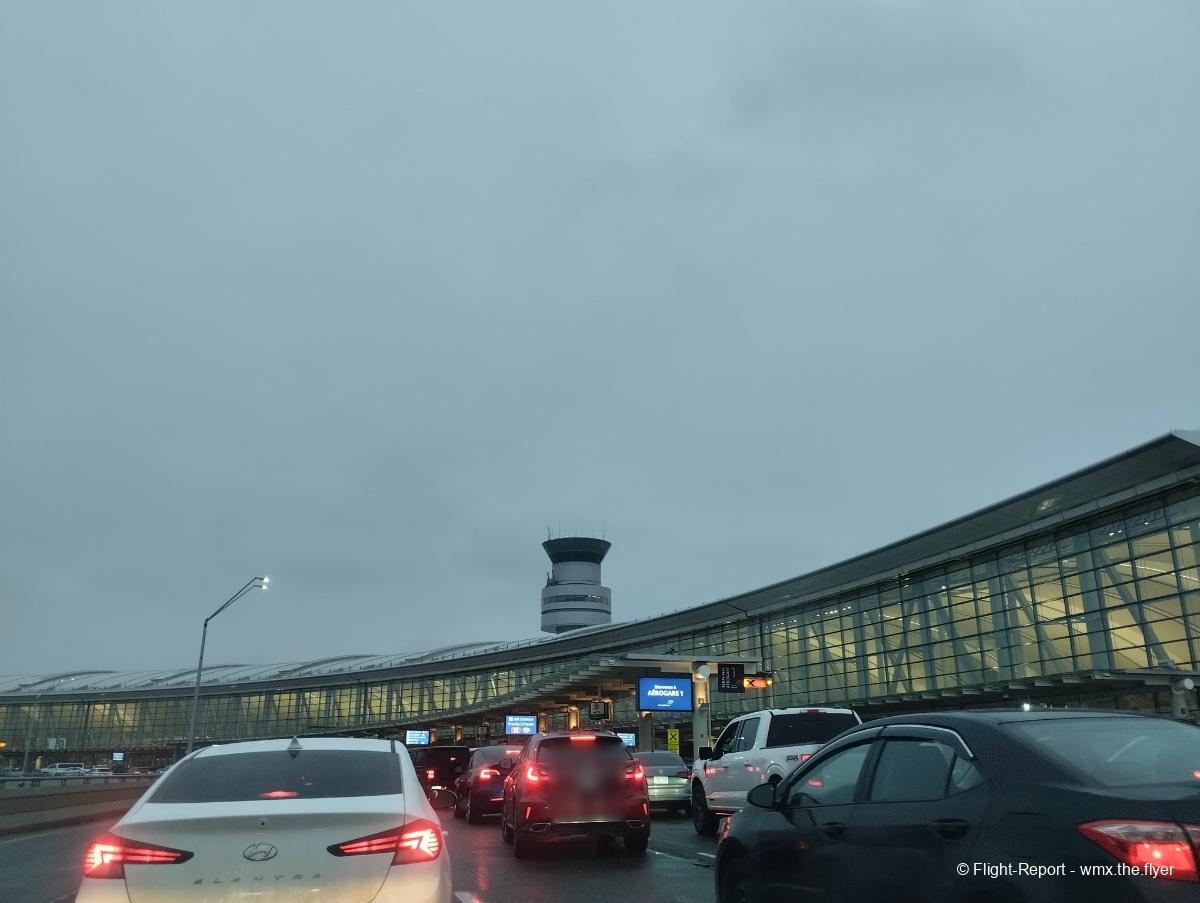
History and Current Operations at the Airport
Toronto Pearson International Airport (YYZ/CYYZ), opened in 1939 as Malton Airport, serving as Toronto’s primary airport after replacing the smaller Toronto Island Airport. It was used primarily for military training during World War II, but following the war, the airport transitioned to commercial use and rapidly expanded to accommodate Toronto’s growing population and air travel needs. Renamed Toronto International Airport in 1960, it underwent significant development, including the opening of the first modern terminal in 1964. The airport was officially renamed Toronto Pearson International Airport in 1984, in honor of Lester B. Pearson, Canada’s 14th Prime Minister and a Nobel Peace Prize recipient. Over the years, Pearson has continued to expand, with the construction of new terminals and runways to handle increasing passenger and cargo traffic. The current Terminal 1 opened in 2004, replacing the original Terminal 1 and Terminal 2, while Terminal 3, which opened in 1991, also serves international and domestic flights. Pearson is the largest and busiest airport in Canada, serving as a hub for Air Canada.
Toronto Pearson operates with 5 runways (05/23, 06L/24R, 06R/24L, 15L/33R, 15R/33L) and handles 184 destinations across the globe with flights from 52 airlines. In 2023, Pearson handled 50500000 passengers, making it the 24th busiest airport in the world and the second busiest in North America. Pearson’s busiest year was 2019, with over 50.5 million passengers. In 2023, YYZ handled 44800000 passengers, the most in Canada.
Check-in
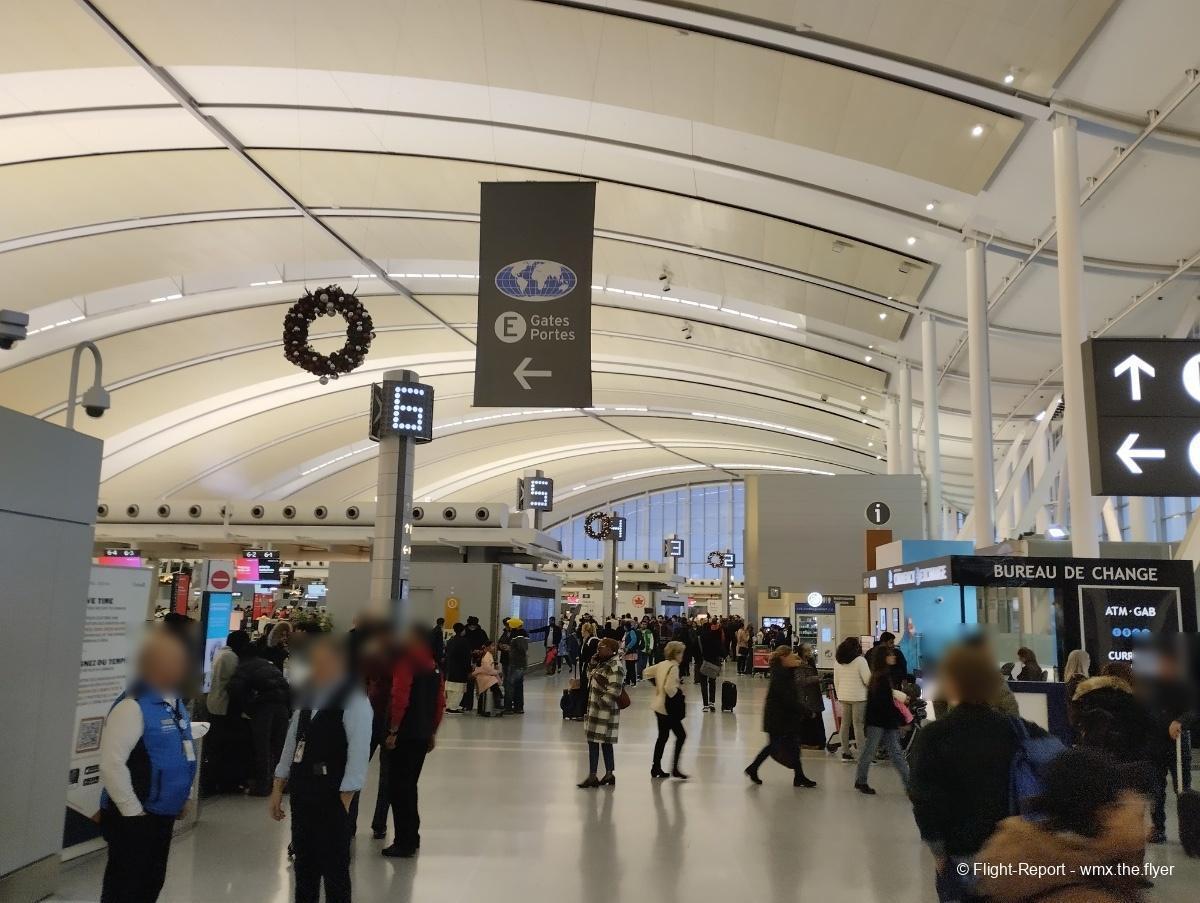
The check-in hall at Terminal 1 was extremely crowded at this hour with many Air Canada flights departing at around the same time. It took a while before I managed to get to one of the electronic self check-in kiosks to get my boarding pass and baggage tag printed.
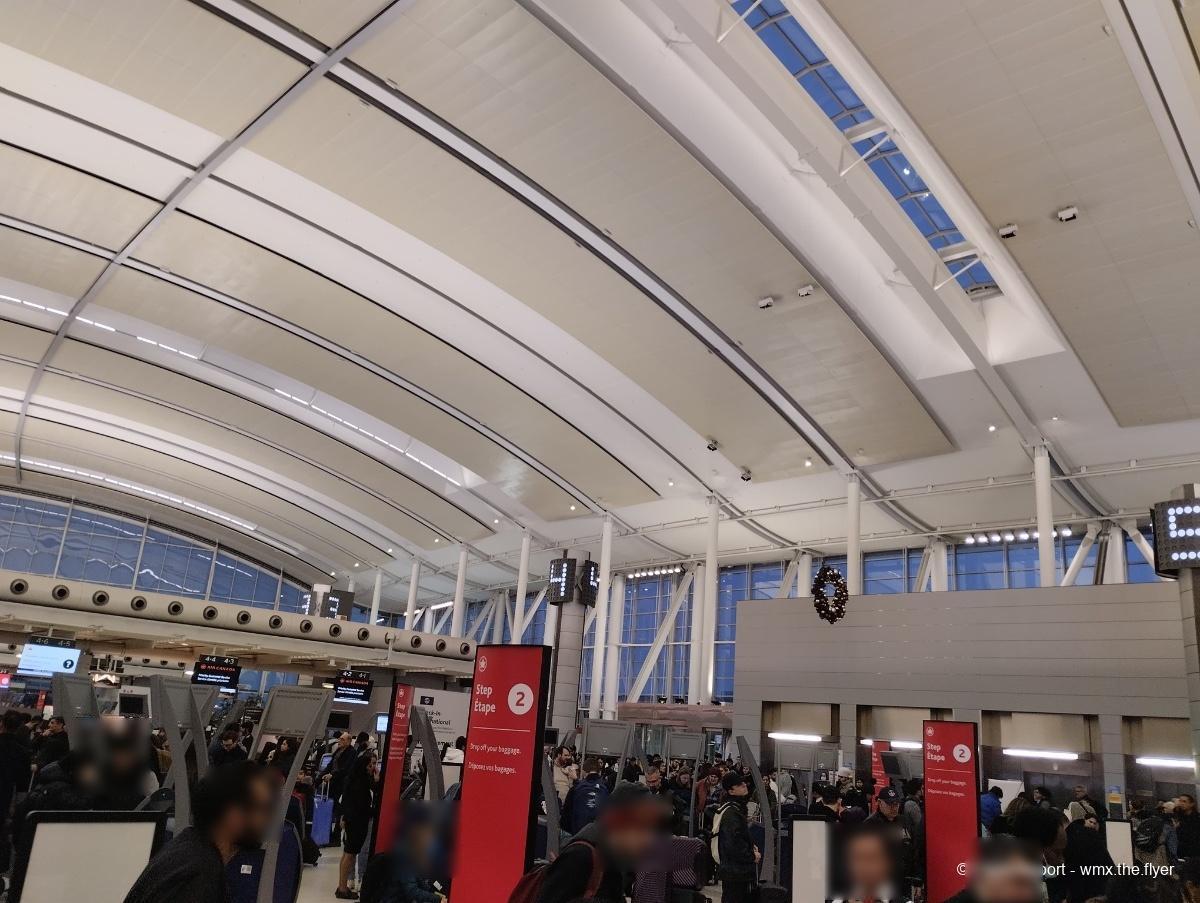
Next up, I had to use a self bag-drop machine to send my checked luggage airside. Unfortunately, many of the machines were malfunctioning, most of them somehow unable to scan the bar codes on everyone’s bag tags. A few helpless IT workers could do no more than reset each machine’s system but only to be met with the same problem. Around 15 minutes later, I thankfully found one that worked and my luggage was finally sent through.
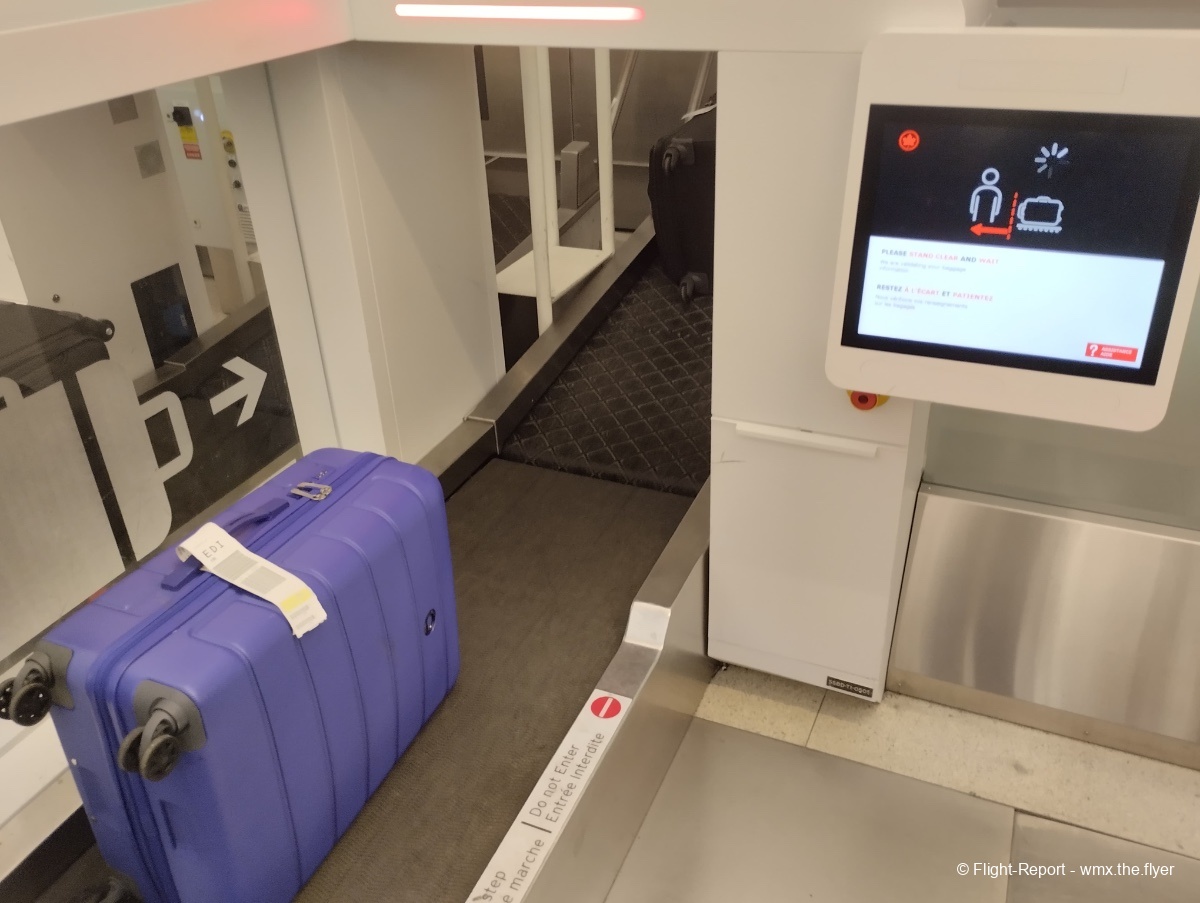
Immigration and Security
All concourse E departures went through the same immigration and security checkpoints. While the lines were long, there were quite a few lanes and the passport and boarding pass check went smoothly. The security process was also very efficient with the large hall having multiple lanes to go through.
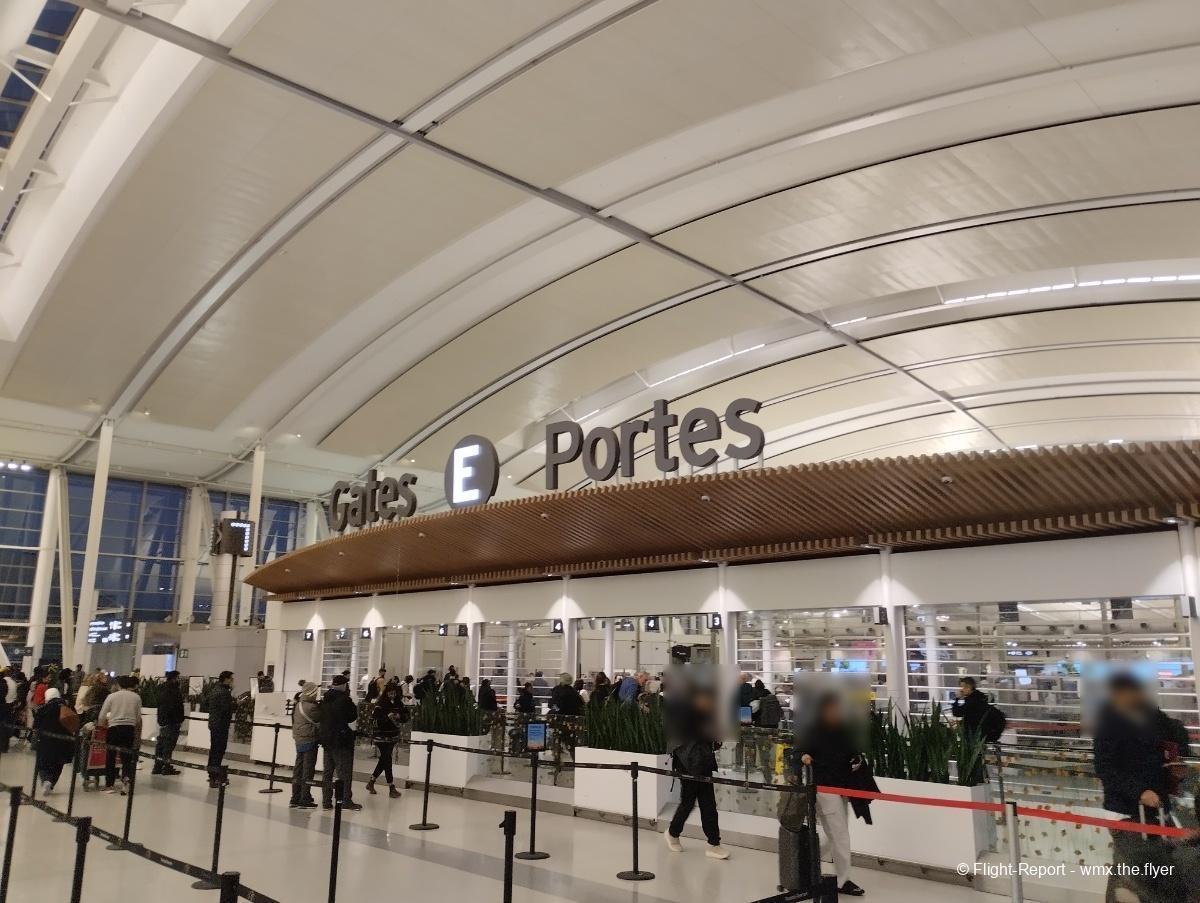
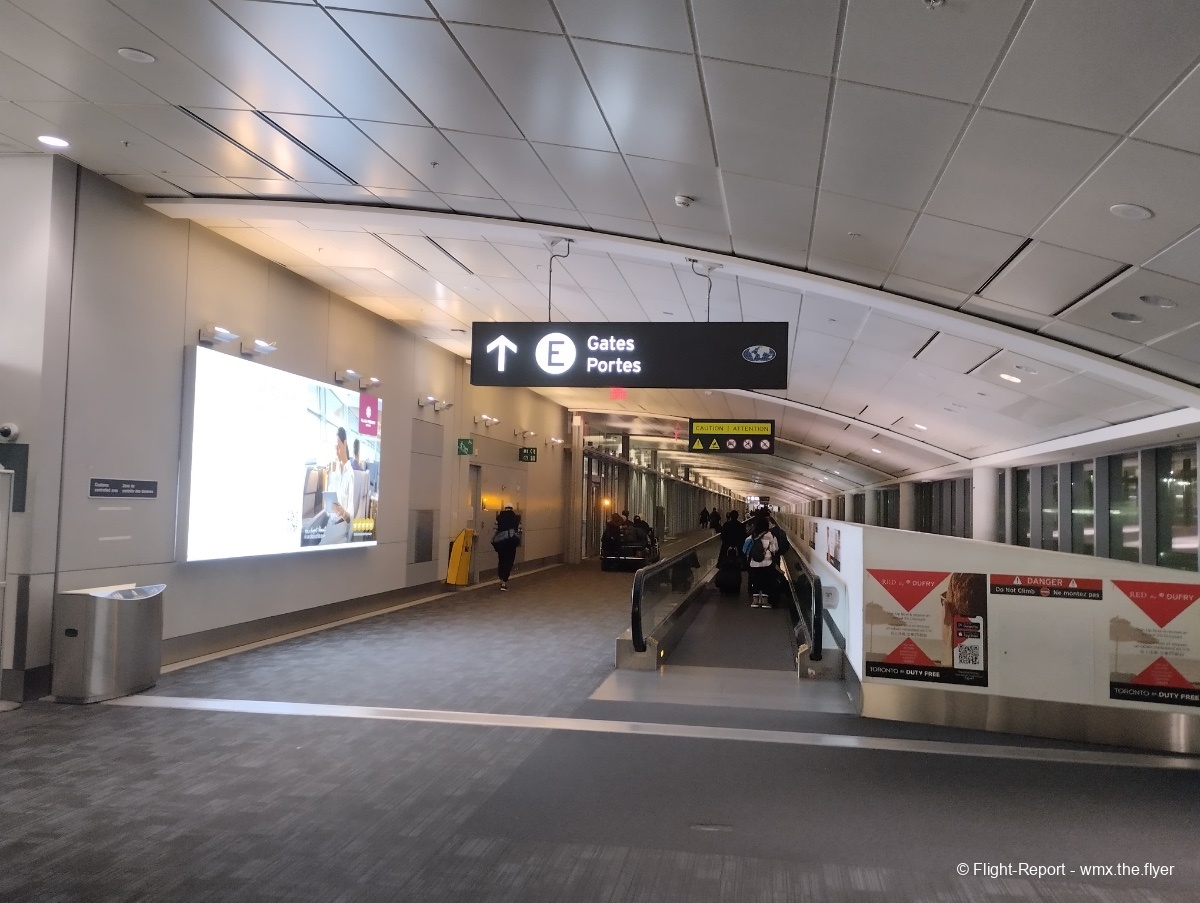
Airside
Once airside, I was greeted with an elegant terminal with a clean and bright interior. I found there to be a decent range of duty free shops, and I really liked the architecture with the curvy ceiling and artistic displays scattered here and there.
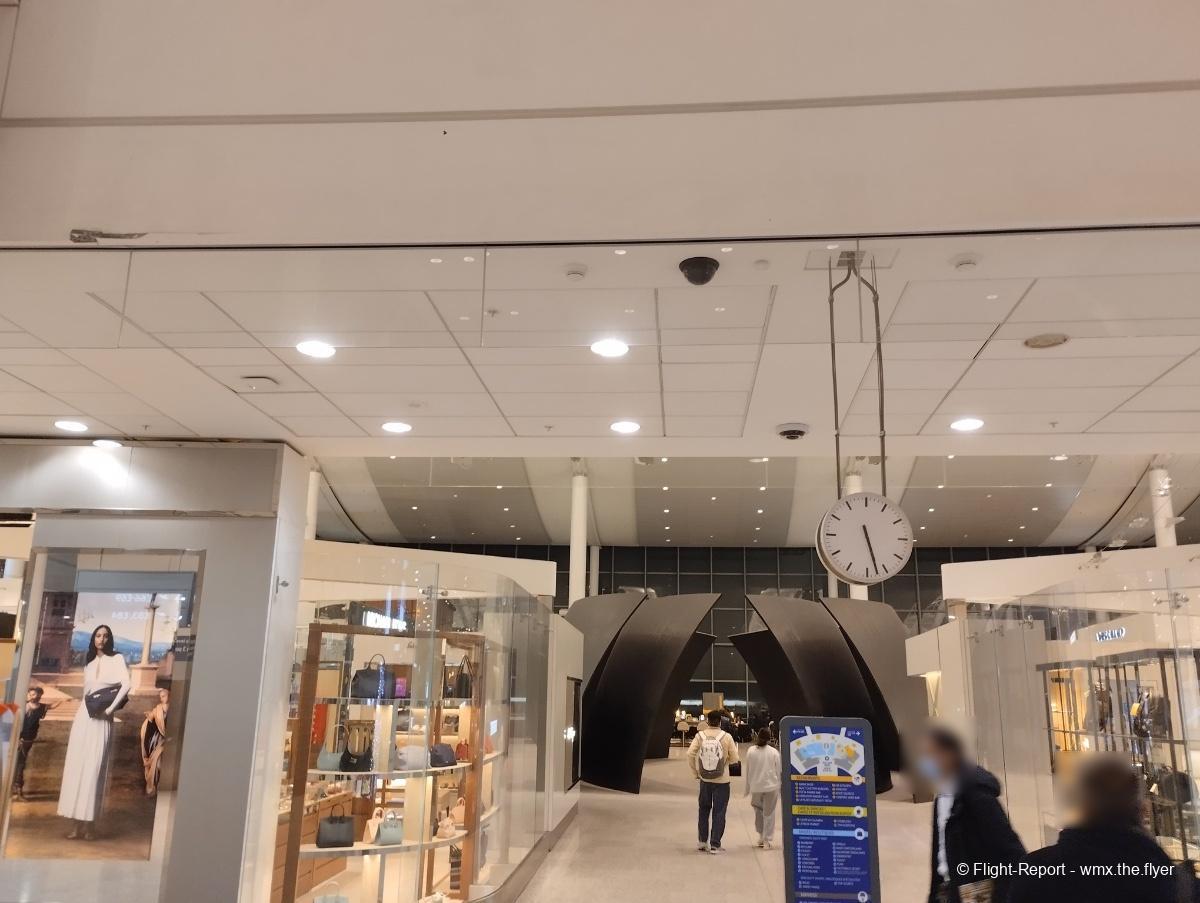
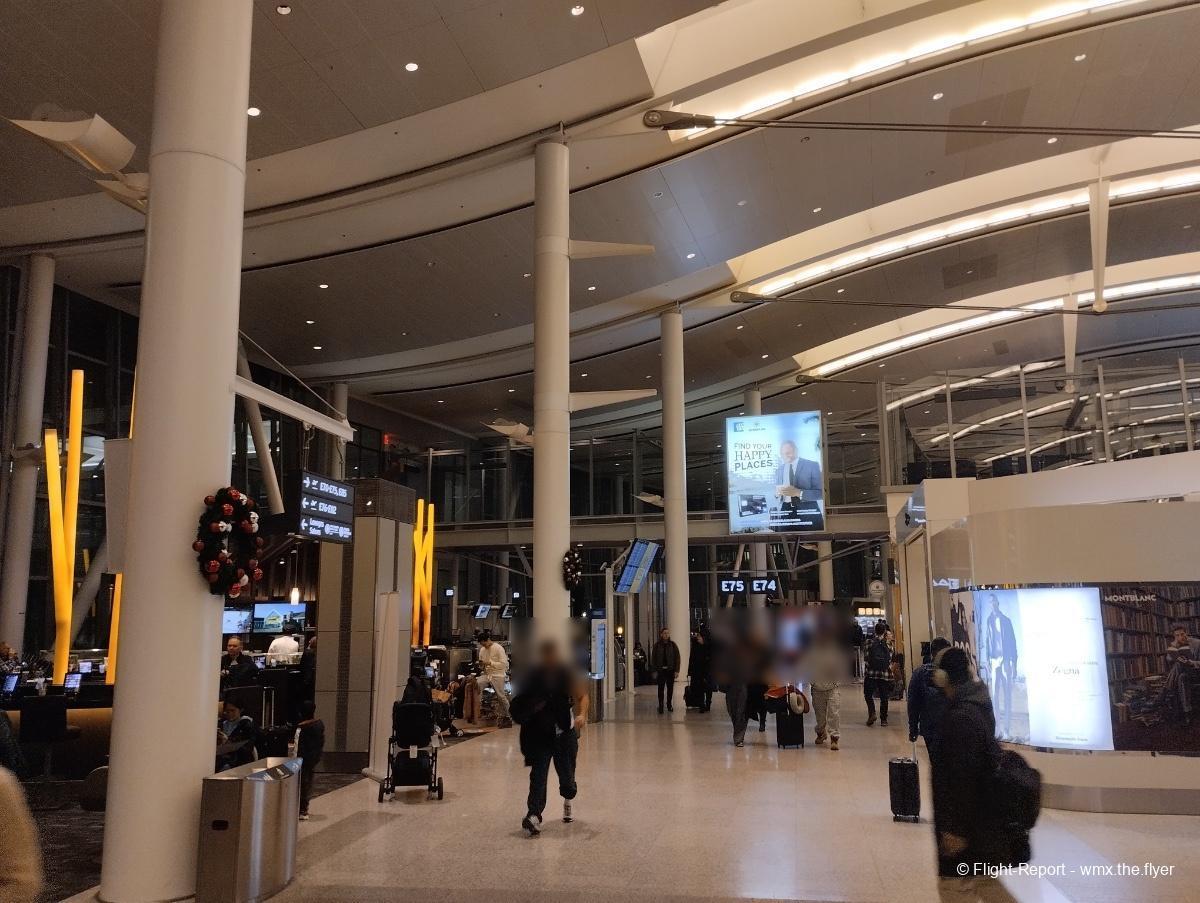
Gate Area
The area near my departure gate, E73, was very busy, with quite a few other European departures at around the same time. I was feeling rather peckish by now, so sat down at one of the tables next to a café and ordered a panini through a tablet on the table. The price came to CAD28. Ouch… It tasted alright but was way too small. The salad on the side did little to complement it.

The gate area did offer some fantastic views of our aircraft though.
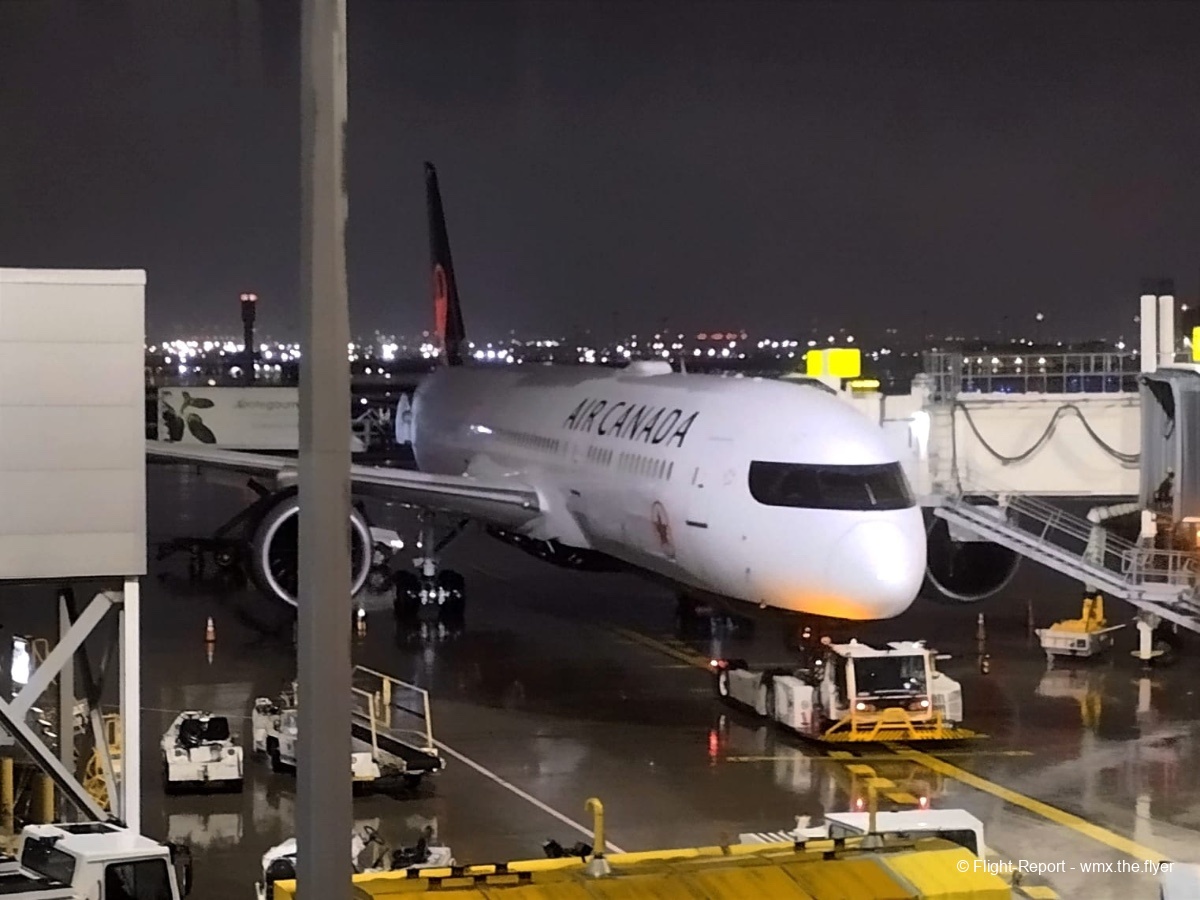
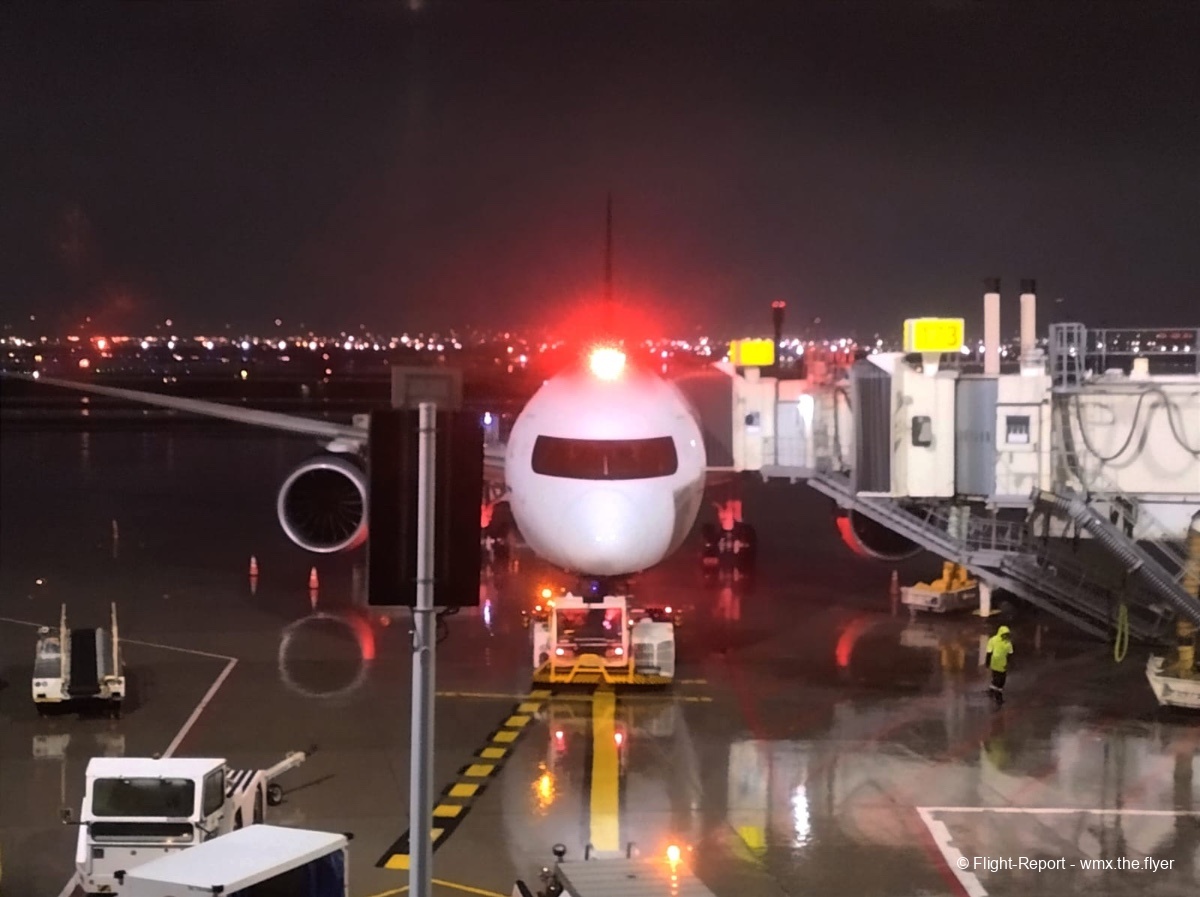
DEPARTURE AIRPORT SCORES: 7/10
Flight and Aircraft Information
Flight information
Flight date: 29/12/2023
Airline: Air Canada (AC/ACA)
Operated by: Air Canada (AC/ACA)
Flight number: AC806
Route: Toronto Pearson YYZ – Edinburgh EDI
Scheduled Departure Time: 19:10 (UTC-5)
Actual Departure Time: 19:26 (UTC-5)
Scheduled Arrival Time: 06:45 (UTC)
Actual Arrival Time: 06:21 (UTC)
Scheduled Flight Time: 06h35min
Actual Flight Time: 05h55min
Aircraft information
Aircraft Registration: C-FVNF
Aircraft Type: Boeing 787-9
Engines: 2× GEnx-1B74
Manufacturer Serial Number: 38362
Line Number: 845
First Flight: 19/04/2019
Aircraft Age (as of flight): 4 years 8 months
Aircraft Delivered: 29/04/2019
Seating Configuration: J30W21Y247
Aircraft Livery: Air Canada 2017
History of the Aircraft Type:
The Boeing 787 Dreamliner, launched in 2004, was designed to revolutionize long-haul air travel with advanced efficiency and passenger comfort. Utilizing composite materials for 50% of its structure, the 787 significantly reduced weight, enabling 20% better fuel efficiency compared to older wide-body jets. Powered by new-generation engines and featuring innovations like higher cabin humidity and larger windows, the 787 enhanced passenger experience on long flights. The 787 family includes the 787-8, 787-9, and 787-10 variants. The 787-9, introduced in 2014 with Air New Zealand as its launch customer, became the most popular model, offering a balance of range (up to 7,530 nautical miles) and capacity (296 passengers). Its versatility has made it ideal for both long-haul and high-capacity regional routes. As of 2024, over 1,000 Dreamliners are in service worldwide, connecting city pairs efficiently while helping airlines reduce operational costs and environmental impact.
History of the Airline:
Air Canada was initially founded on 04/10/1937 as Trans-Canada Air Lines (TCA), established by the Canadian government to create a national airline connecting the vast regions of Canada. The airline began operations with a flight from Vancouver to Seattle on September 1, 1937. In 1965, TCA was renamed Air Canada, reflecting its status as the national carrier. Air Canada was a pioneer in the aviation industry, being the first airline to introduce a computerized reservation system in 1963. The airline has undergone several significant changes throughout its history, including privatization in 1988 and a merger with Canadian Airlines in 2001 which solidified its position as the dominant carrier in the Canadian market. Air Canada is a founding member of the Star Alliance, the world's largest airline alliance, which it helped establish in 1997.
Presently, Air Canada operates an extensive domestic and international network from its primary hubs in Toronto YYZ, Montreal YUL, Vancouver YVR, and Calgary YYC. The airline serves 222 destinations, of which 158 are international, across 47 countries on all six inhabited continents. As of August 2024, Air Canada's fleet comprises 208 aircraft not including its subsidiaries, making it the largest airline in Canada. The fleet includes: 33 Airbus A220-300, 5 Airbus A319-100, 18 Airbus A320-200, 17 Airbus A321-200, 20 Airbus A330-300, 41 Boeing 737 MAX8, 6 Boeing 777-200, 19 Boeing 777-300ER, 8 Boeing 787-8, and 31 Boeing 787-9.
Pre-Departure
Boarding
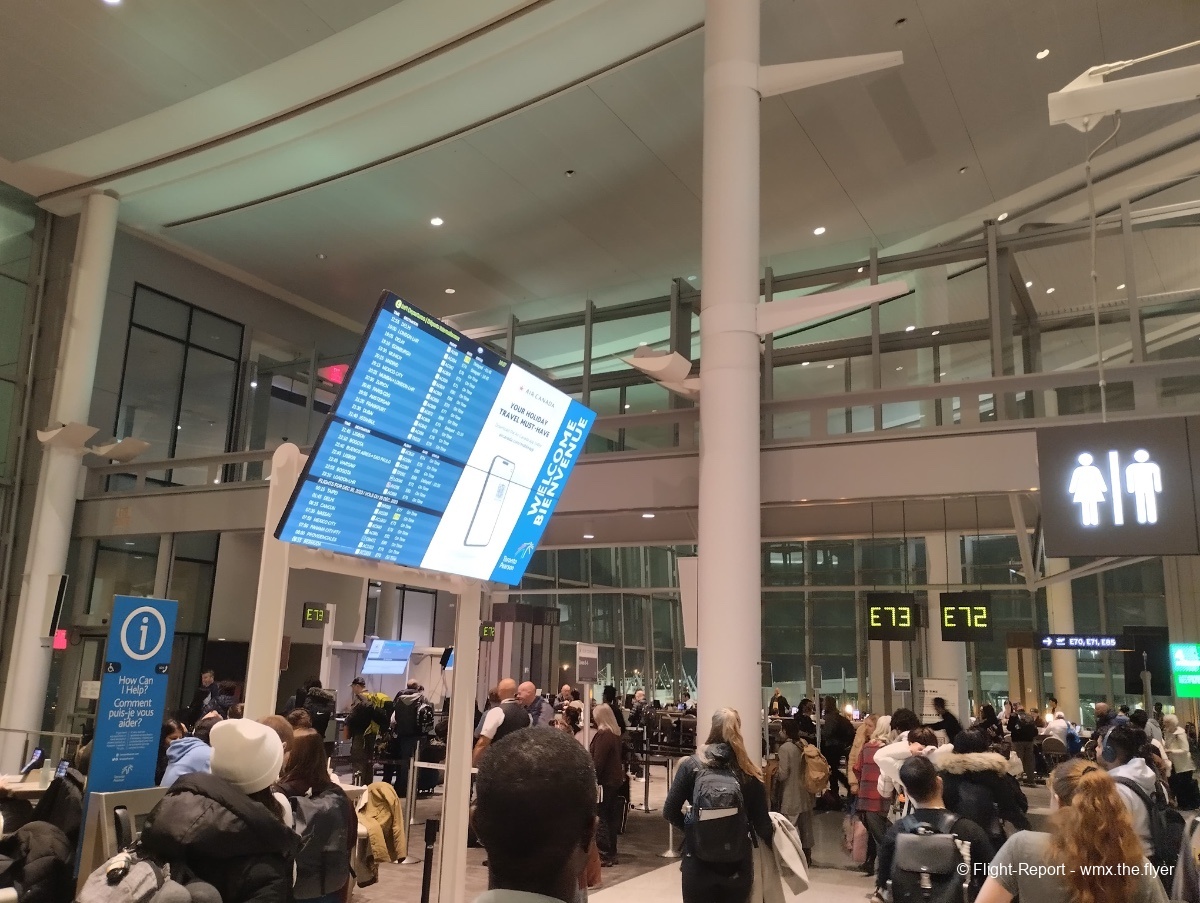
Business class passengers and Star Alliance status holders were called to board first, followed by the economy passengers in groups according to rows. Different airlines tend to have different procedures for the order in which passengers in economy board the aircraft, and in this case, my boarding group was called early into the boarding process, my seat being in the very last row of the economy class cabin. After a quick boarding pass scan at the gate, I was headed down the jet-bridge toward door L2 of our 787.
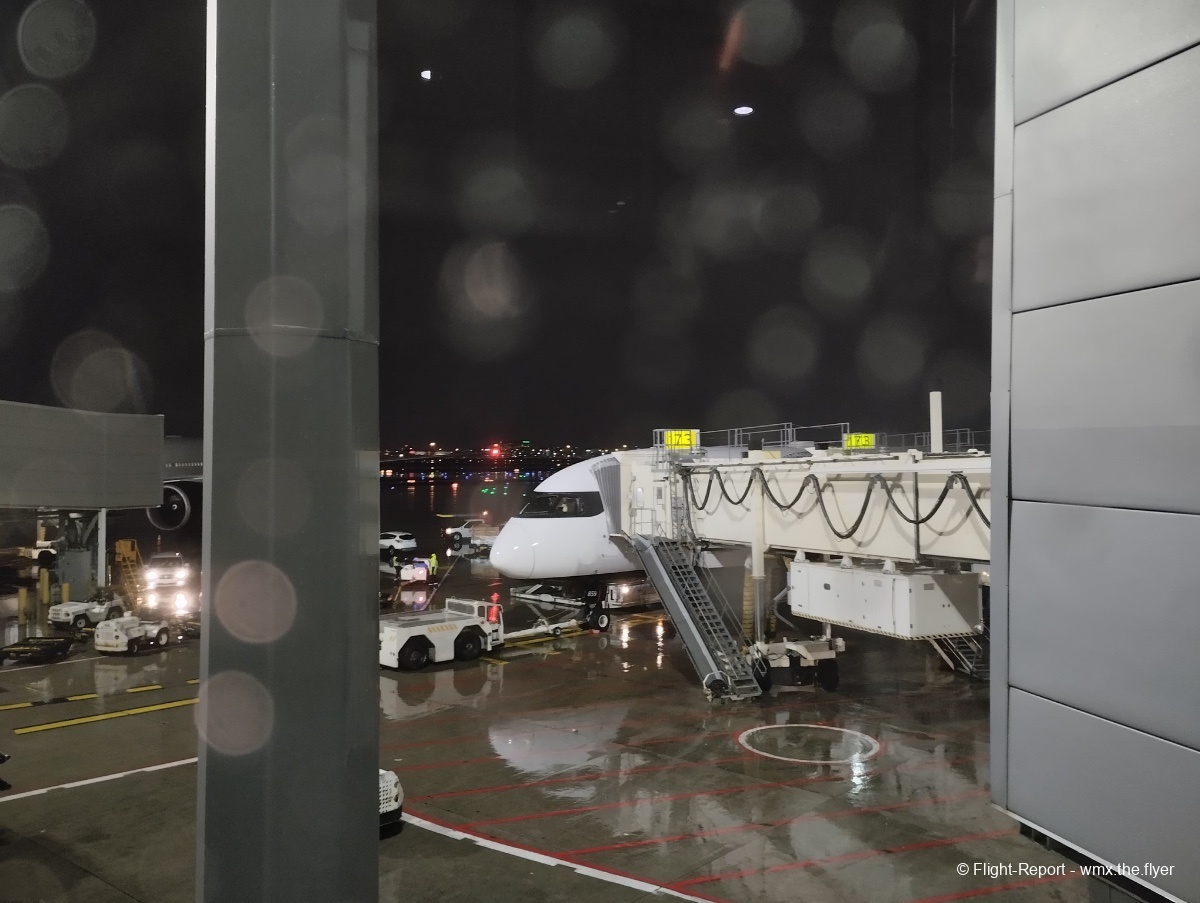
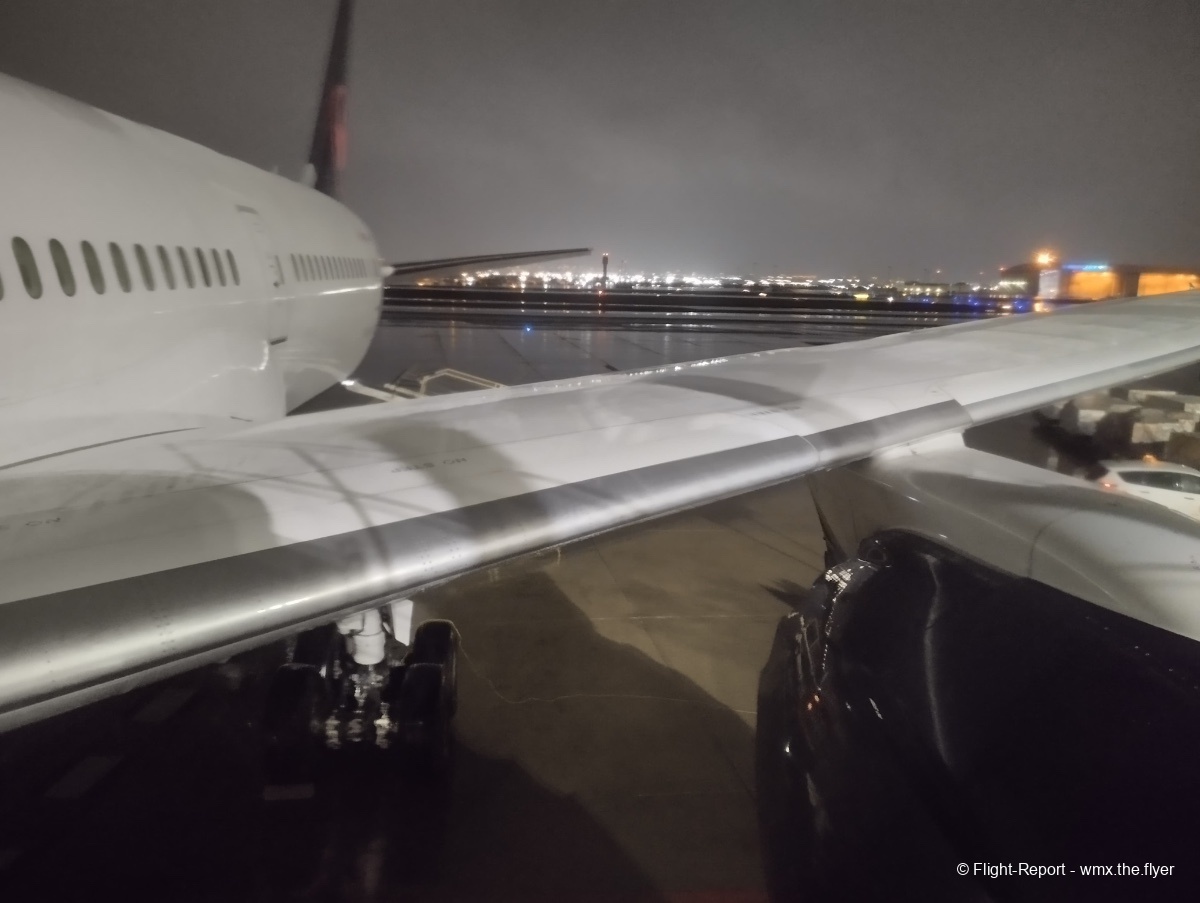
Welcome Onboard
Once onboard the aircraft, two flight attendants stationed at door L2 warmly welcomed me onboard and showed me towards my right to my seat at row 45, all the way at the very back of the aircraft.
I turned right, the business class cabin being to my left where there were 8 rows of Collins Aerospace Super Diamond seats arranged 1-2-1, and walked through the premium economy cabin, three rows of Recaro PL3510 seats arranged in a standard 2-3-2 formation. Immediately behind was the economy class cabin, laid out in a 3-3-3 formation, though due to the curvature of the aircraft the last row, row 45, is in a 2-3-2 arrangement. My seat, 45A, was in the very last row.
Cabin + Seat
We shall now take a look at Air Canada’s Boeing 787-9 economy class cabin and seats.
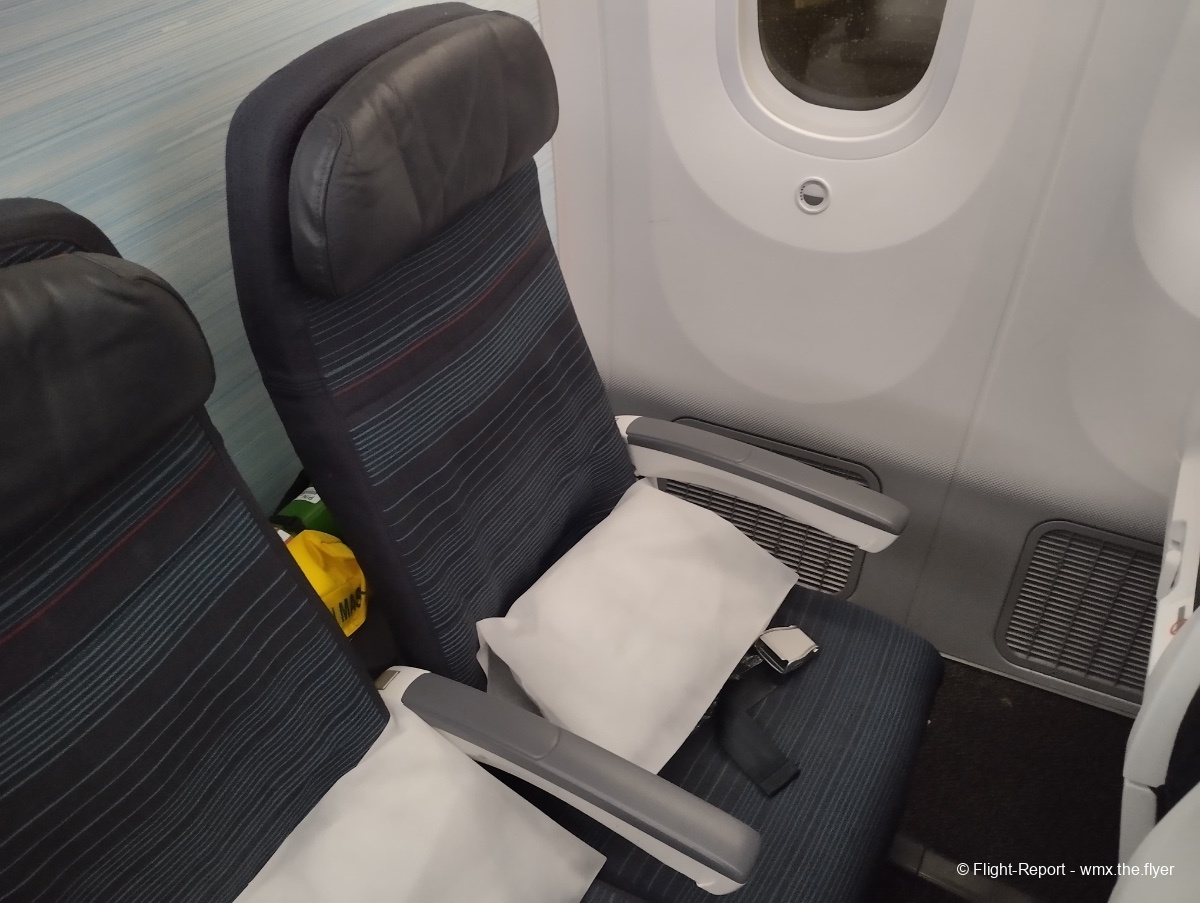
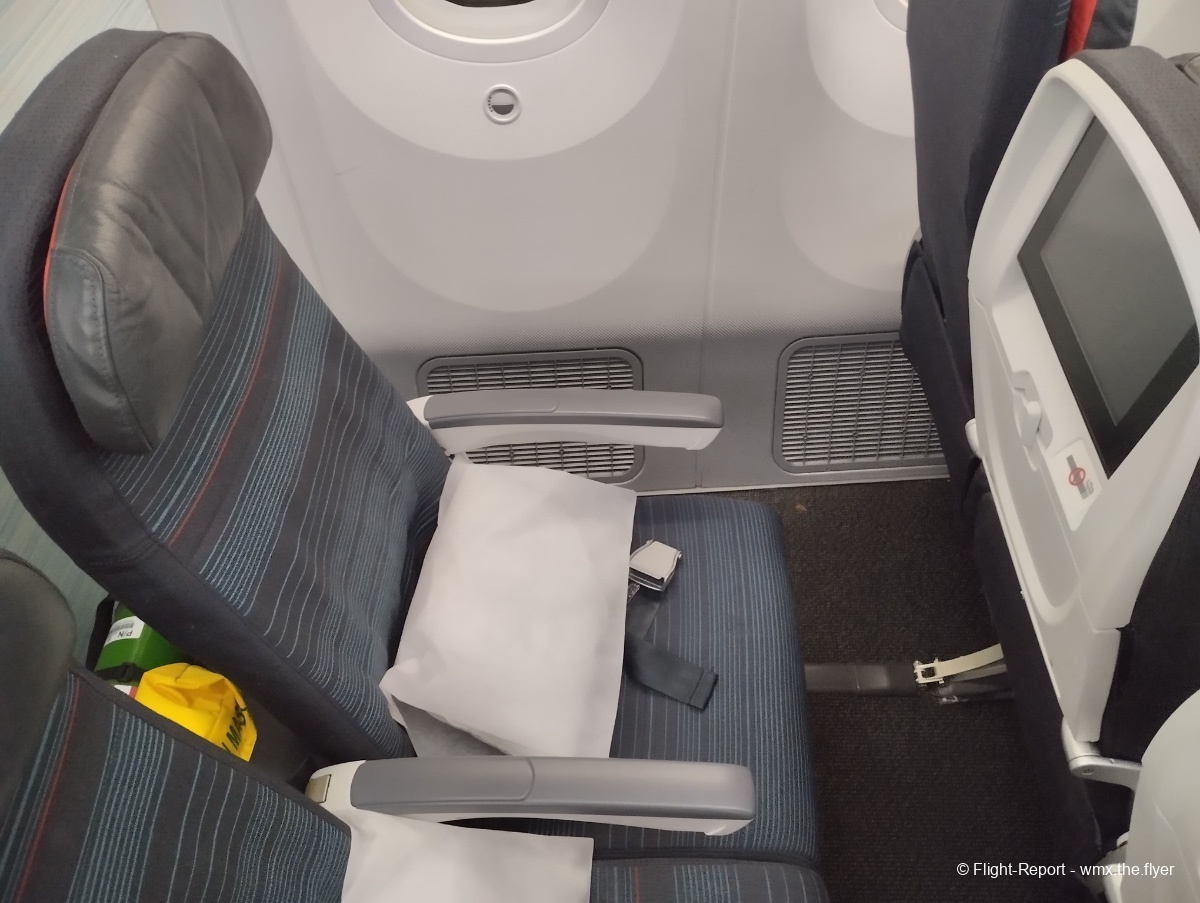
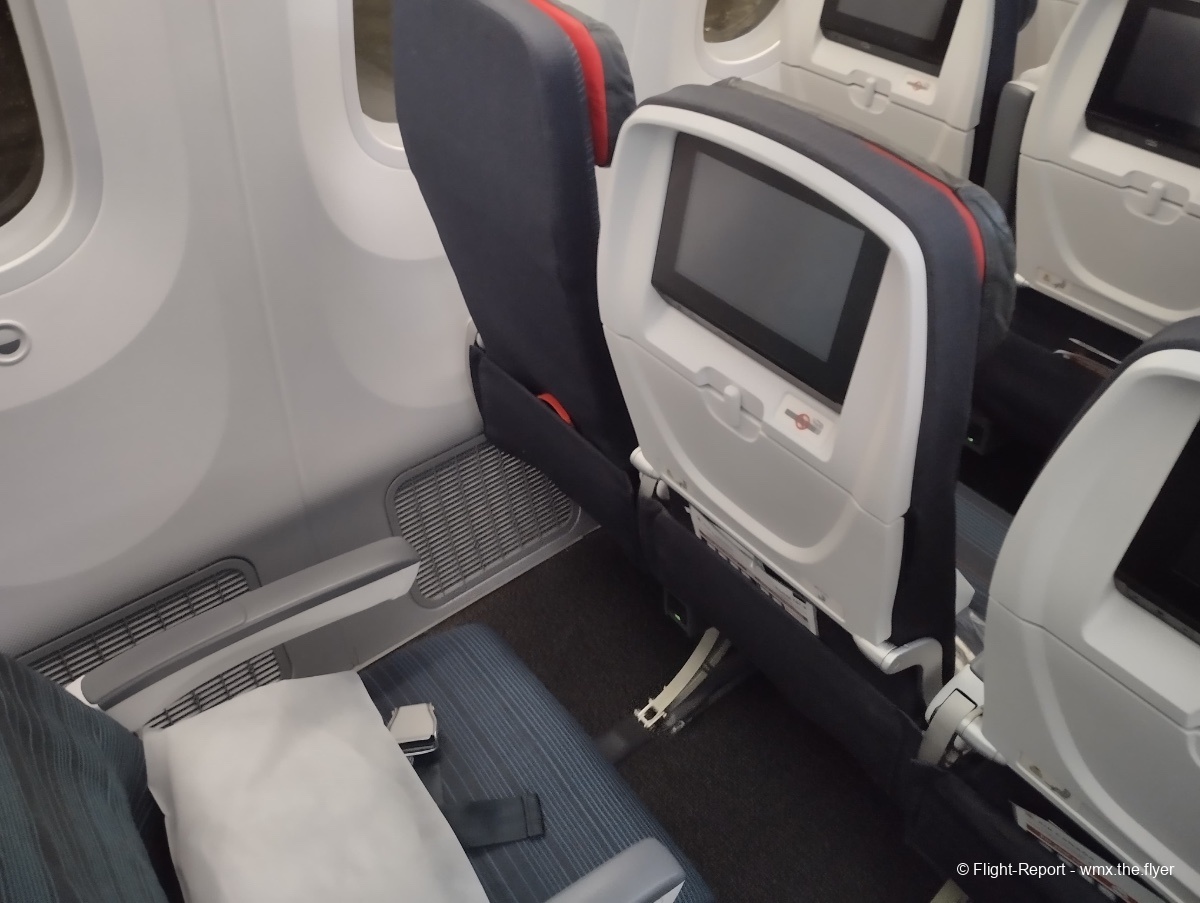
Seat Details:
Seat: 45A (Port-side window seat)
Seat Type: Slimline
Seat Model: Pinnacle
Seat Manufacturer: Collins Aerospace
Seat Pitch: 31”
Seat Width: 17.1”
Recline: 3”
Class: Economy (Y)
Cabin: Rear economy cabin
Seating arrangement: 2-3-2 (3-3-3 for all other rows)
Features:
4-way adjustable headrest
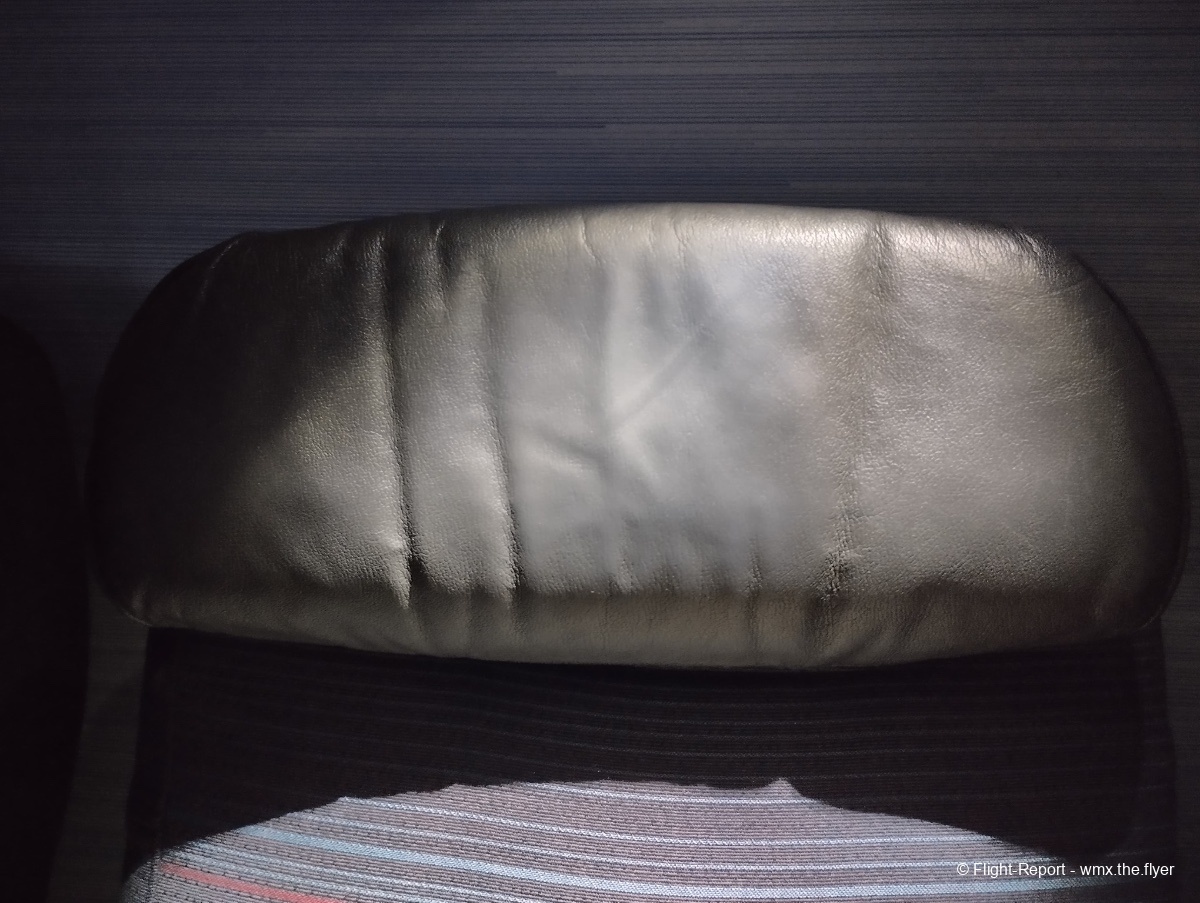
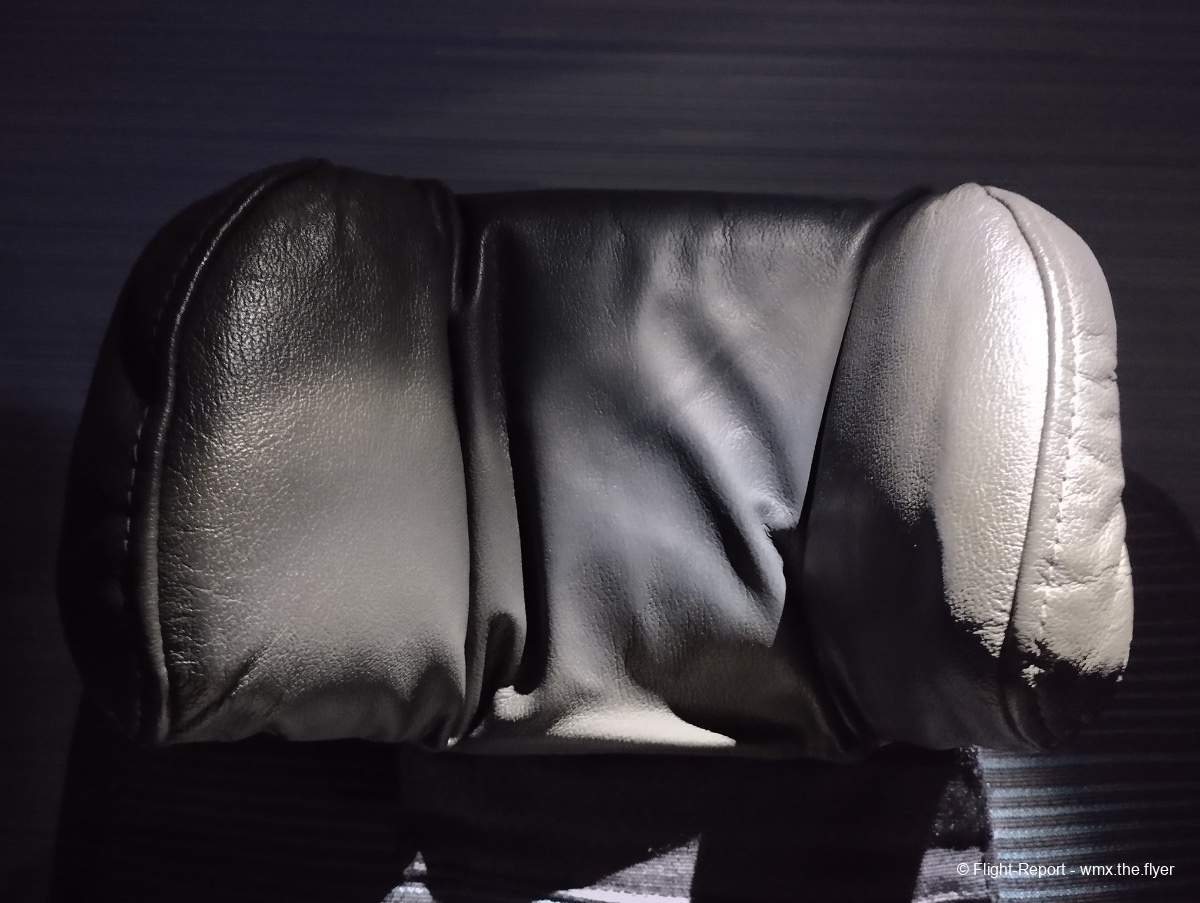
Retractable fold-down tray table
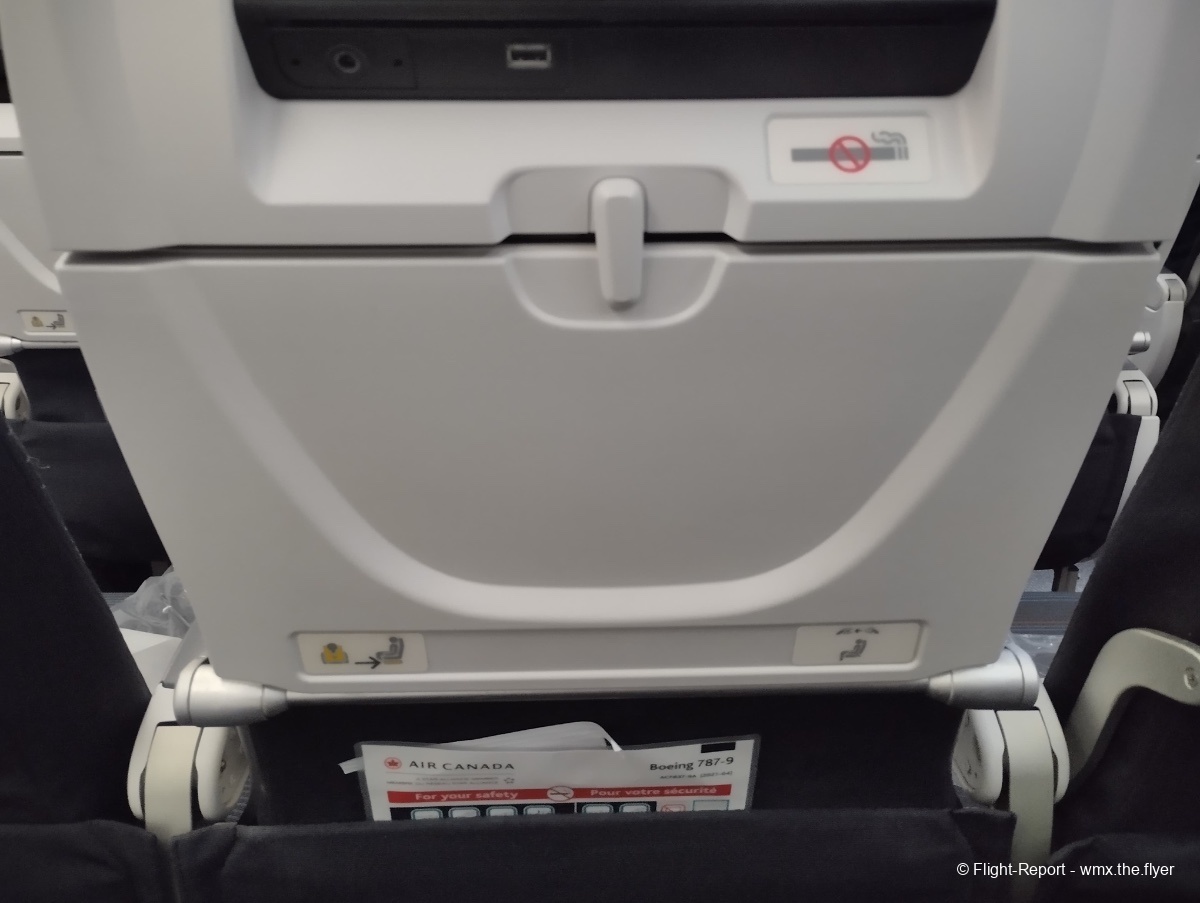
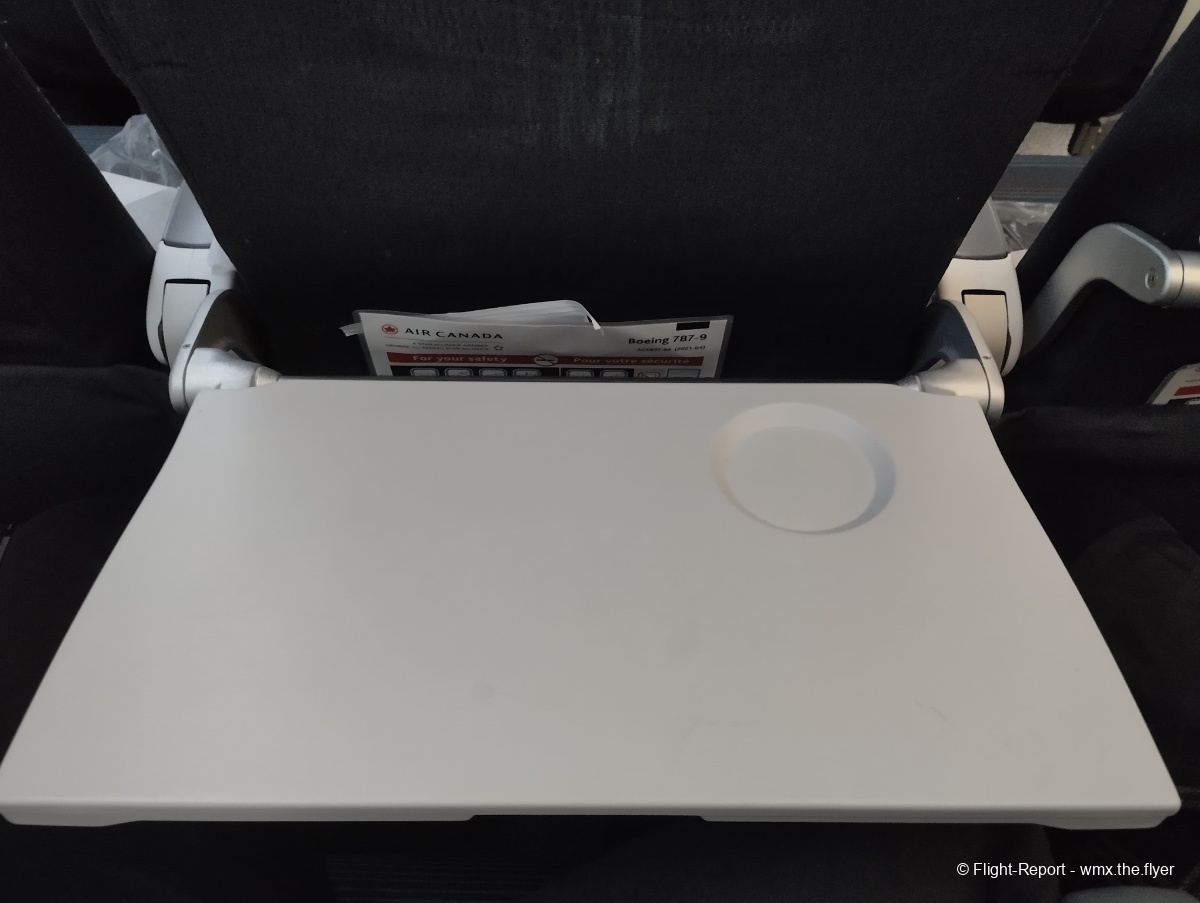
9” non-pivoting HD touchscreen IFE display
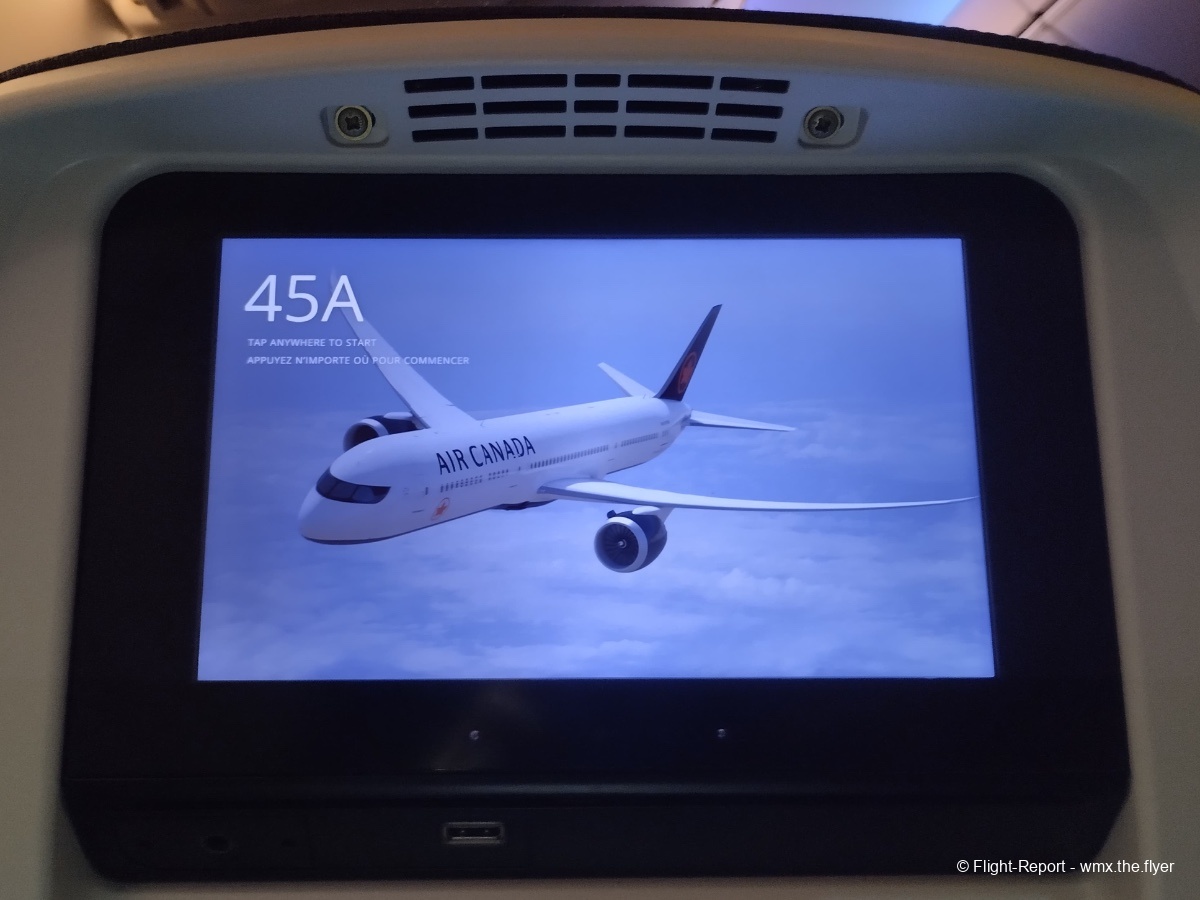
Universal AC Power Outlets
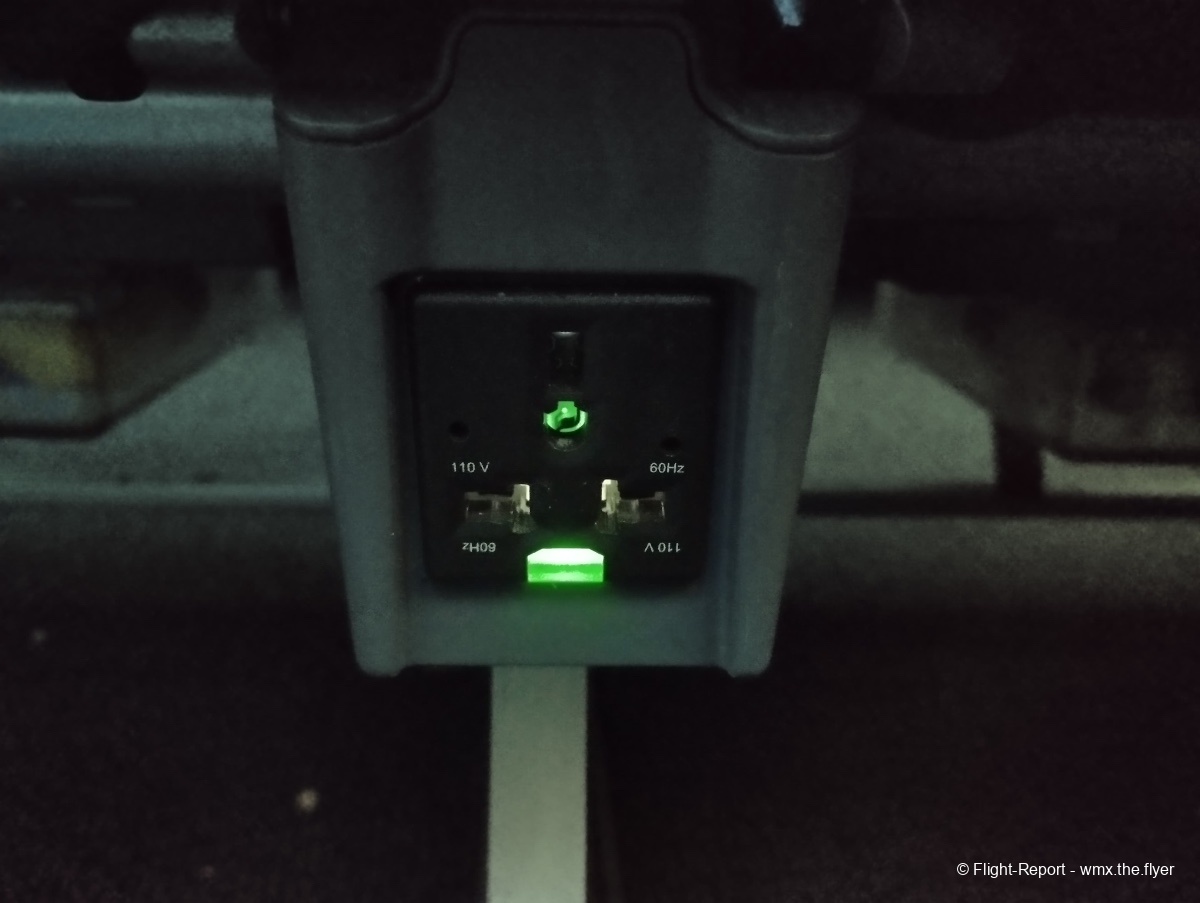
USB-A Sockets
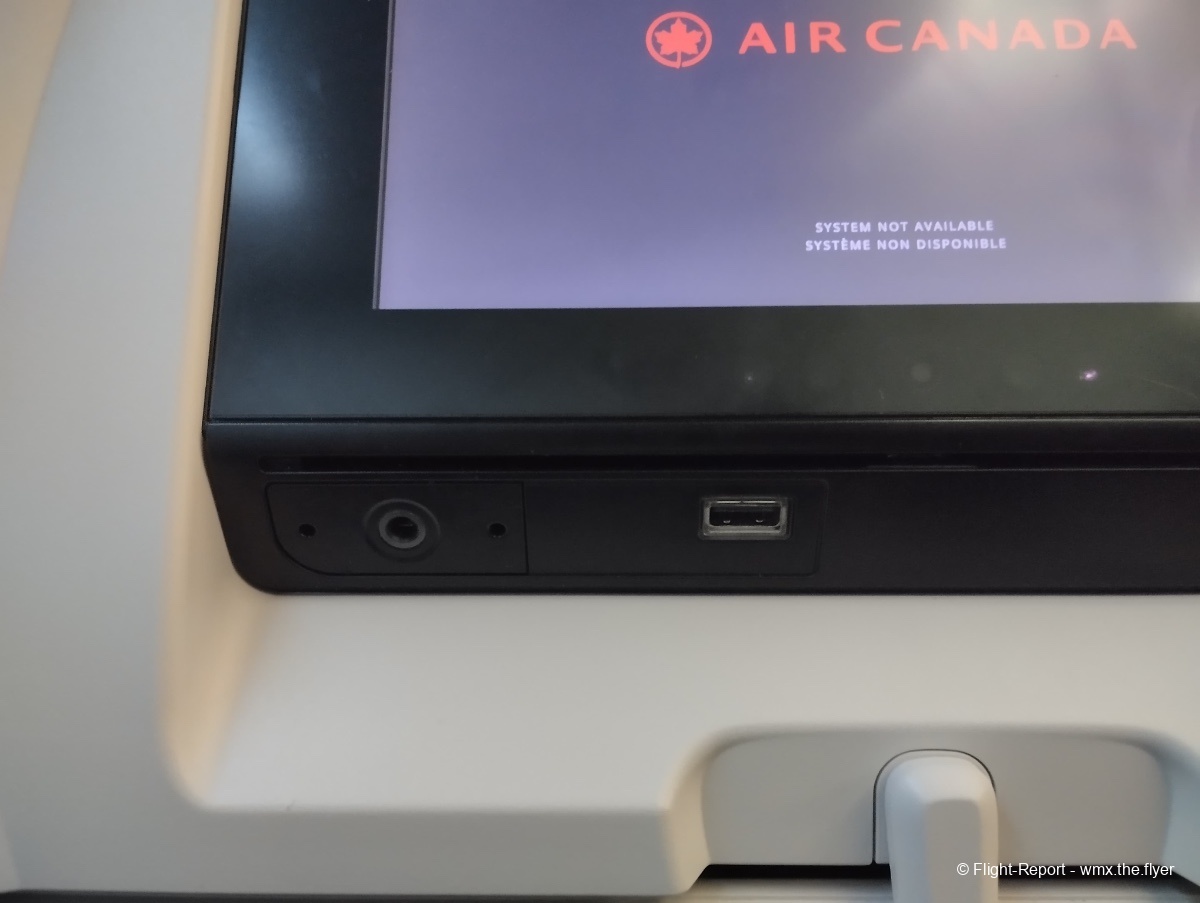
Individual air nozzles and Reading lights
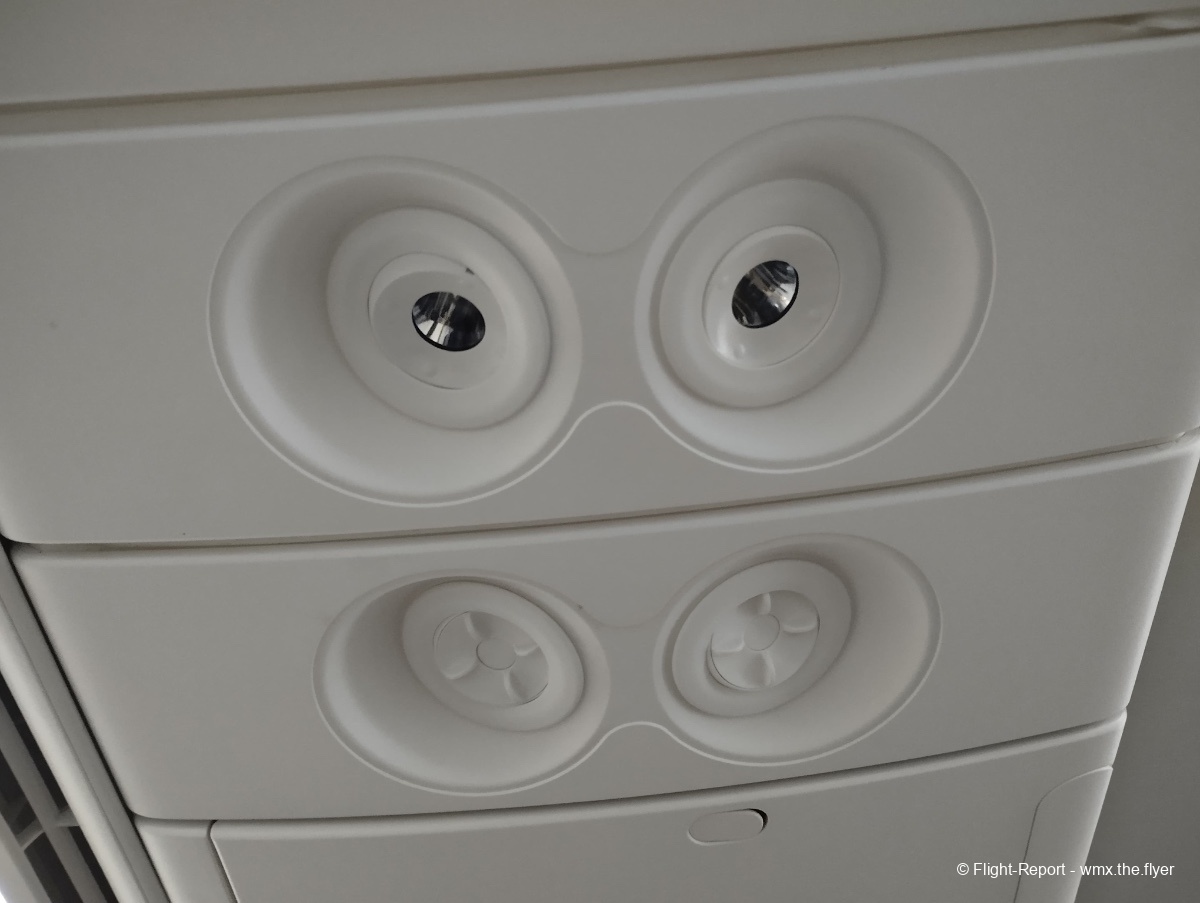
Some thoughts about the seat:
Seat Comfort: The seat was really well padded and very comfortable. Headrest provides a lot of support for the neck and head and was adjustable vertically and on the sides. The fabric material the seat was made of was also breathable which is always welcome. The Pinnacle seat is in fact my personal favourite economy class seat for its fantastic padding and comfortable design.
Legroom: Legroom was standard, coming with a seat pitch of around 31 inches. With the extra space next to me and under the (true) window seat in the row in front, my legs had ample space to stretch out.
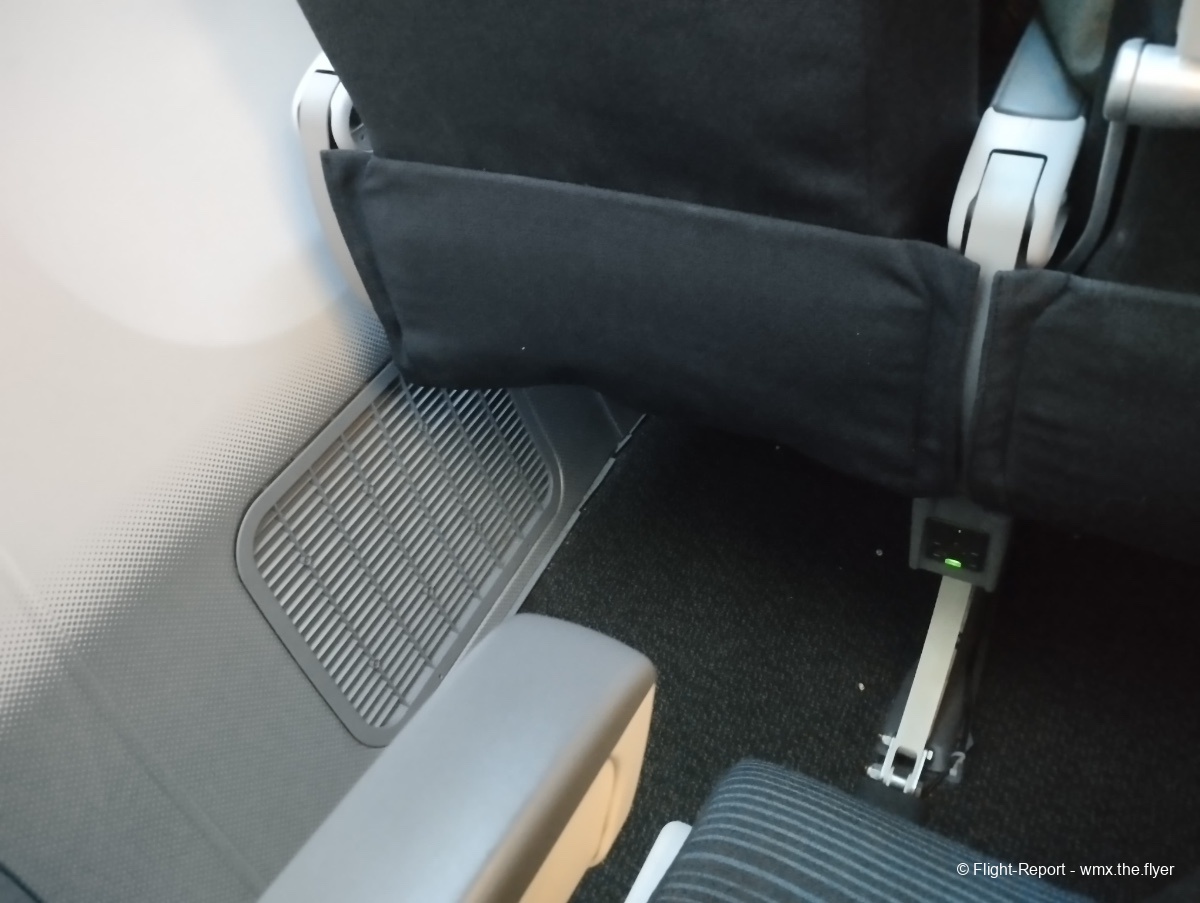
Seat Storage: The seat back in front had a large seat back pouch for storing literature and other small items. The extra space next to me also proved to be useful for putting my backpack during the flight.
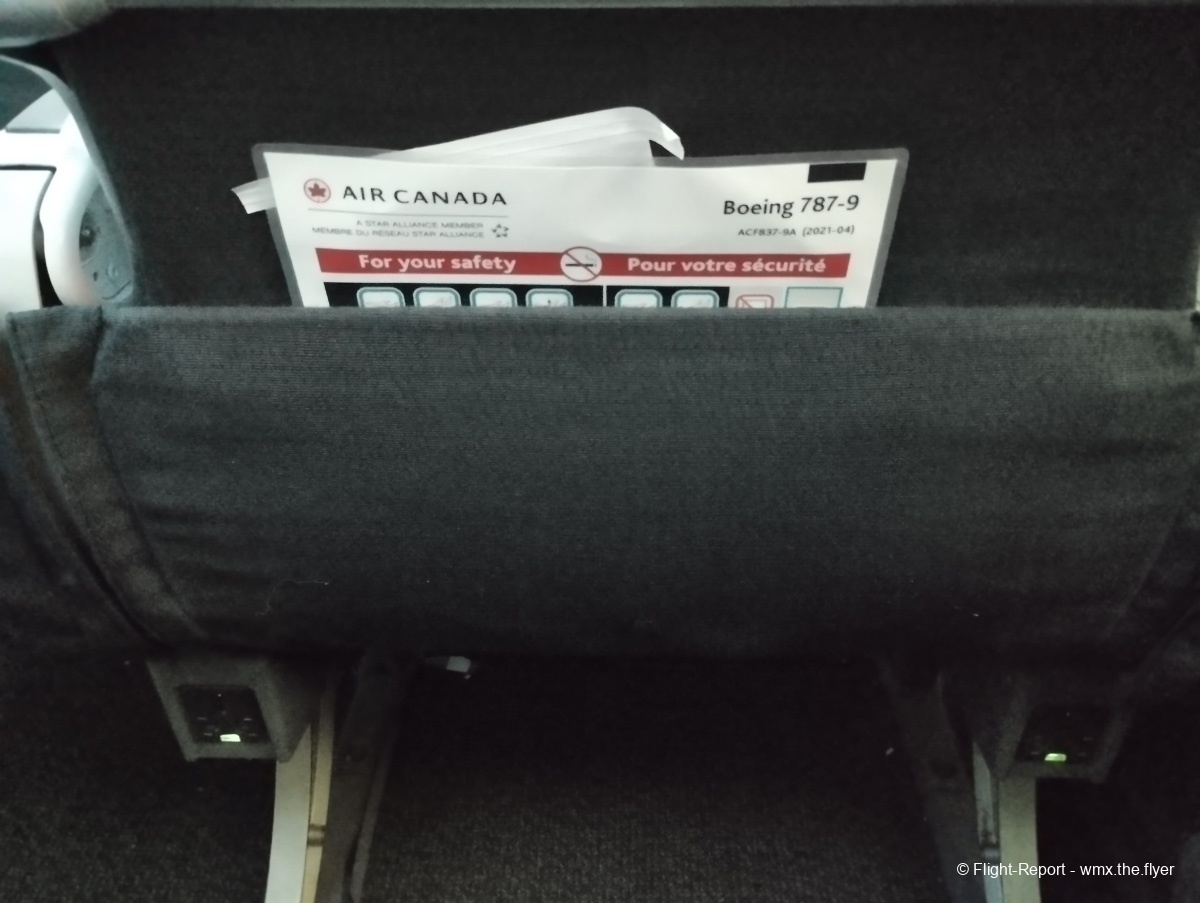
Recline: Recline was pretty good, and was particularly enjoyable due to it being guilt-free in the absence of any passengers directly behind.
CABIN + SEAT SCORE: 10/10
Taxi + Takeoff
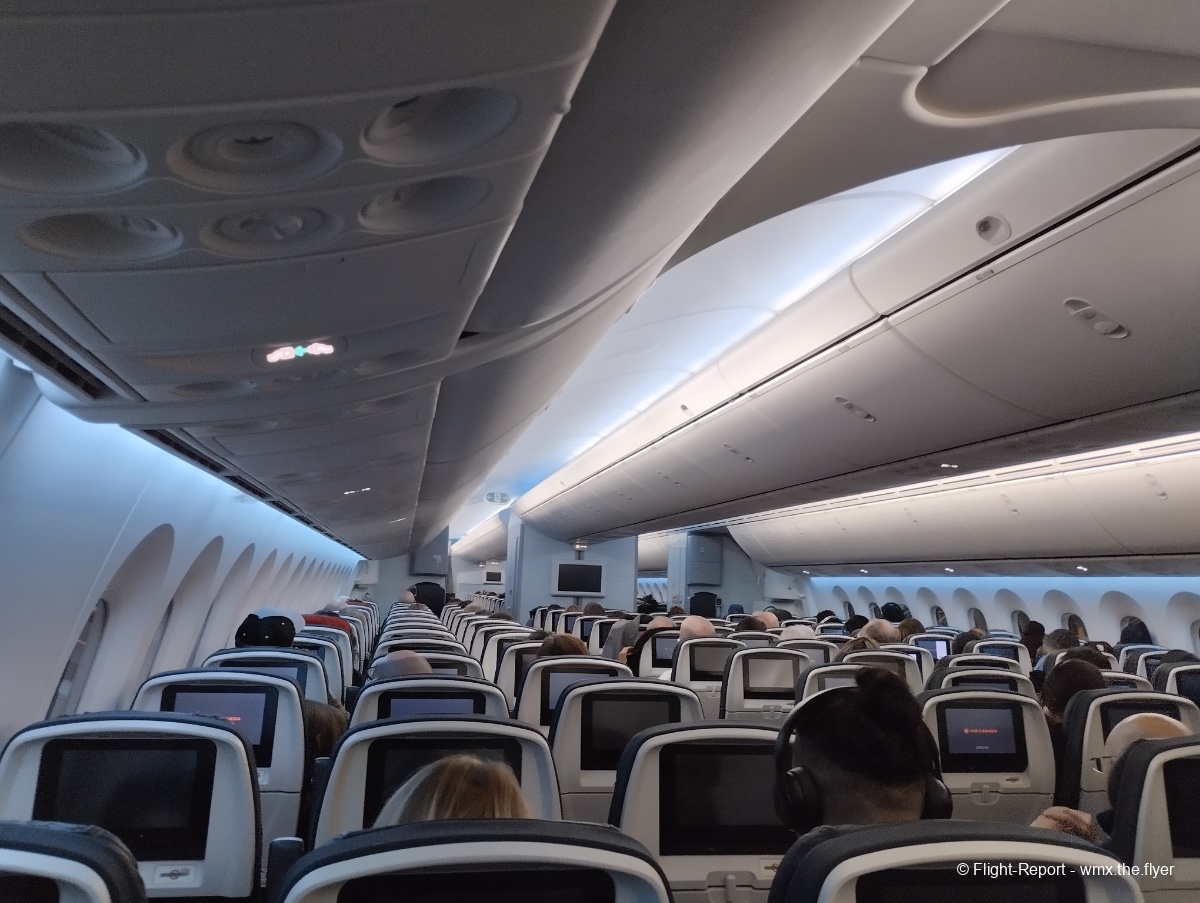
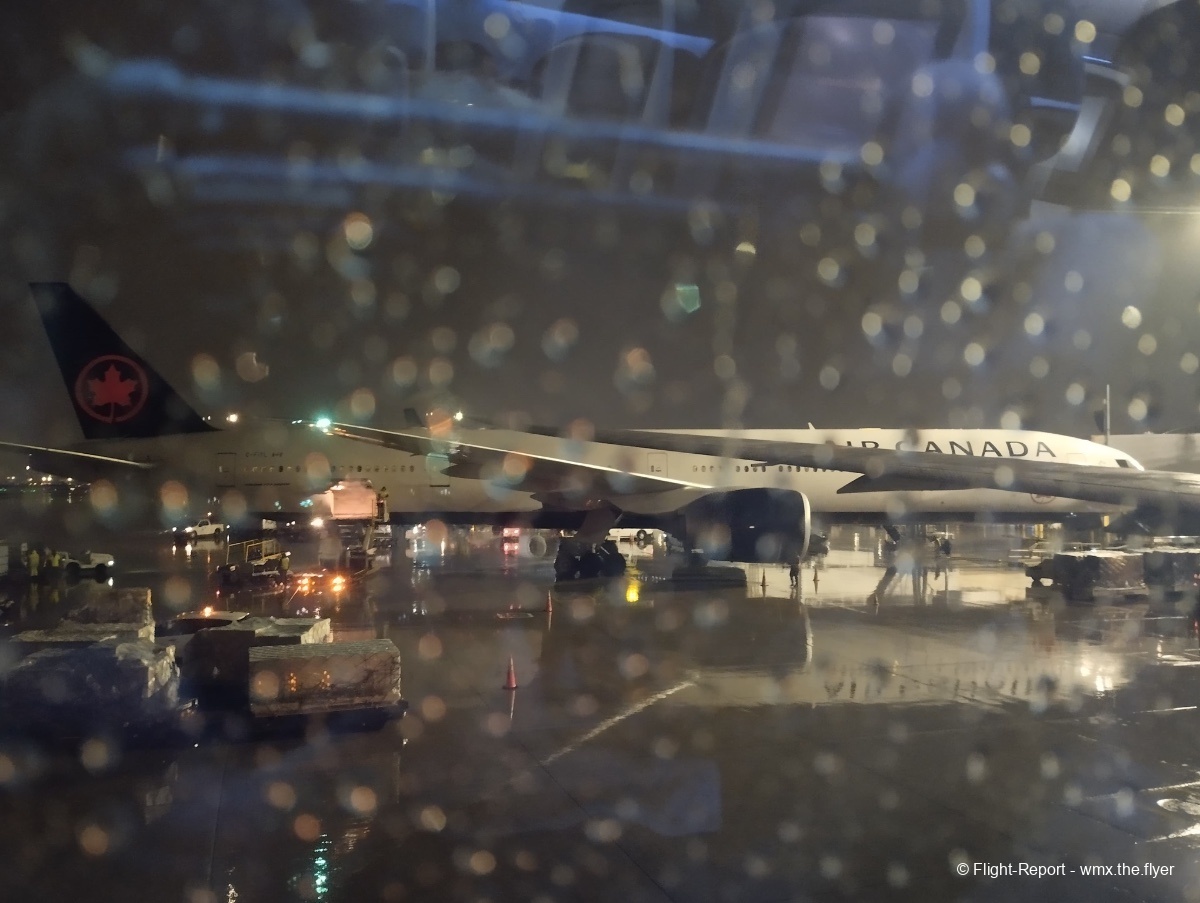
We pushed back soon and the safety video was shown. The safety video itself is set in various parts of Canada and features many beautiful sights and scenery. While its production quality was high, the video went at a pretty slow pace and took rather long, maybe around 10 minutes or so for two languages (English and French). In my opinion, the safety video would have been better if it went at a slightly faster pace to maintain attention from the passengers.
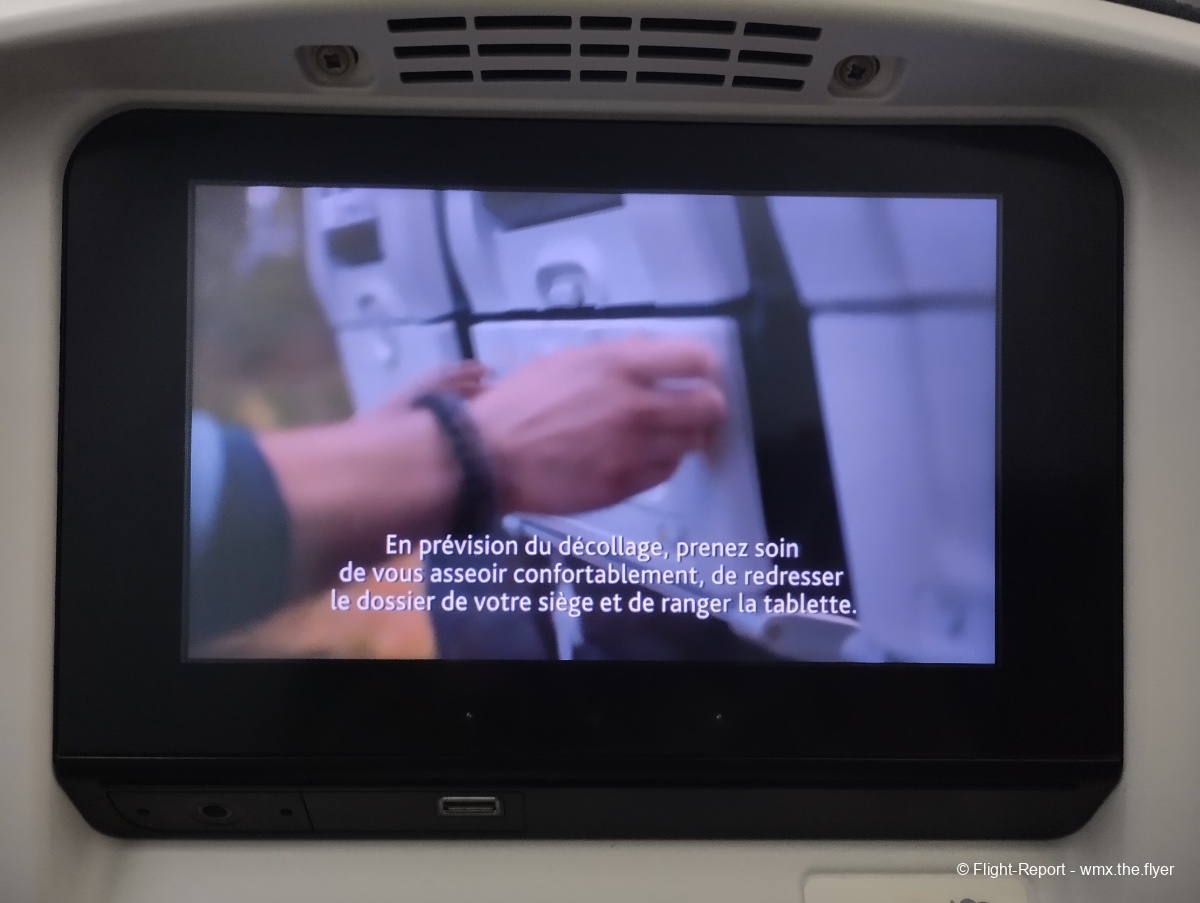
After pushback from gate E73, the aircraft entered taxiway A via AL, then taxied for almost the full length of the airport until it turned right onto taxiway H at AD. The aircraft turned left at intersection HS3 and lined up with runway 23 for our 19:26 departure out of a foggy Toronto Pearson, 16 minutes behind schedule. Following an initial climb at runway heading until 5000ft, the aircraft made a left, almost 180° turn to a heading of 70° which the aircraft roughly kept to for most of the remainder of the climb.
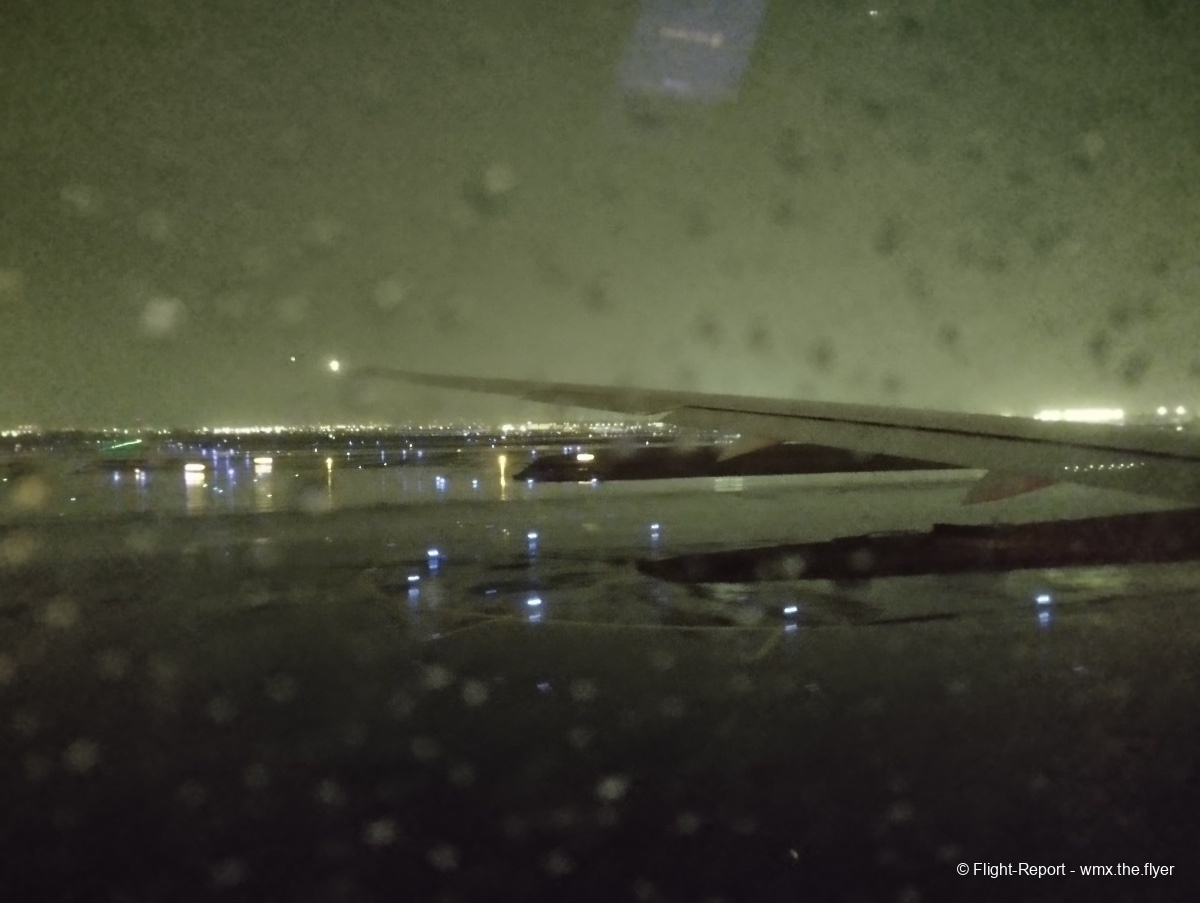
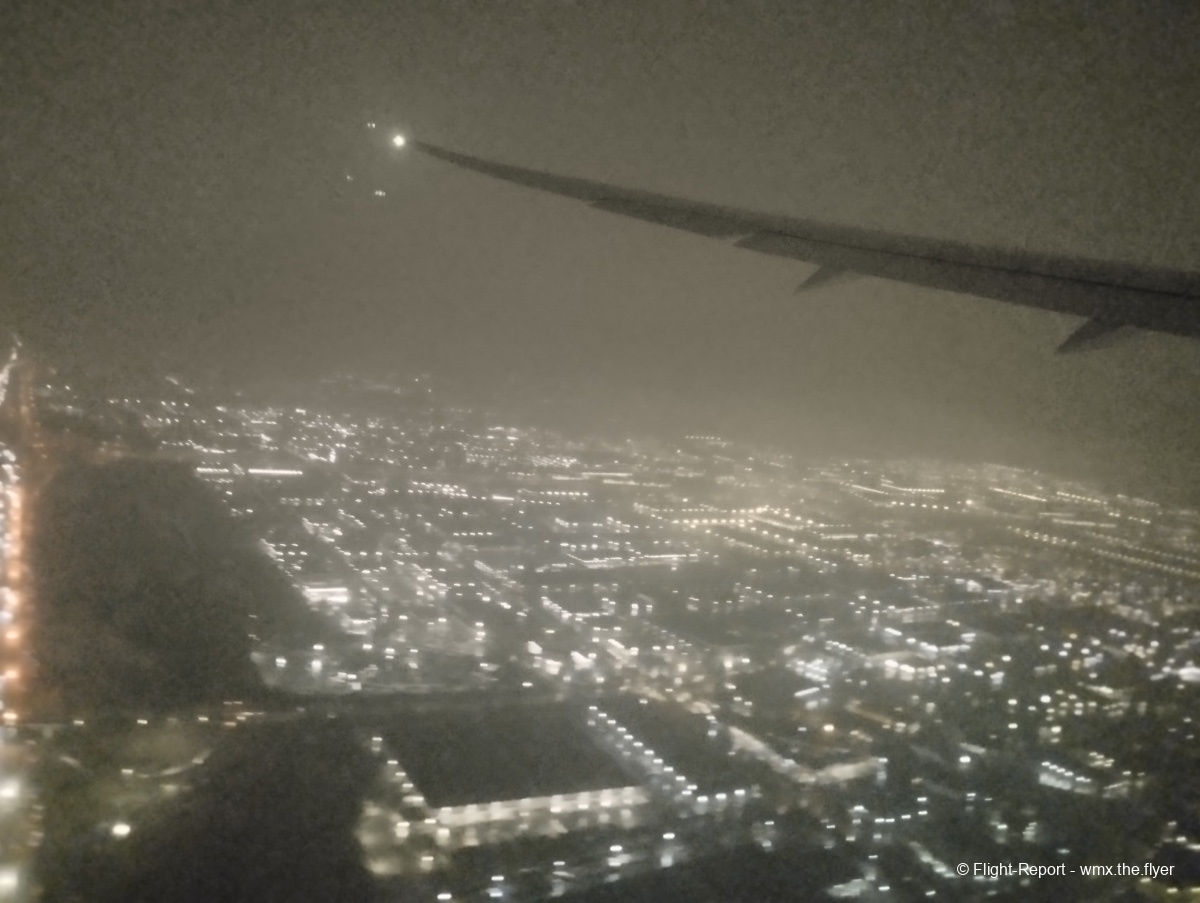
Flight Path
Now is a good time to take a look at our flight path. Our route out of Toronto, Ontario (Canada) took us over Quebec (Canada), Newfoundland and Labrador (Canada) and the Atlantic Ocean, before we started our descent into Edinburgh, Scotland (UK).
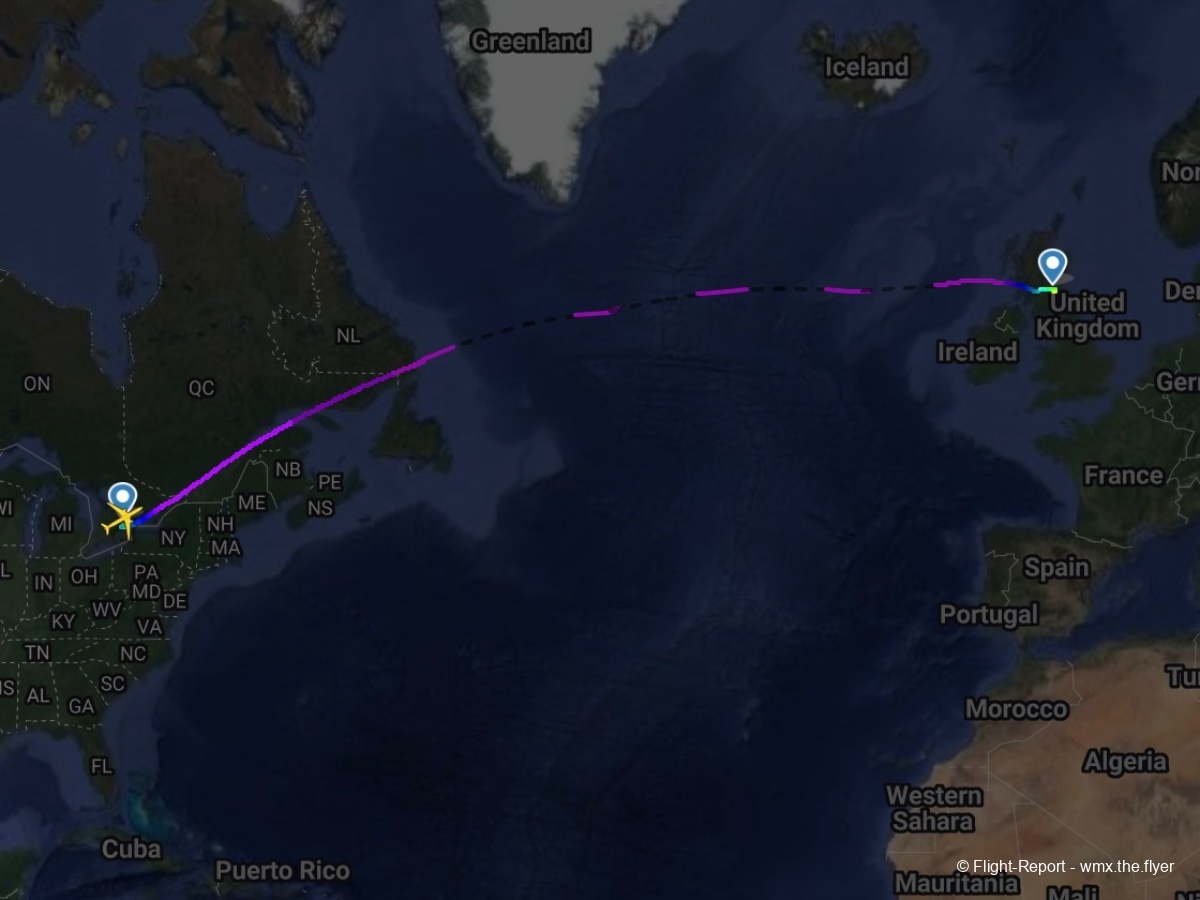
We cruised at altitudes of 39000ft (step climb) and 41000ft (final cruising altitude).
Dinner Sevice
About 45 minutes after takeoff, the after-takeoff dinner service started. As usual, preorder meals were served first, after which the cabin crew members pushed trolleys up each aisle offering each passenger a meal and drink from the standard selection. Being in the last row, I was among the last to be served my meal. Each meal was served on a tray, consisting of a cold appetiser, a hot main dish, a bread roll, a dessert, and a bottle of water. I ended up getting both hot options (the classic choice between chicken and pasta) since there were meals left over. Plastic single-use utensils were also provided. Presentation of the meal was fine, just that there did not seem to be much colour and contrast, making it seem slightly dull.
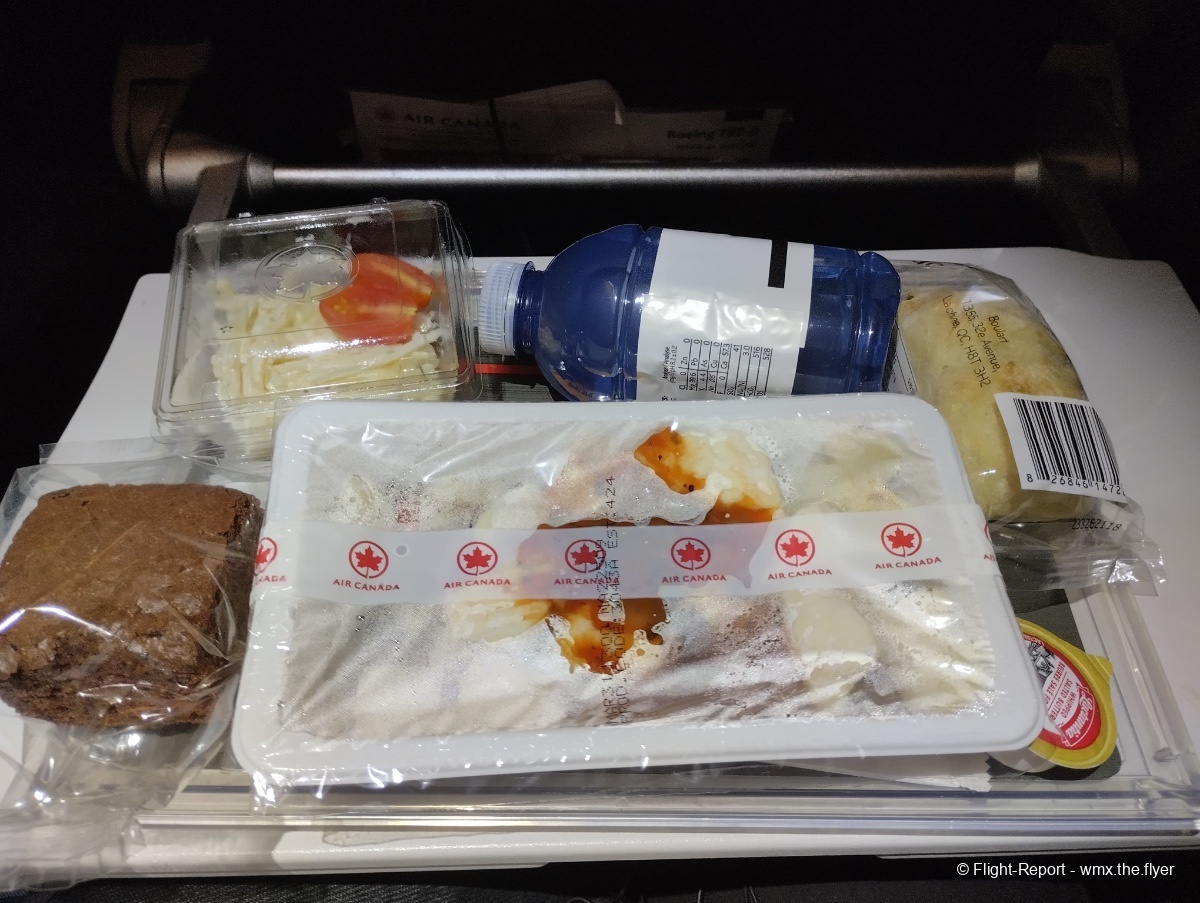
Appetiser: Potato Salad
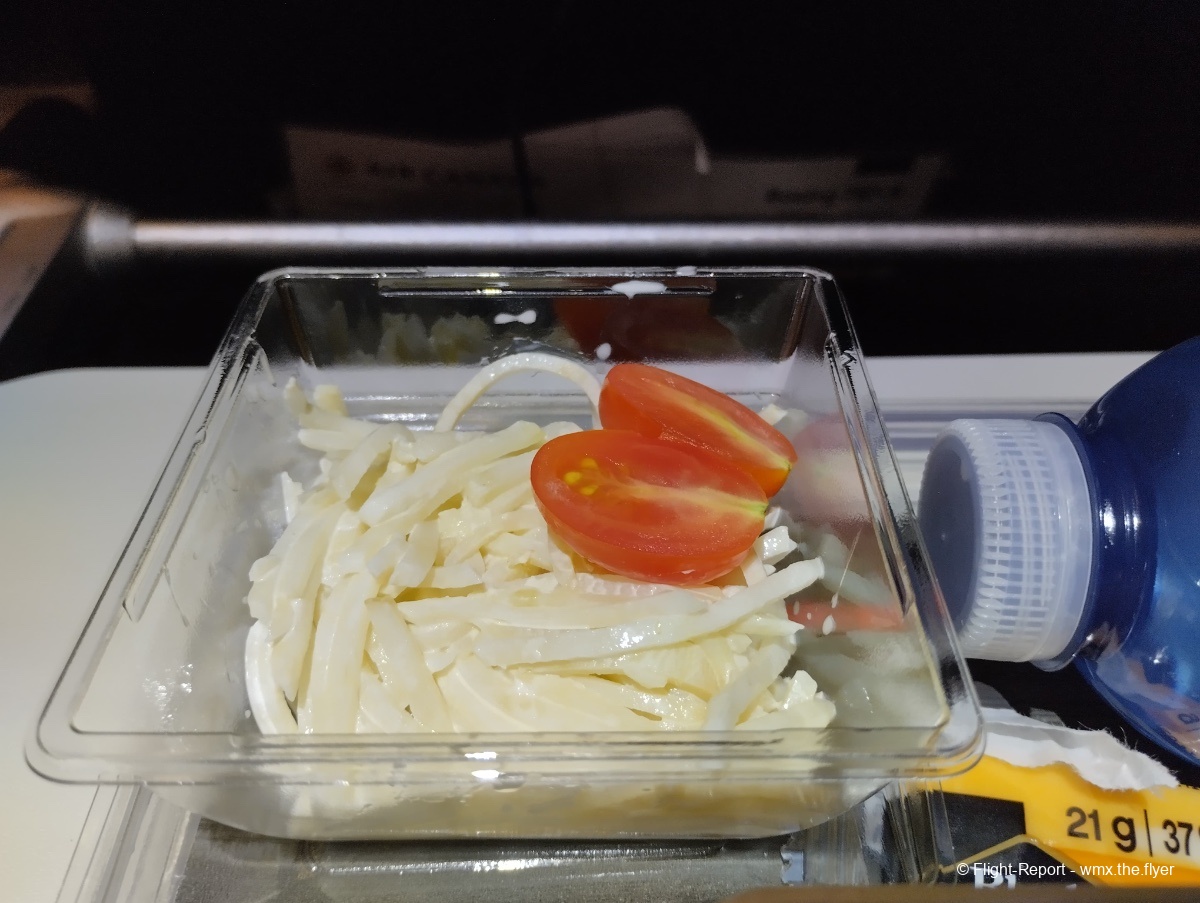
The appetiser was a small cold potato salad, consisting of shredded potatoes in mayonnaise, with s sliced cherry tomato on top for garnish. This was far from an exciting appetiser item, nor was it the most creative, but ultimately it tasted fine, just served a little too cold for my liking.
Main: Chicken with Potatoes and Bell Peppers
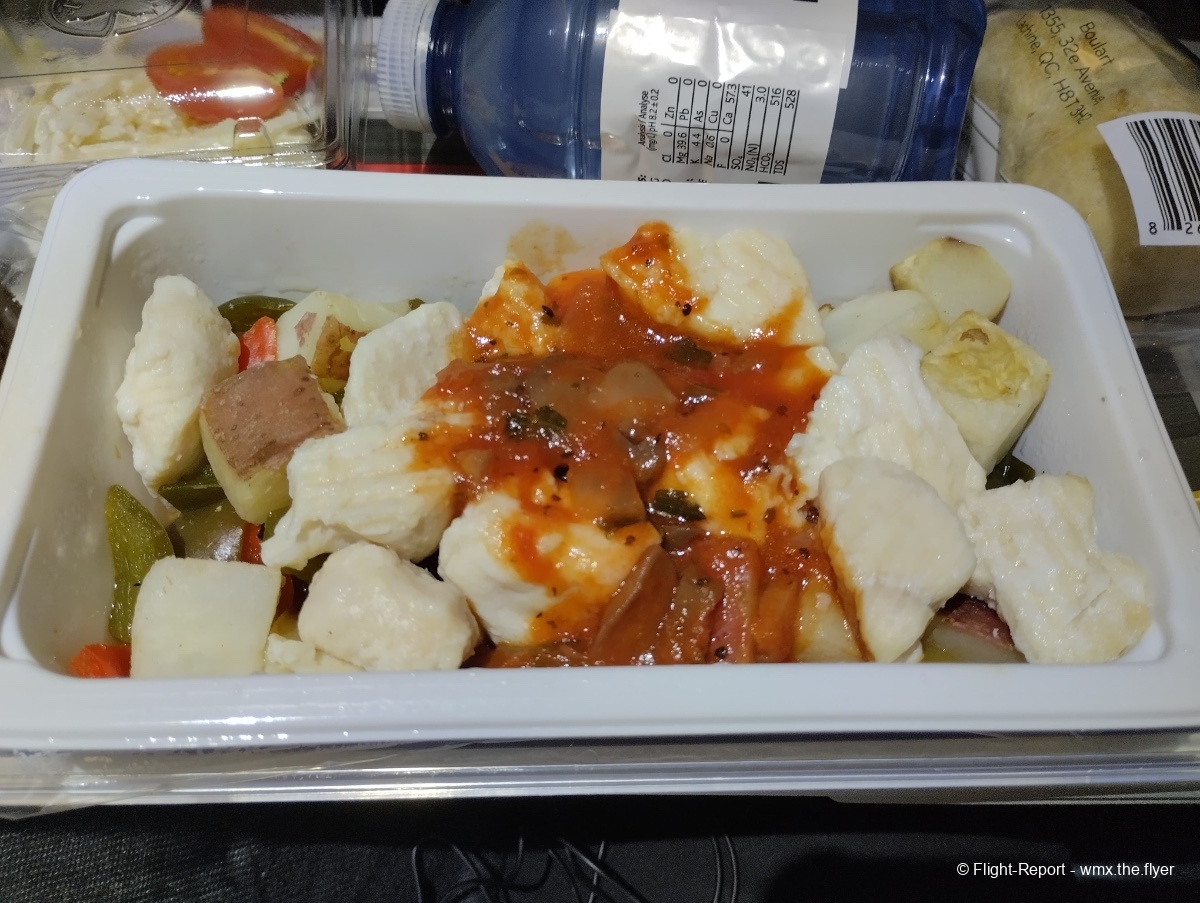
The non-vegetarian main course was this dish featuring some boiled chicken bites with little chunks of potato and small pieces of bell pepper, finished with some tomato sauce. While certainly edible, this was by far the blandest dish I had seen the whole year of 2023; every element of the dish seriously lacked flavour. On top of that, the chicken was a little rubbery in texture. The portions were also too small for me.
Main: Mushroom Mac and Cheese
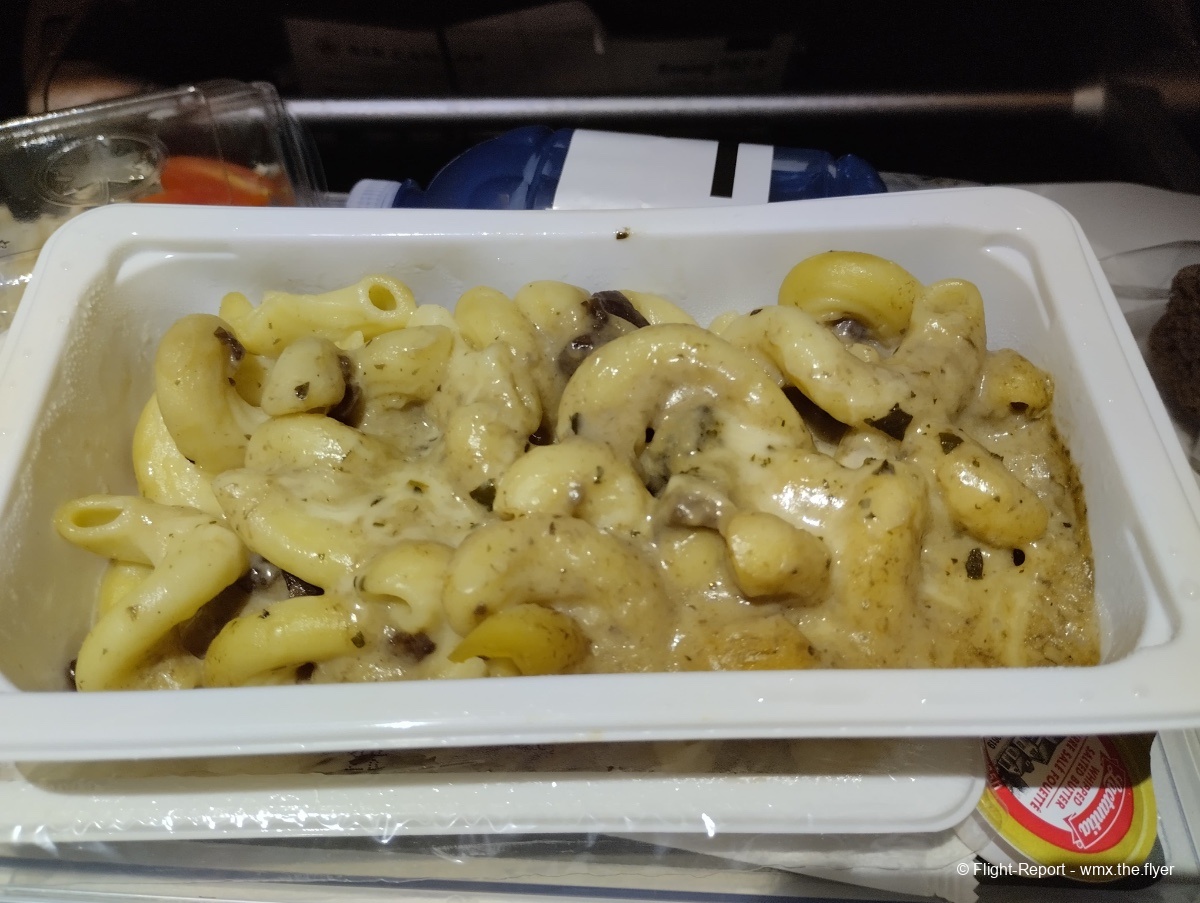
The vegetarian option was, as usual, pasta. This was a mushroom-infused mac and cheese type of dish. This had more flavour and was definitely tastier than the chicken dish, though this was still not the highest of quality, and the mushroom did smell a little like rubber (but then, that is just how mushrooms smell in the air).
Bread Roll served with a block of Cheddar Cheese
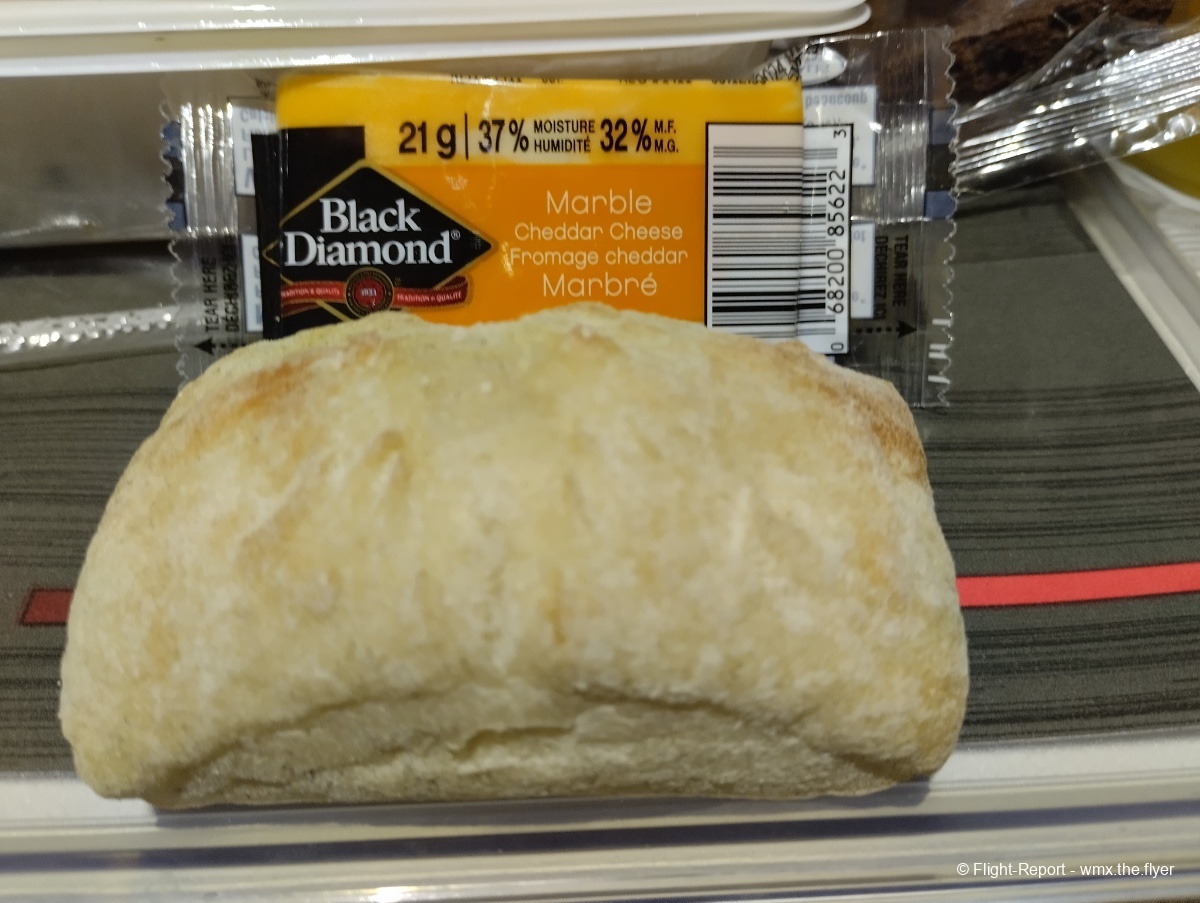
The bread roll was warm when served and had a fluffy inside, though the exterior of it was a little too powdery for my liking.
Dessert: Packaged Chocolate Cake
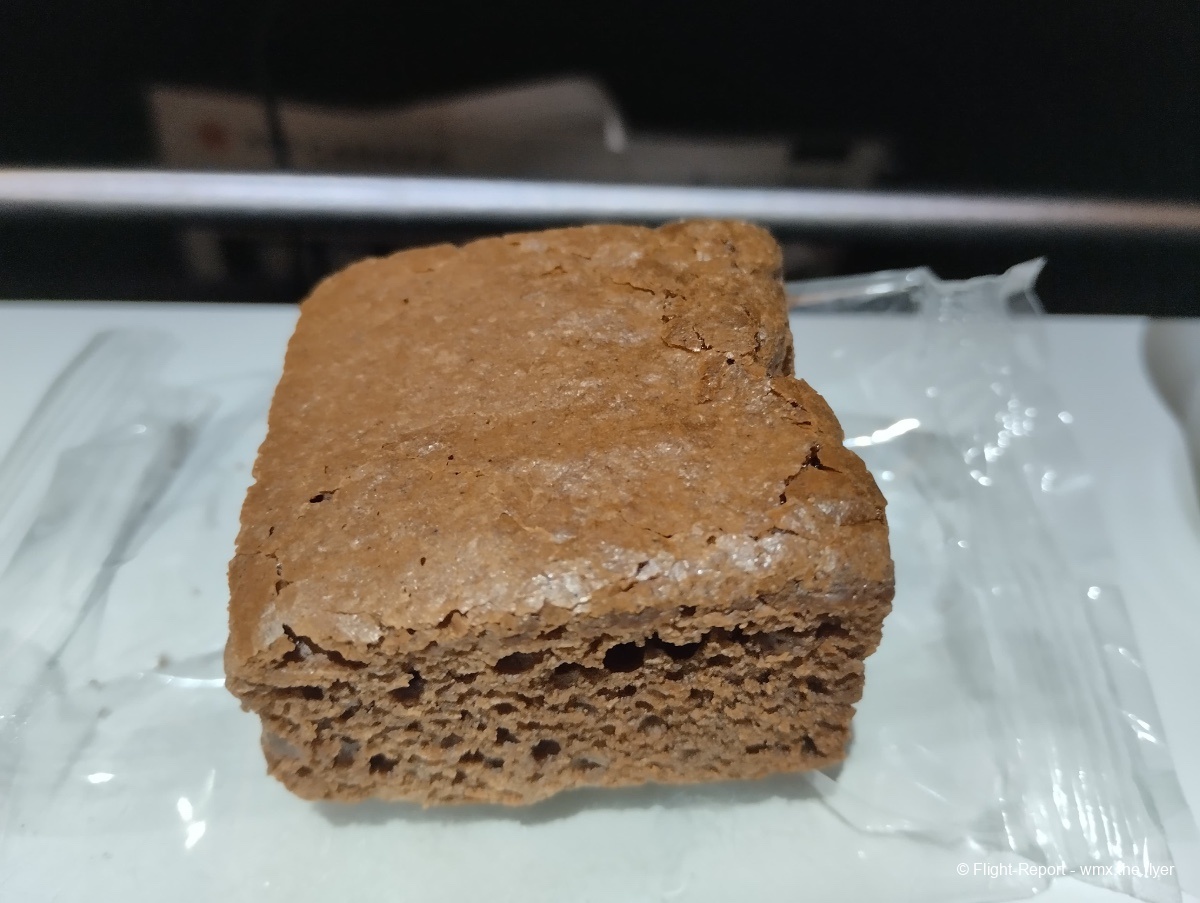
This was rich and sweet while maintaining some fluffiness, though I found it to be a little dry.
Drink: Orange juice
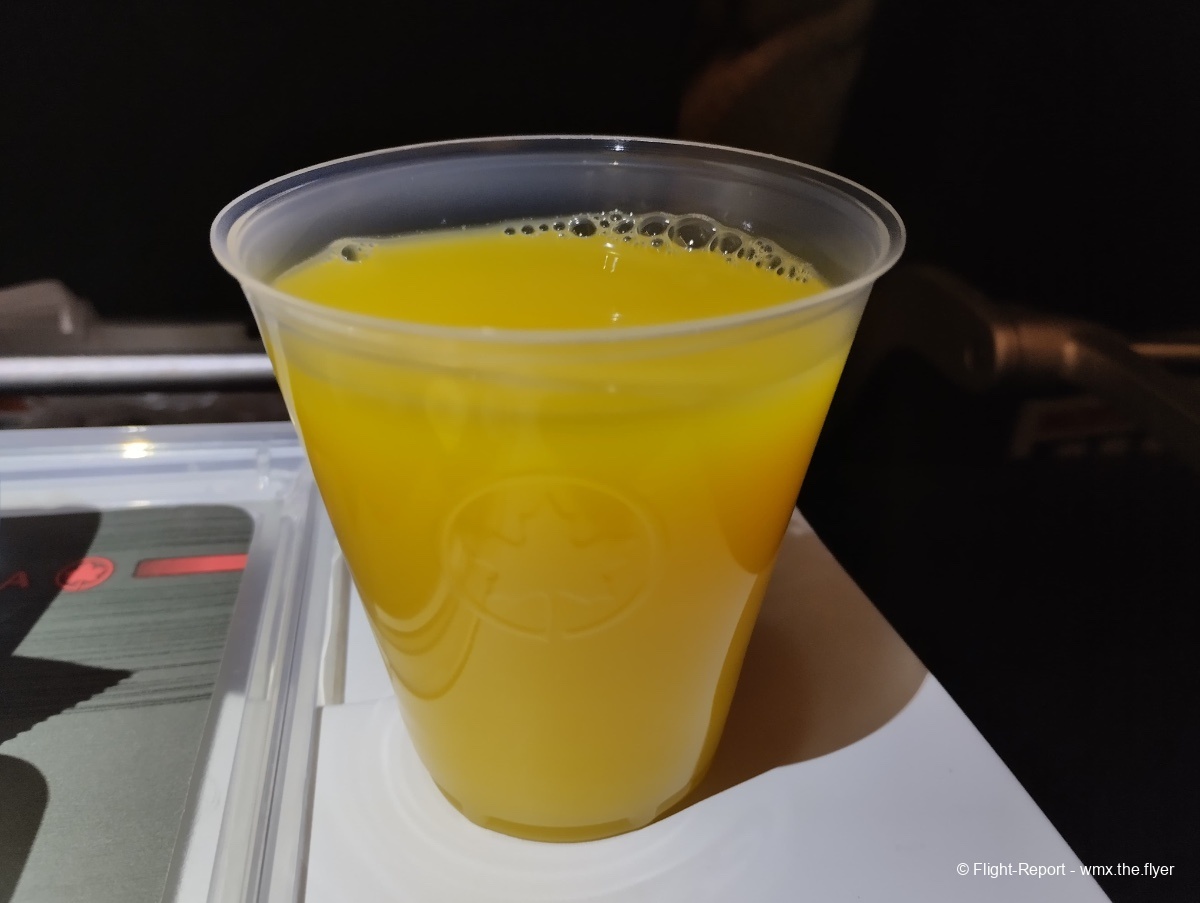
The serving was very generous with this one. Tasted about the same as always.
Drink: Hot coffee with milk and sugar
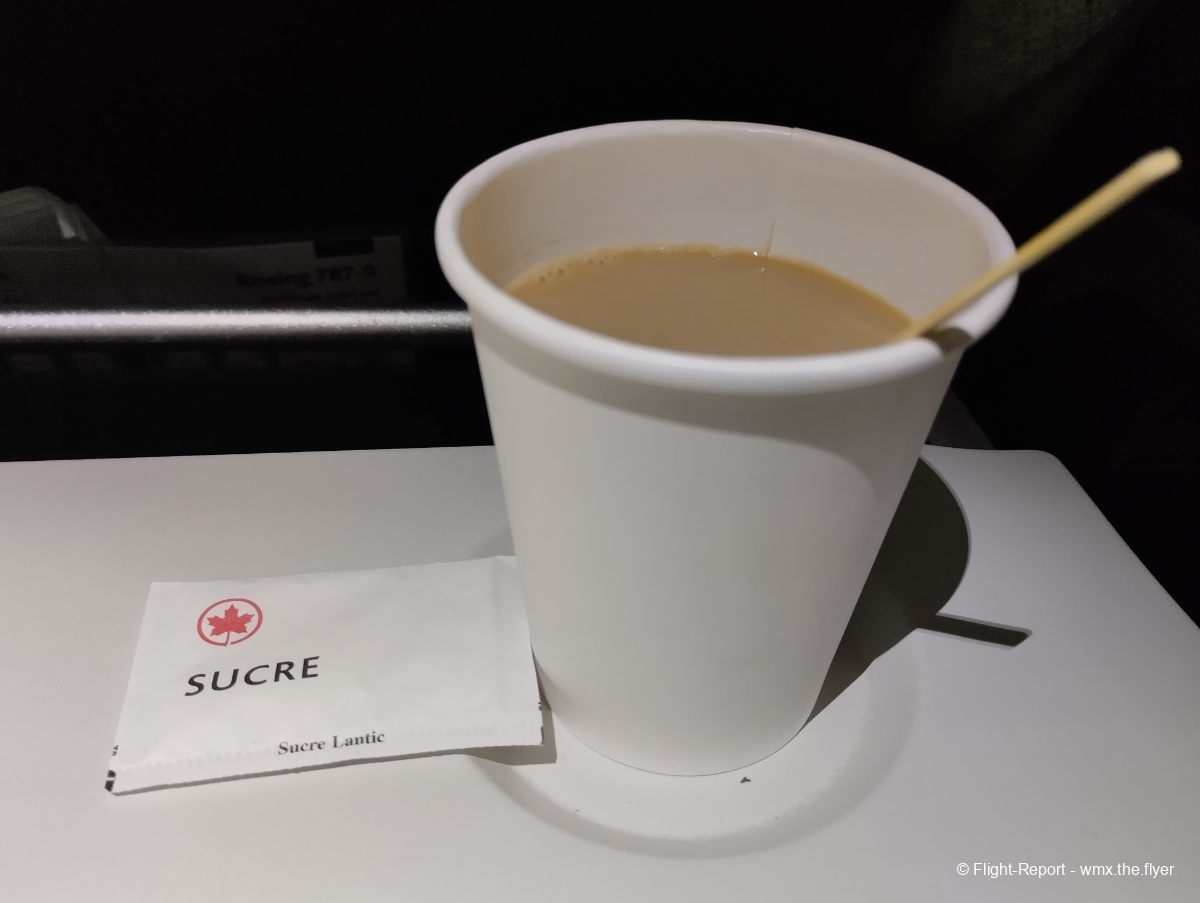
This was served with the milk already poured in by the flight attendant, and a single sachet of sugar was provided at the side.
DINNER SERVICE SCORES: 6/10
More of the chocolate cakes as well as bottles of water were readily available to passengers on a trolley during the flight.
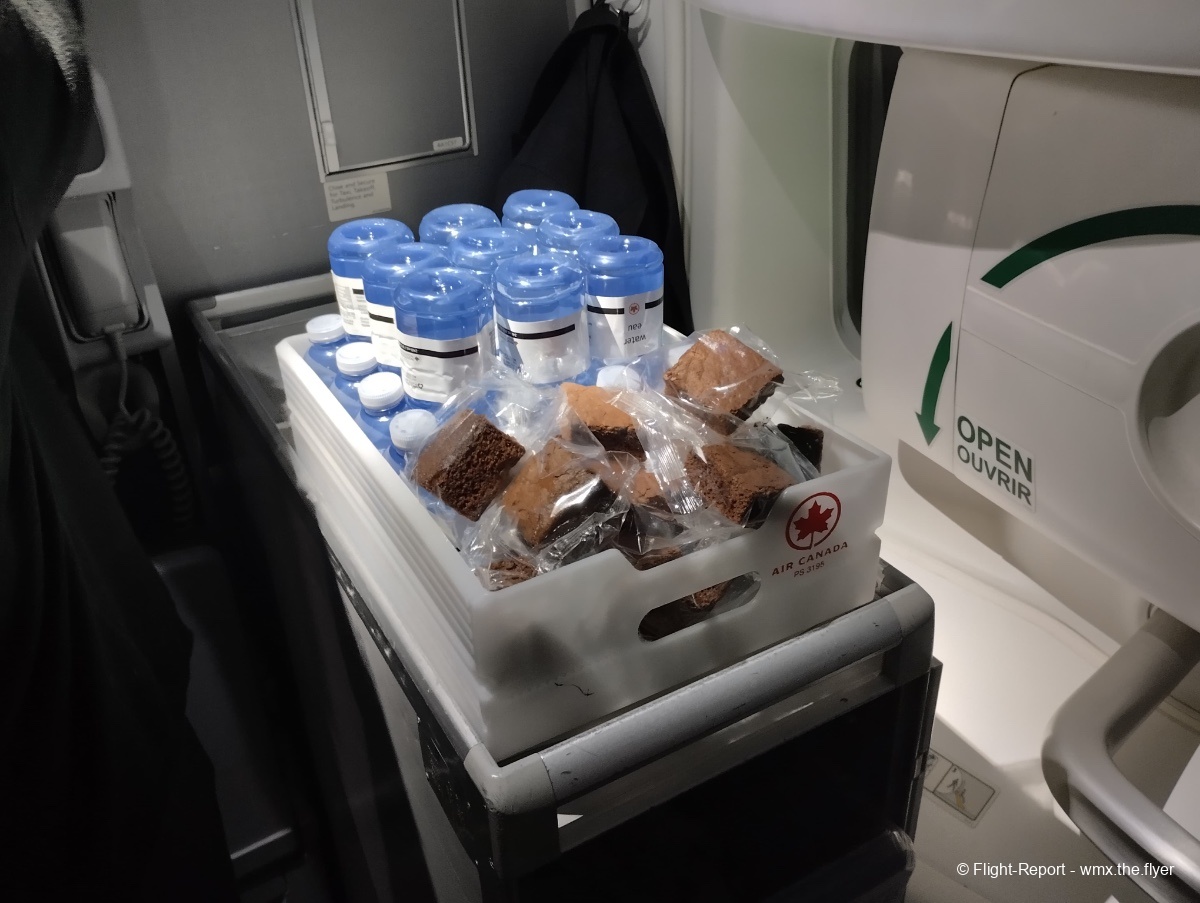
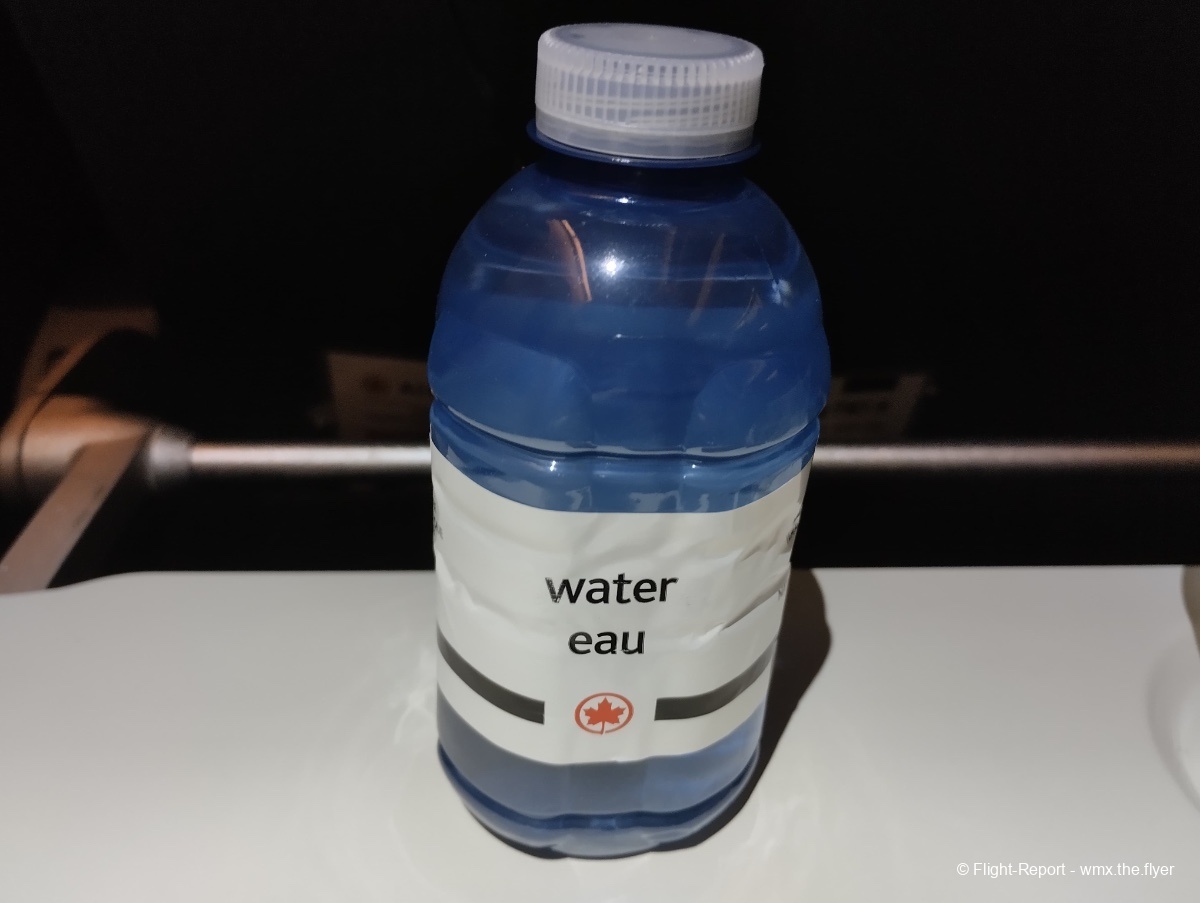
Amenities
No amenity kits were provided in economy class on this flight. At each seat during boarding was a pillow and a blanket. The pillow was of a decent size and came wrapped in a scratchy and cheap-feeling pillowcase, though it provided decent comfort when used to support by lower back when reclined.
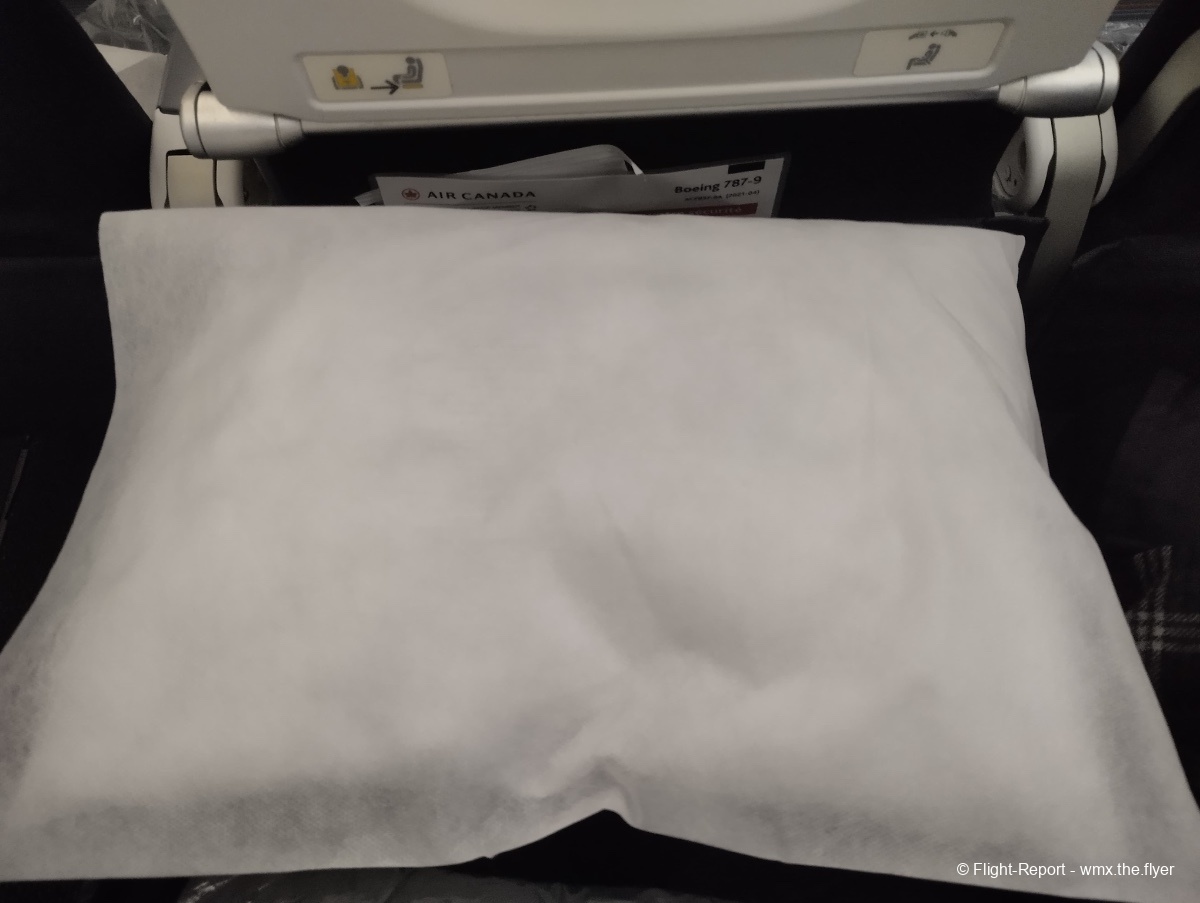
The blanket came wrapped in some plastic packaging, and was made of a pretty comfortable but very warm material
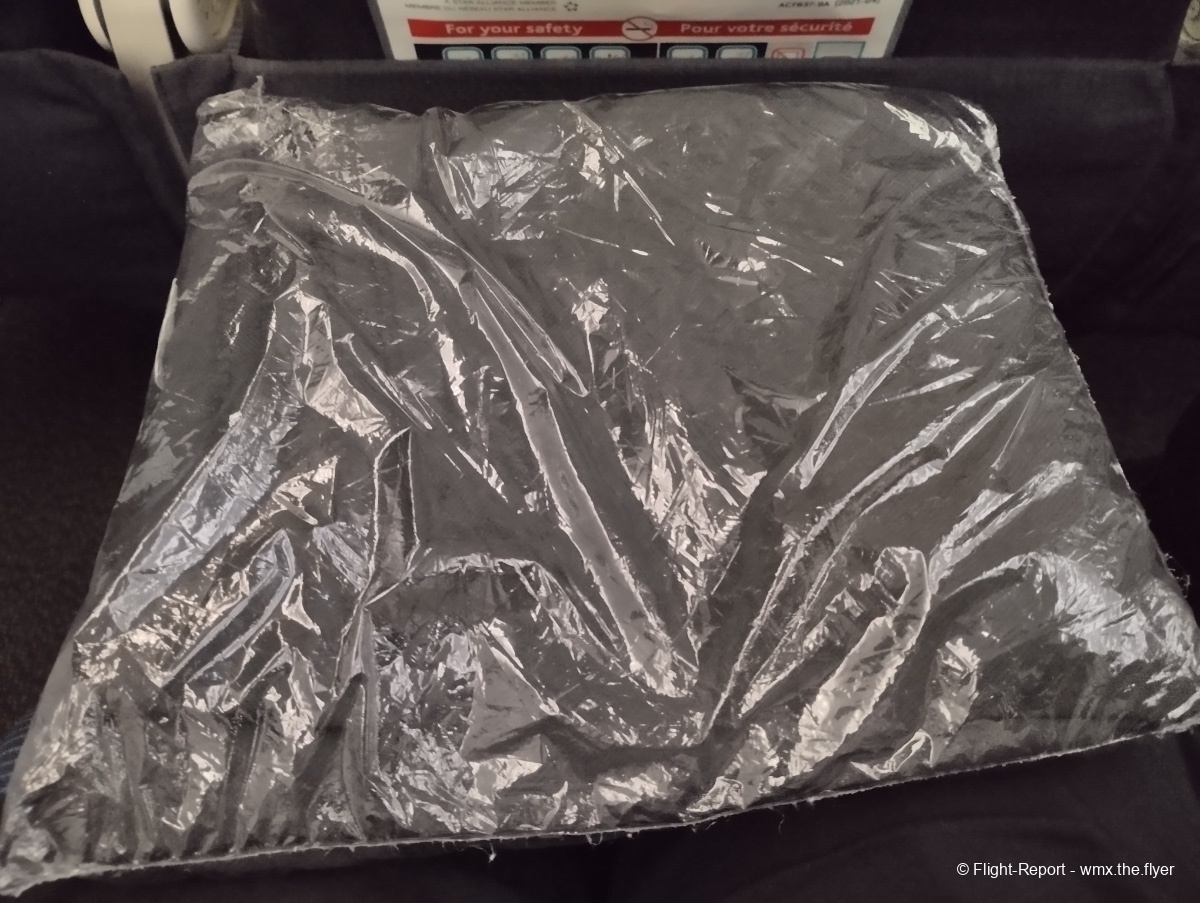
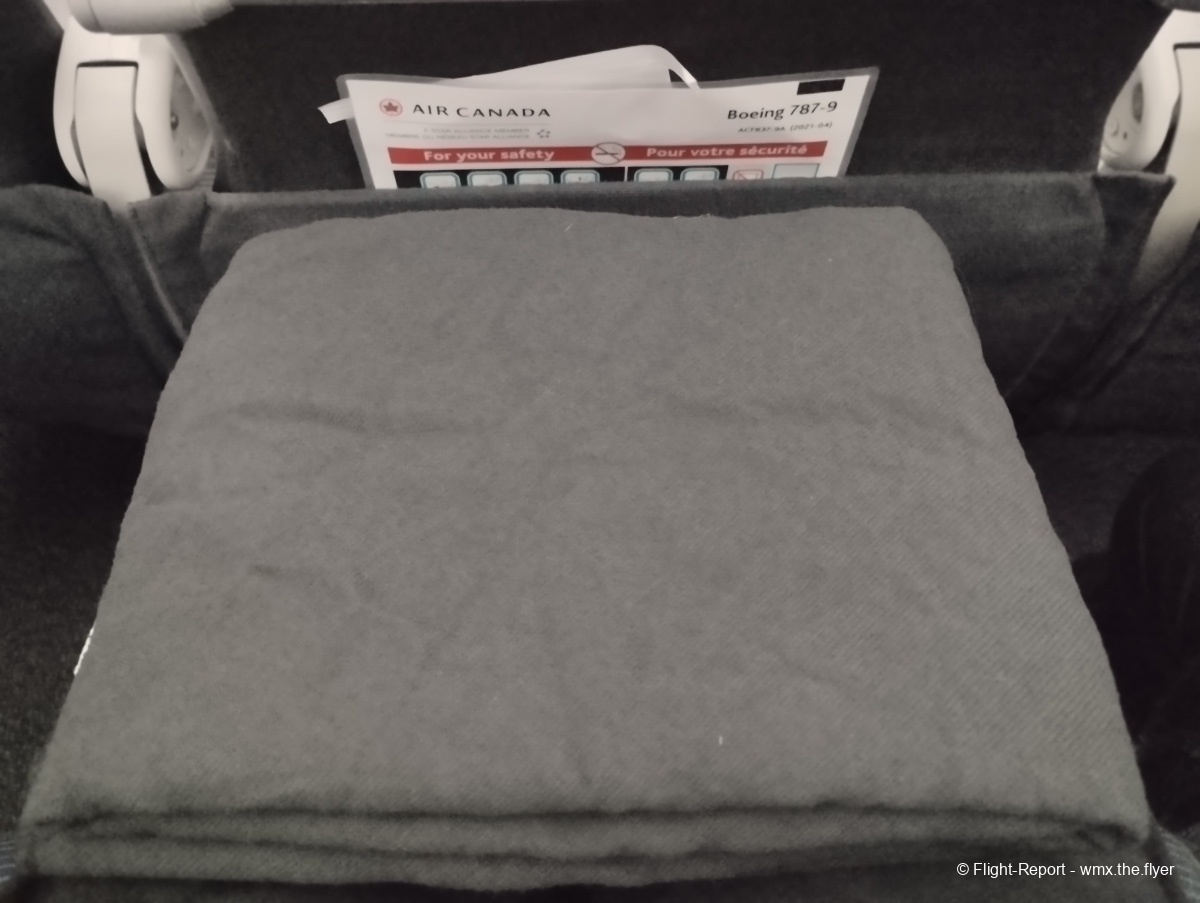
Lavatories
There was one lavatory directly behind me, which I exclusively used during the flight. This was kept pretty clean throughout the flight. It was stocked with the most basic of amenities such as handwashing liquid, though nothing special was found. I do really like the maple tree design they incorporate into the walls of the lavatories.
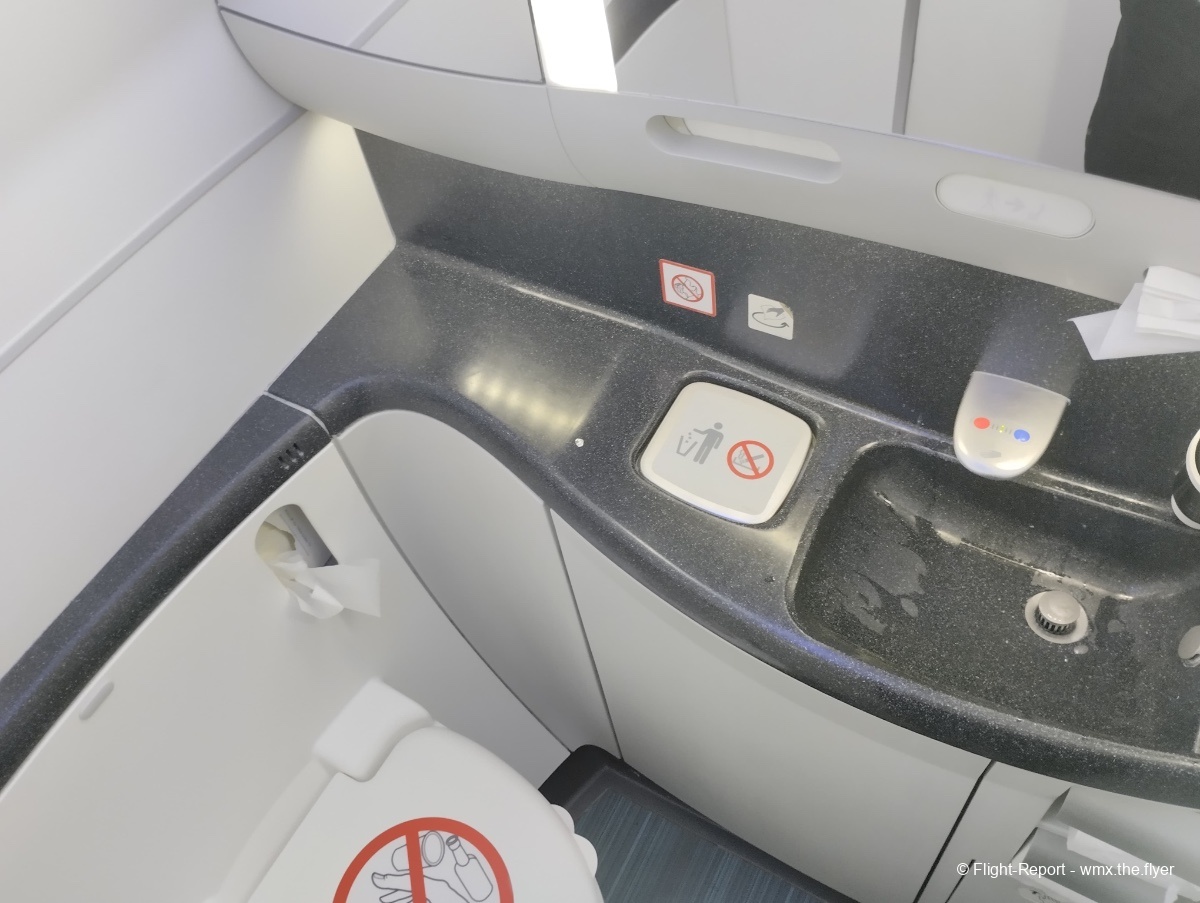
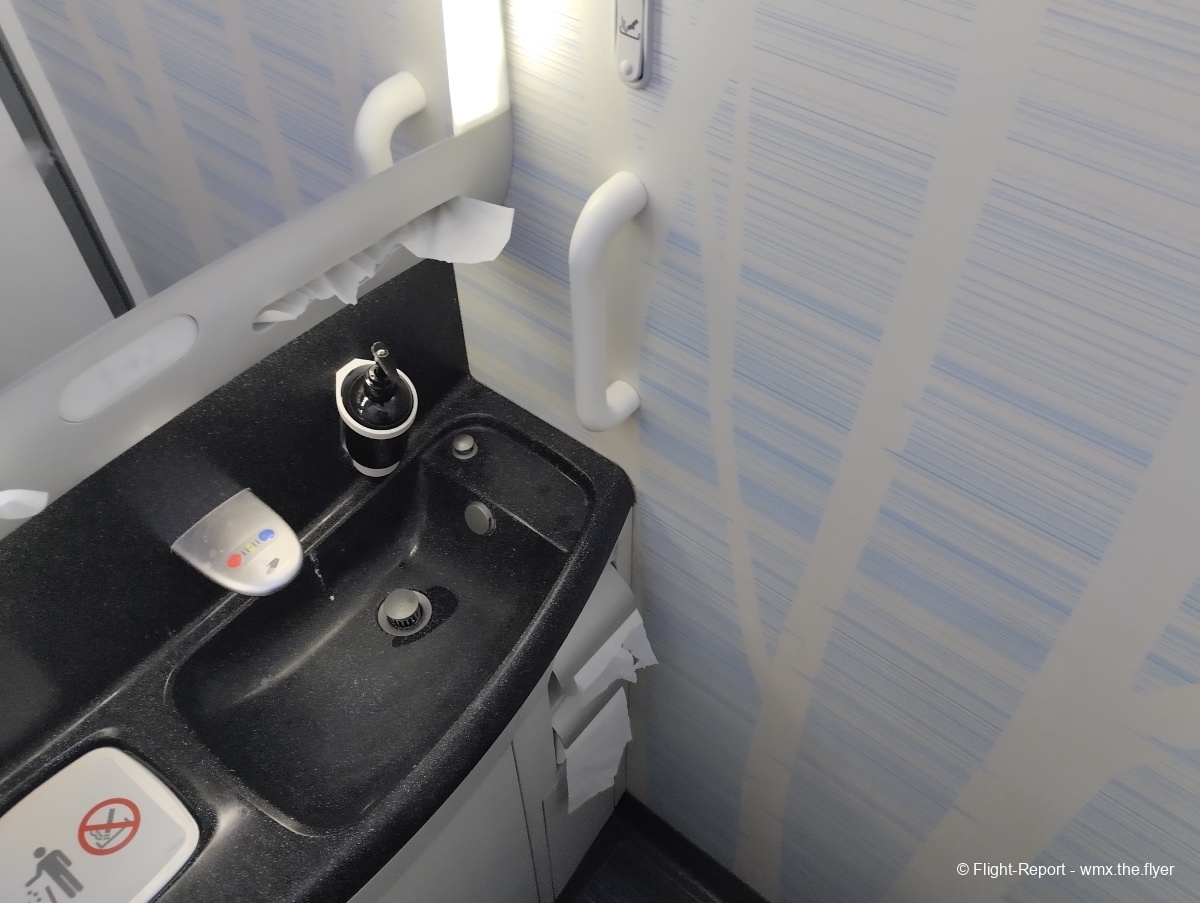
AMENITIES SCORE: 6/10
In-Flight Entertainment
IFE System
Each economy seat comes equipped with a 9-inch IFE touchscreen with content provided by Panasonic’s eX1 system, and has high image quality while being responsive.
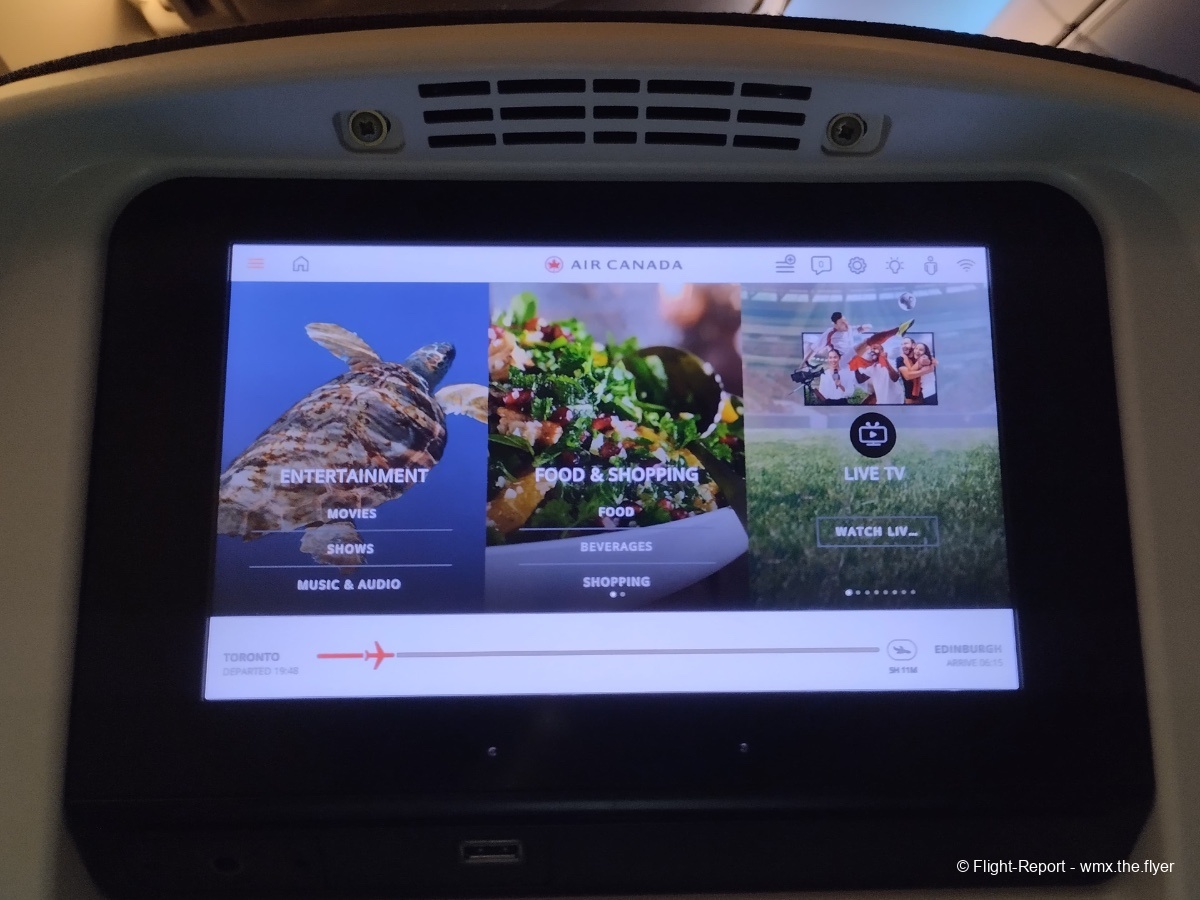
Interestingly, for the first half an hour or so in the flight the screen for every seat in the cabin displayed a blank screen with the Air Canada logo and showed the words ‘system not available’, until one other passenger brought this up to a cabin crew member, who then initiated a reset to the system. The issue was fixed about 15 minutes later just before I received my meal.
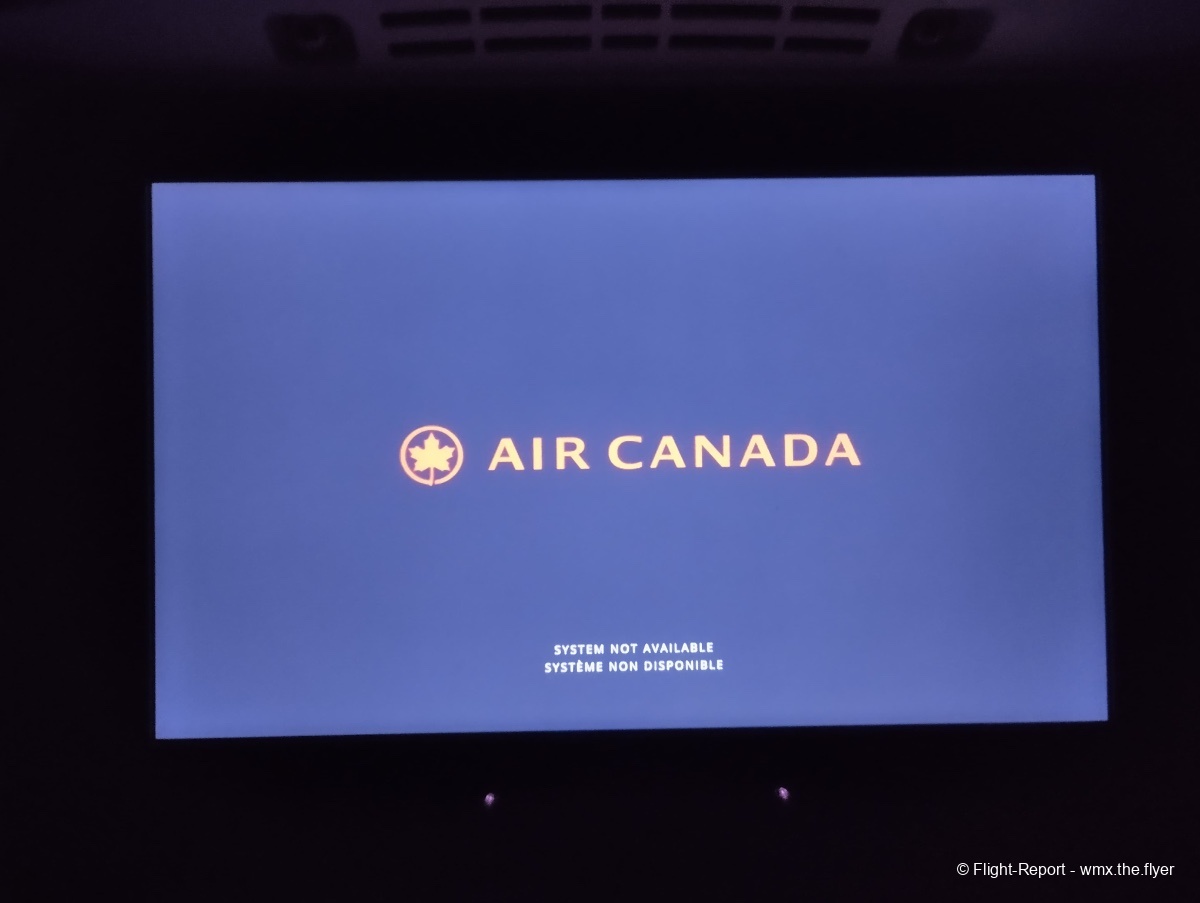
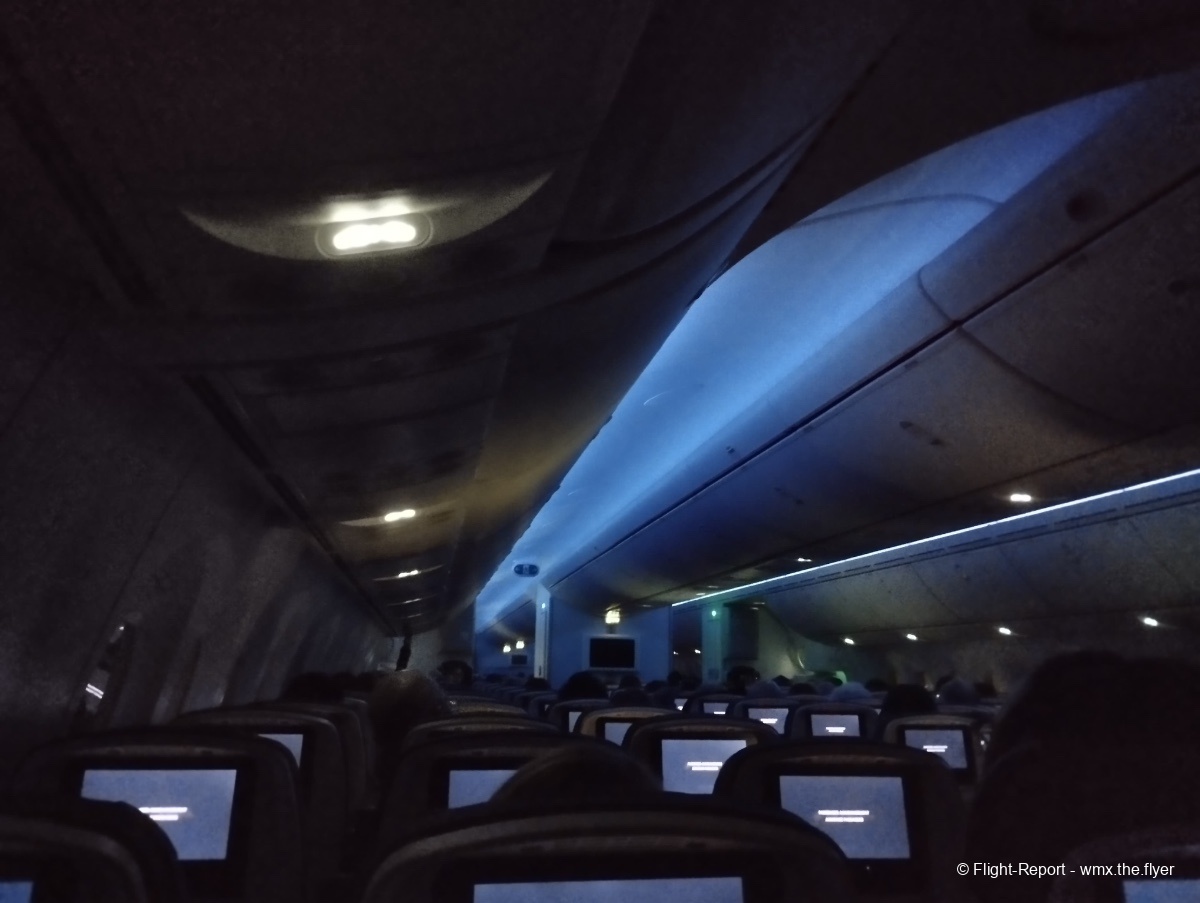
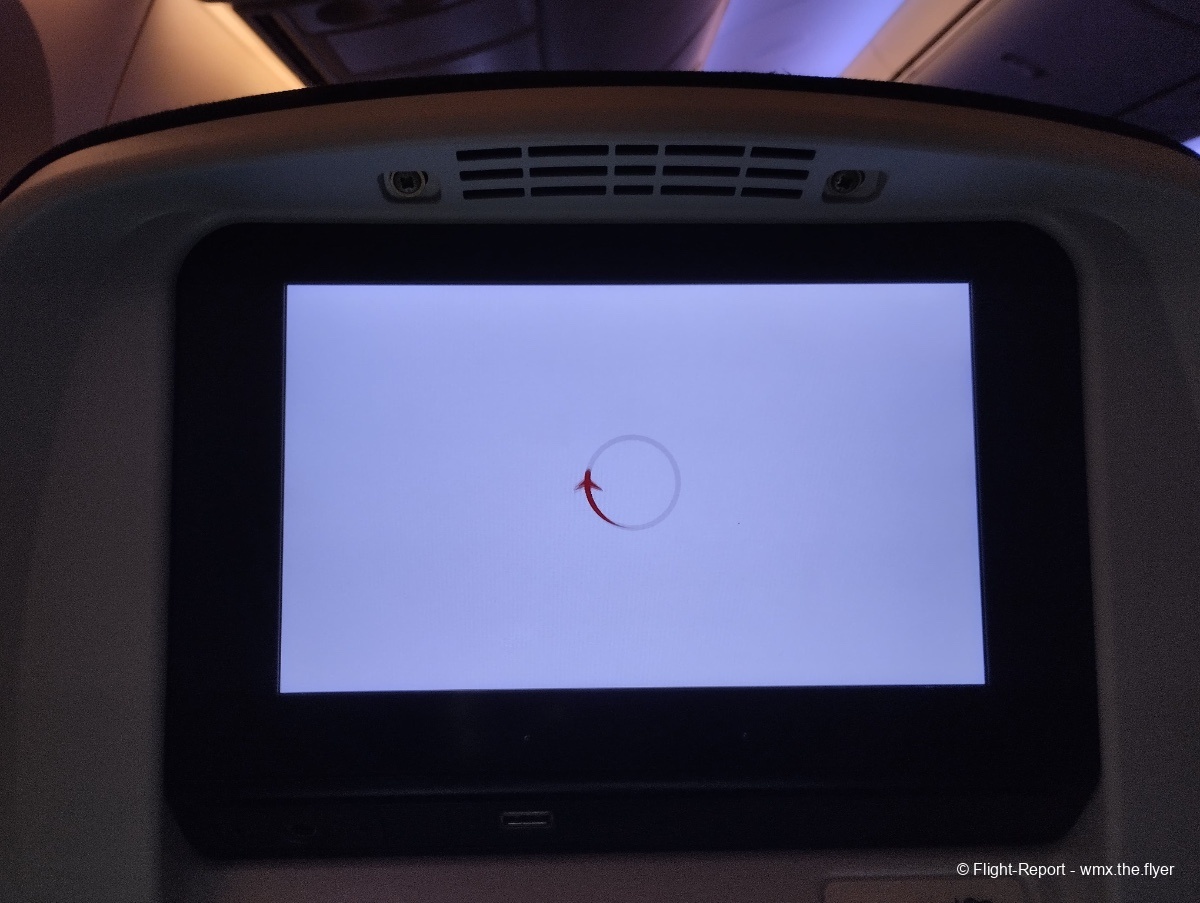
The selection of entertainment options were pretty decent with a collection of movies, TV shows, music, and games.
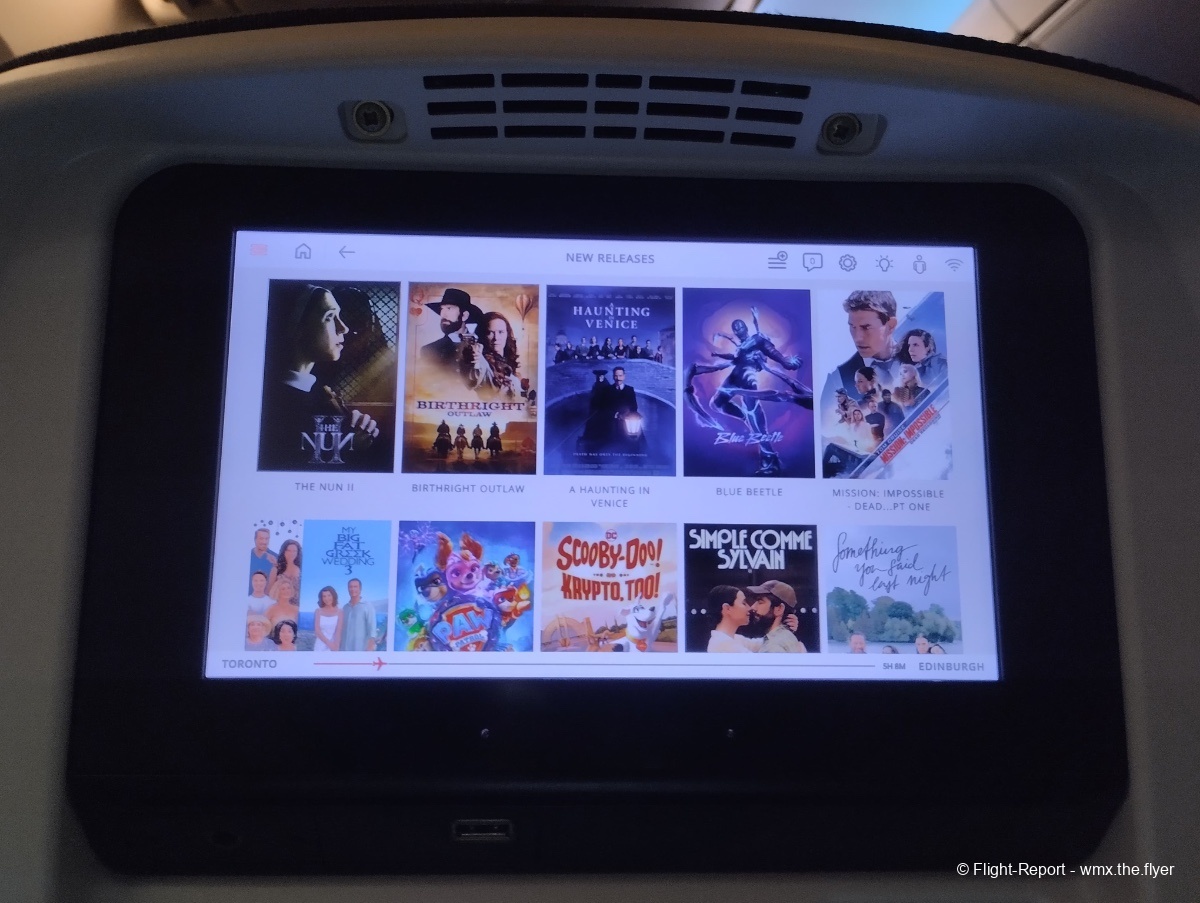
There was also a high quality interactive in-flight moving map.
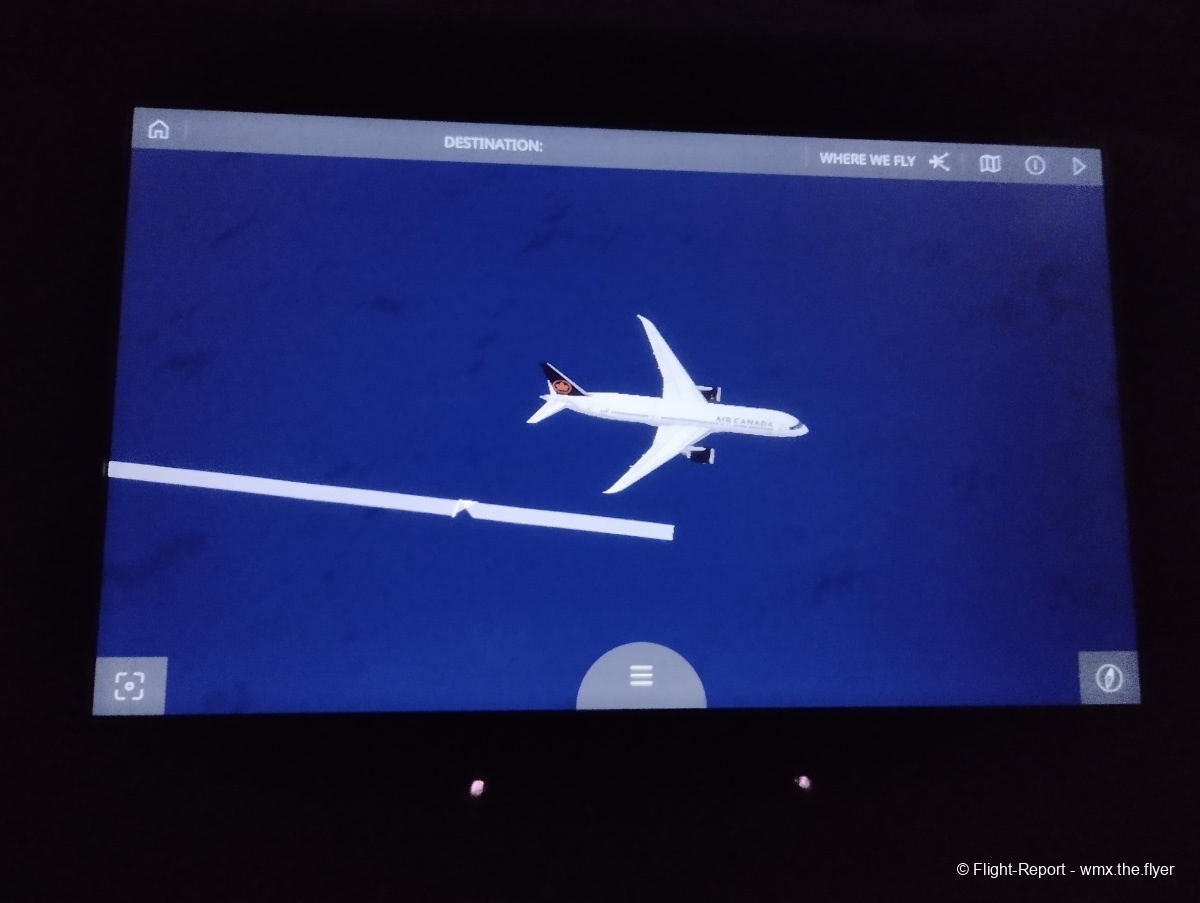
On this flight, I decided to watch ‘Nope’, another one of Jordan Peele’s works, which kept me entertained for the majority of the duration of the flight.
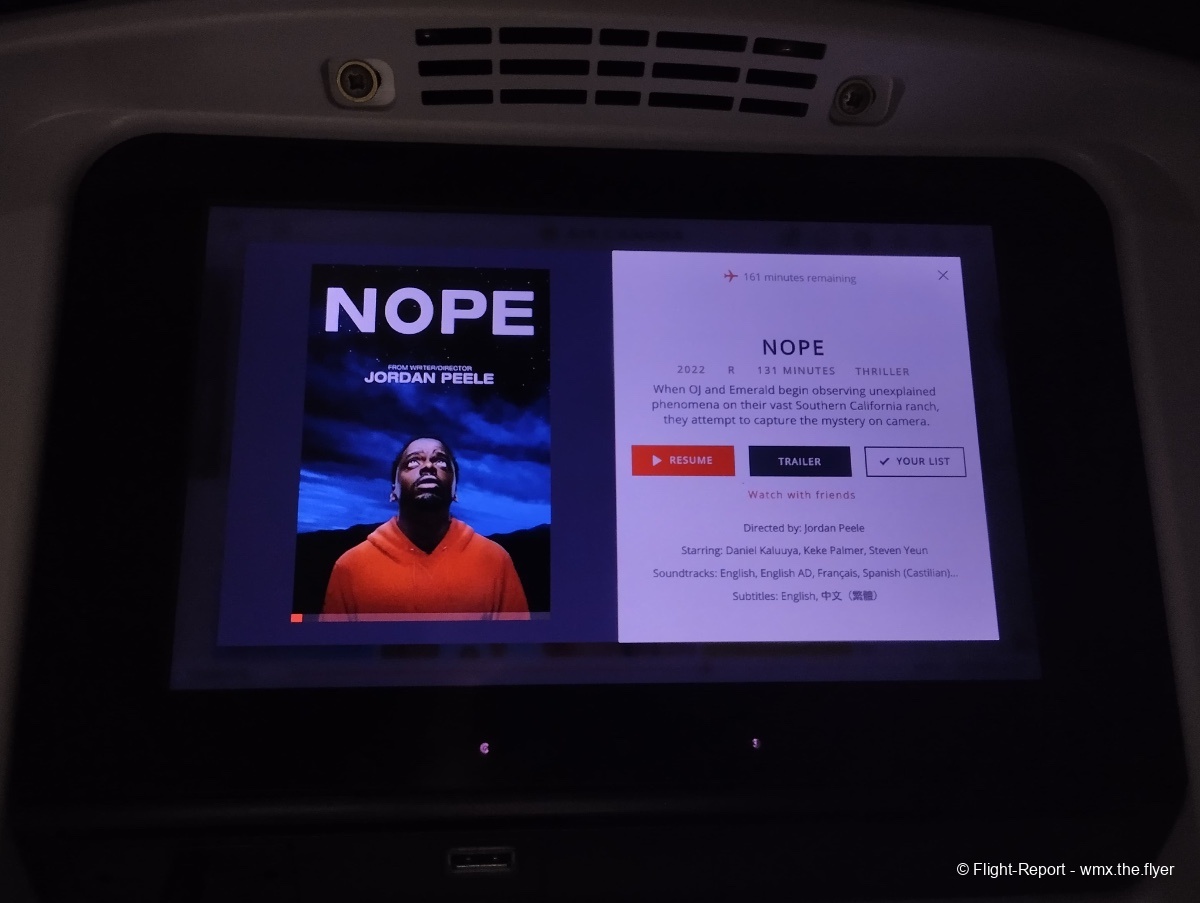
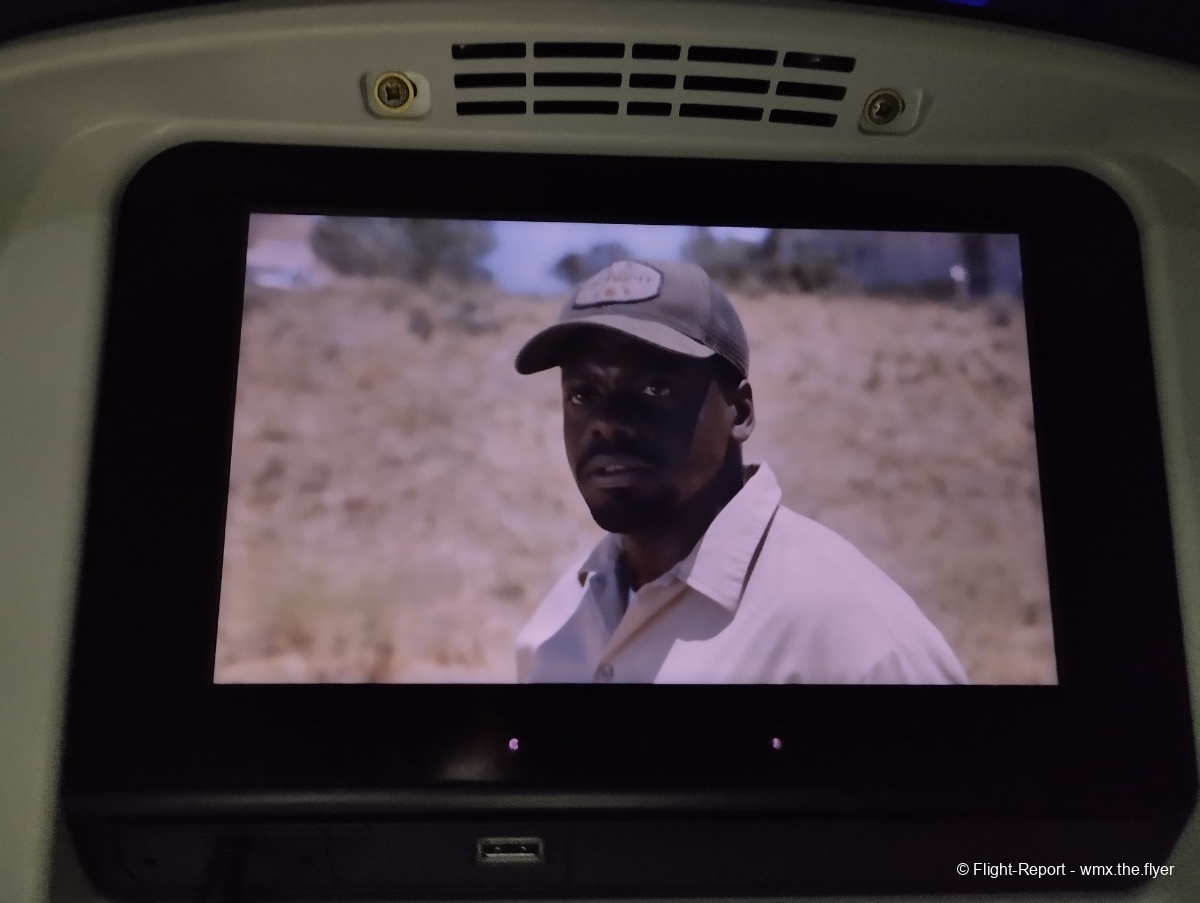
Cheap wired earpieces with a single headphone jack were complimentary.
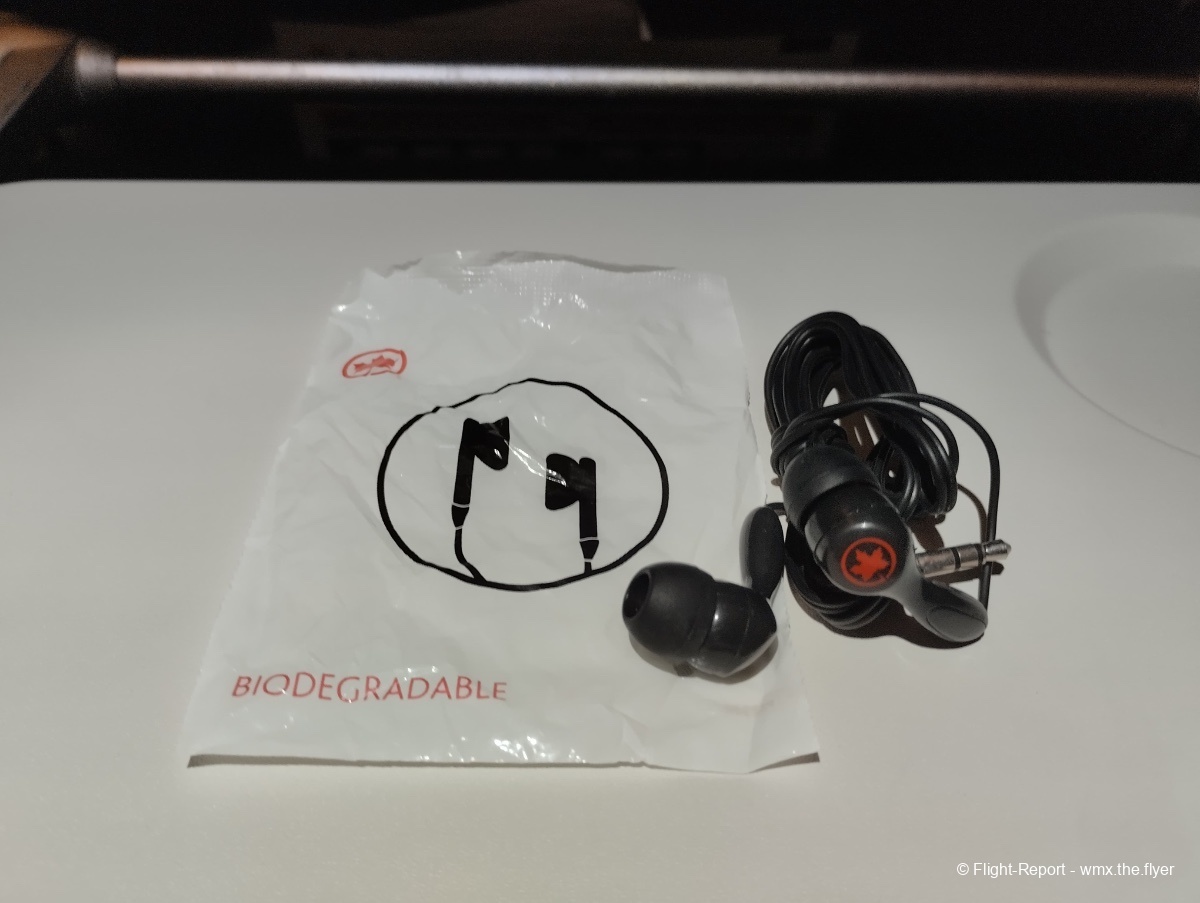
Onboard Wi-Fi
Onboard Wi-Fi was provided by Intersat’s 2Ku-band system. Passengers in economy class get free access to texting throughout the flight, with the option of purchasing Wi-Fi packages for higher levels and speeds of internet access.
IN-FLIGHT ENTERTAINMENT SCORES: 6/10
Breakfast (snack) Service
Around an hour before landing, the cabin lights were turned on again, with the cabin crew utilising the mood lighting to create a very beautiful atmosphere with light blue and orange hues to mimic a gentle sunrise.
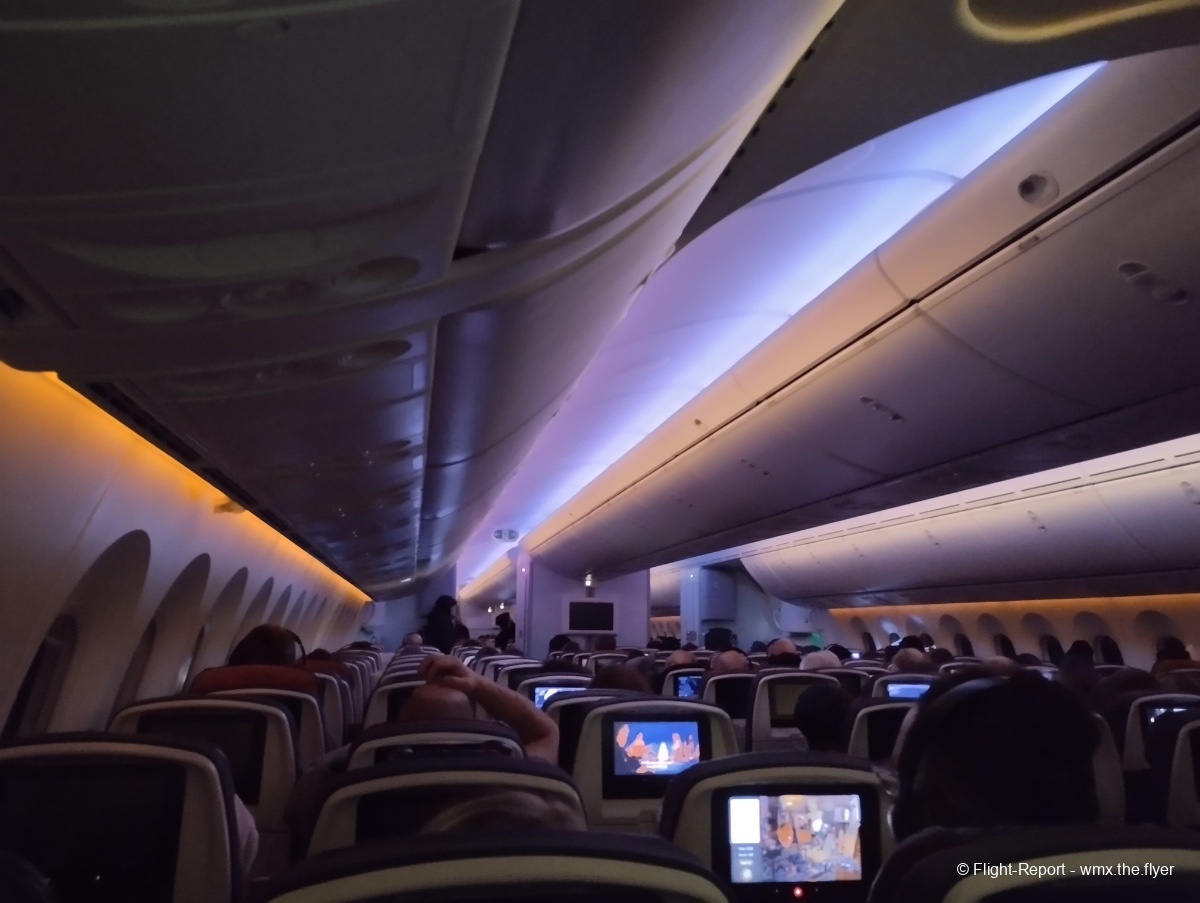
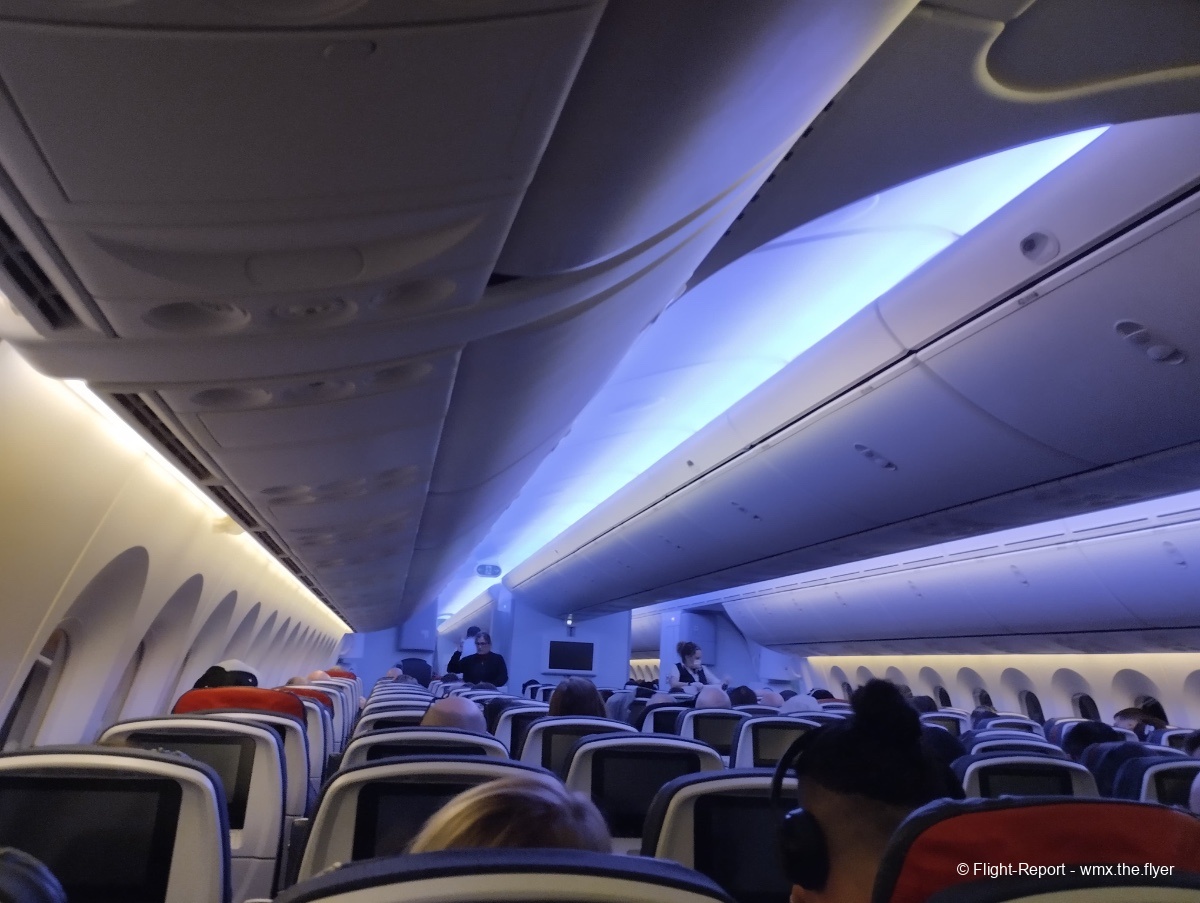
Rather than a full breakfast meal, a light snack was provided, this being just a few hours after the end of dinner.
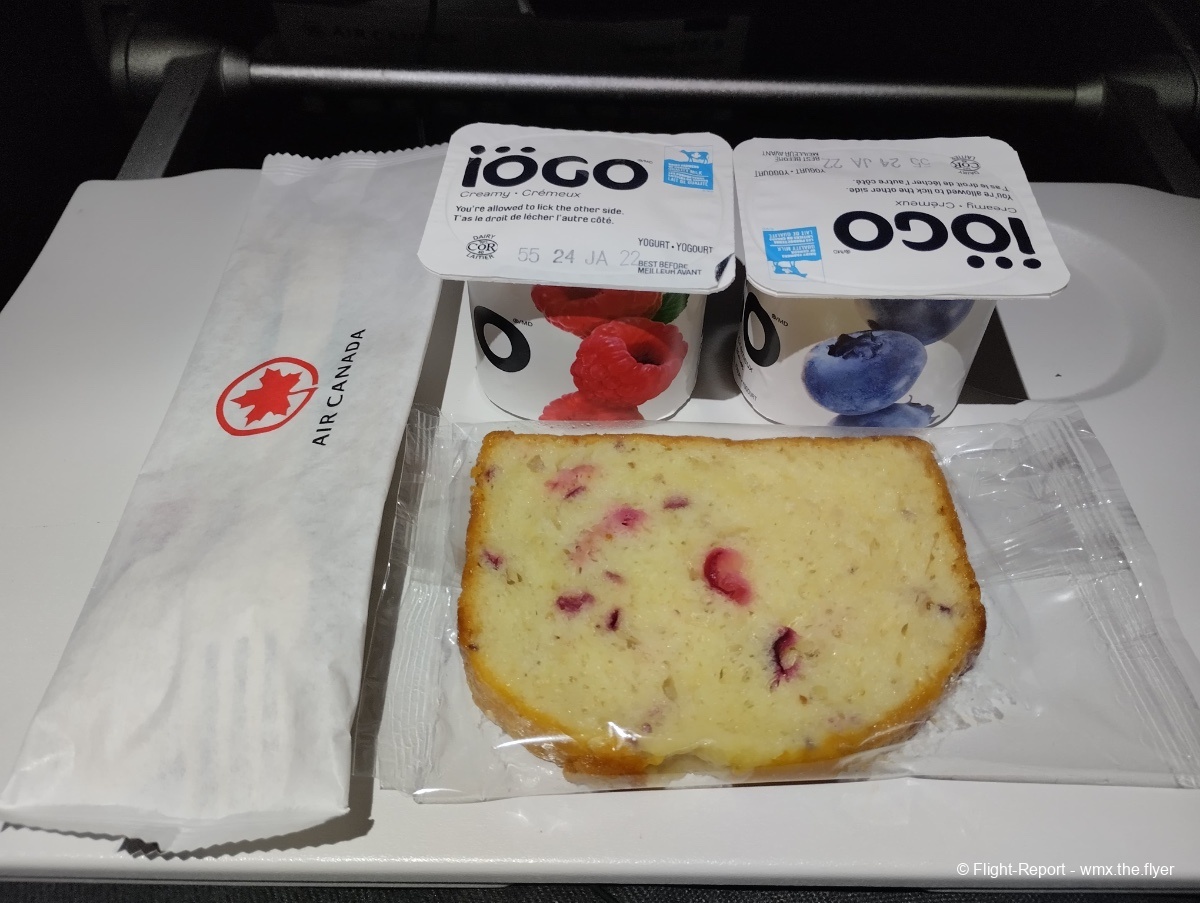
A slice of blueberry cake was handed out to each passenger; this was served warm and was tasty while being soft and warm, but was a little on the greasy side.
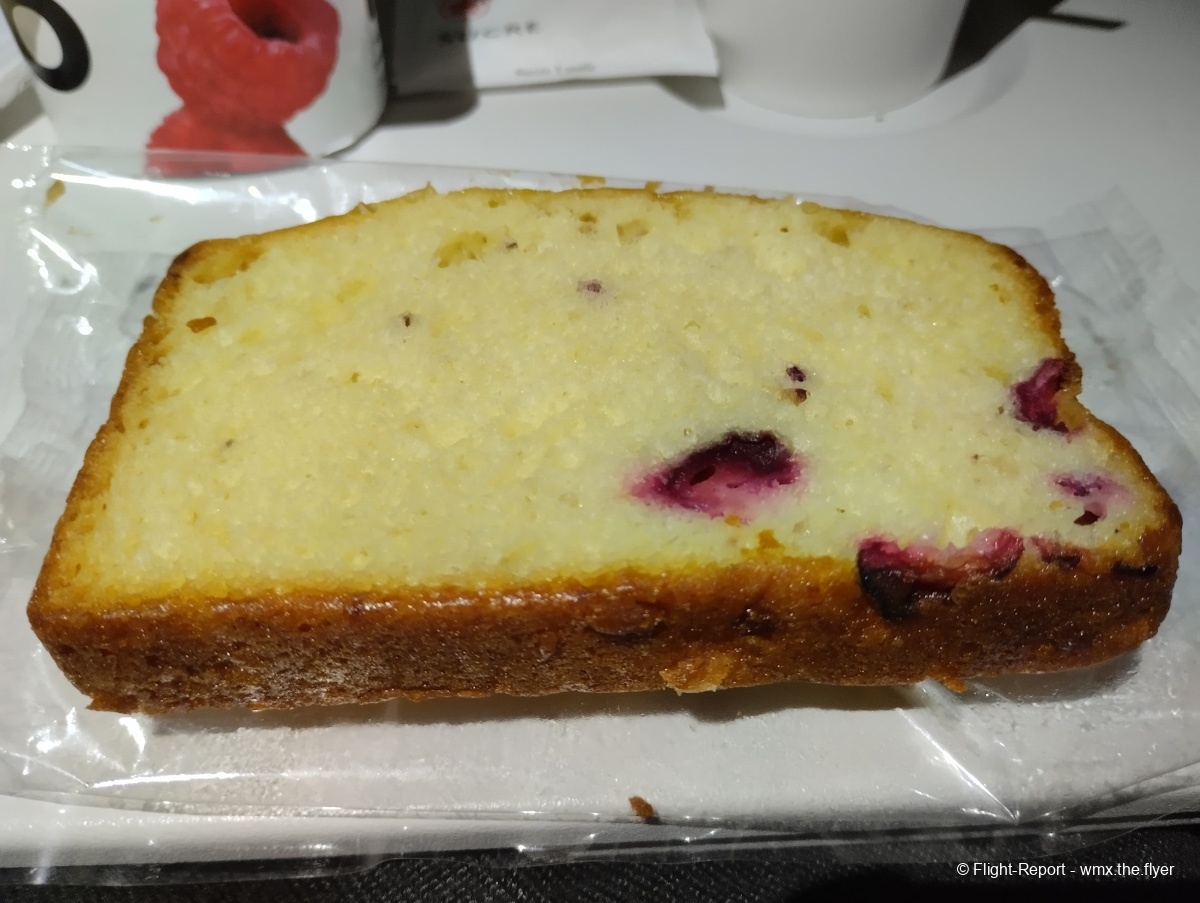
A small tub of yoghurt was also served to each passenger, with choices between raspberry and blueberry flavours. These tasted to standard.
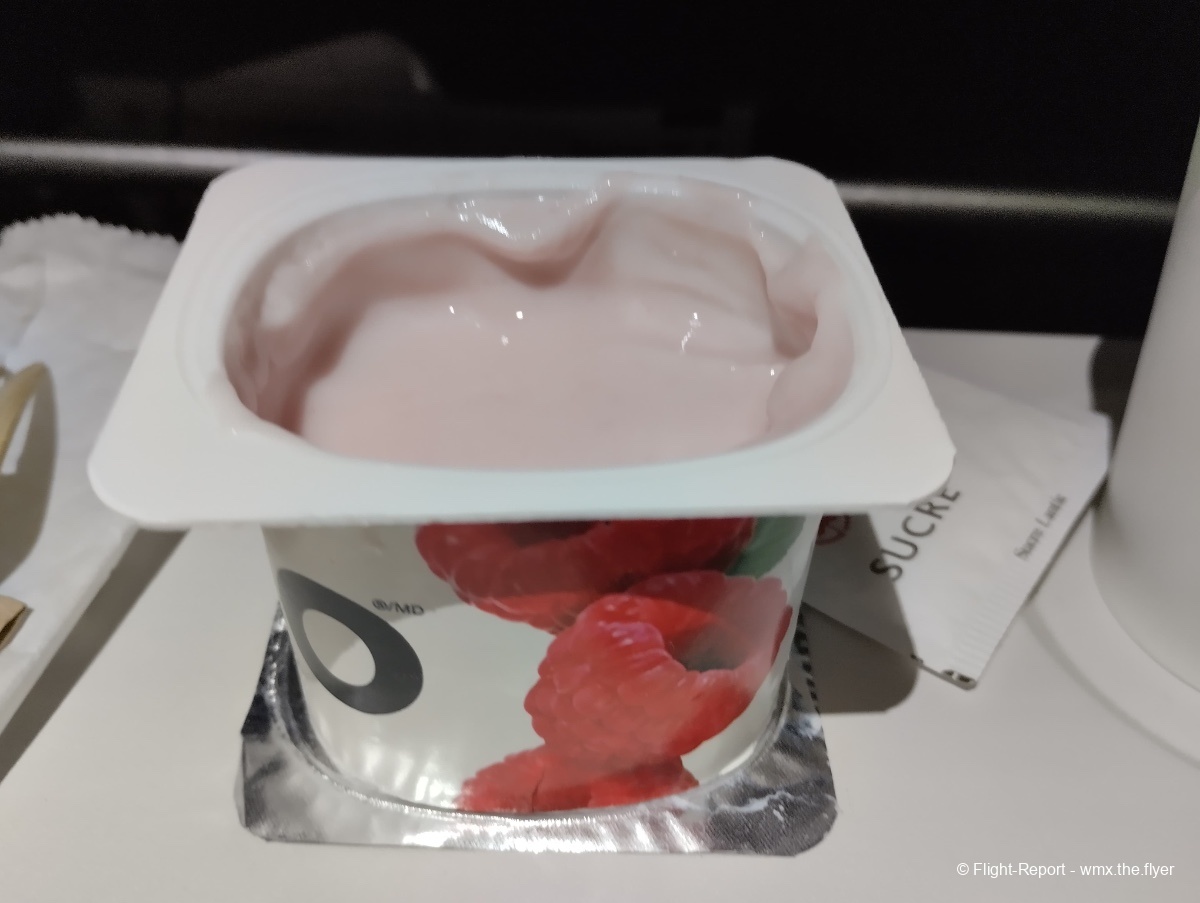
I went with another hot coffee with milk and sugar as well to keep myself feeling as fresh as I could.
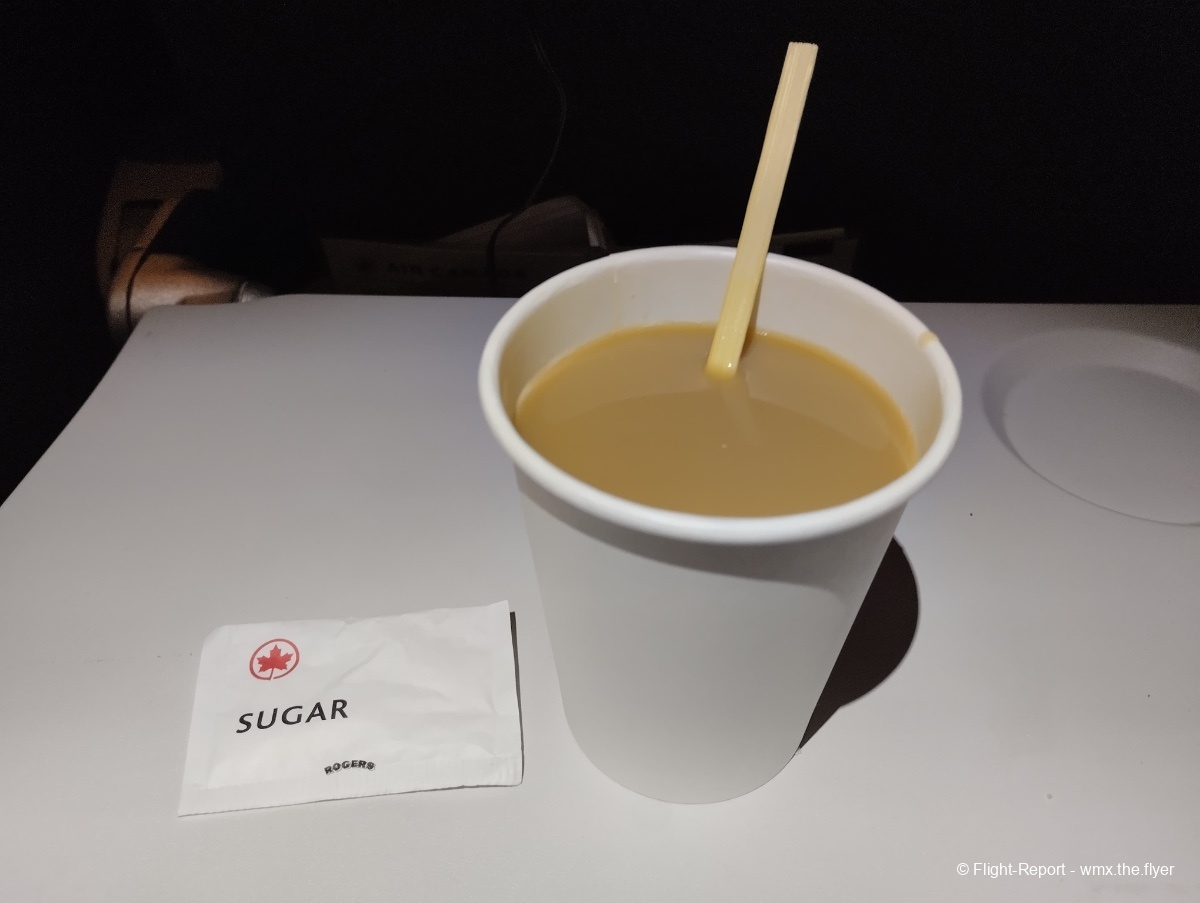
Overall, this pre-landing snack service did well enough to stop me from being hungry early in the morning, though I would much have preferred a full hot meal. However, I do understand that a full meal here would not be the most logical for most passengers or economical for the airline due to the length of the flight.
BREAKFAST SERVICE SCORES: 4/10
Cabin Crew
While we descend into Edinburgh, I will share some of my thoughts on the cabin crew of this flight.
Service speed
Service speed, while not the fastest considering the meal service started relatively late after takeoff, was pretty consistent during the meal service itself, with everyone getting their meals within a relatively short period of time.
Service attitude
The flight attendants were hardworking and friendly, and I especially would like to note that I could not hear any loud chit-chatting especially considering I was right in front of a busy galley. I feel they could have been just a little more proactive with service, though.
CABIN CREW SCORE: 8/10
Approach + Landing
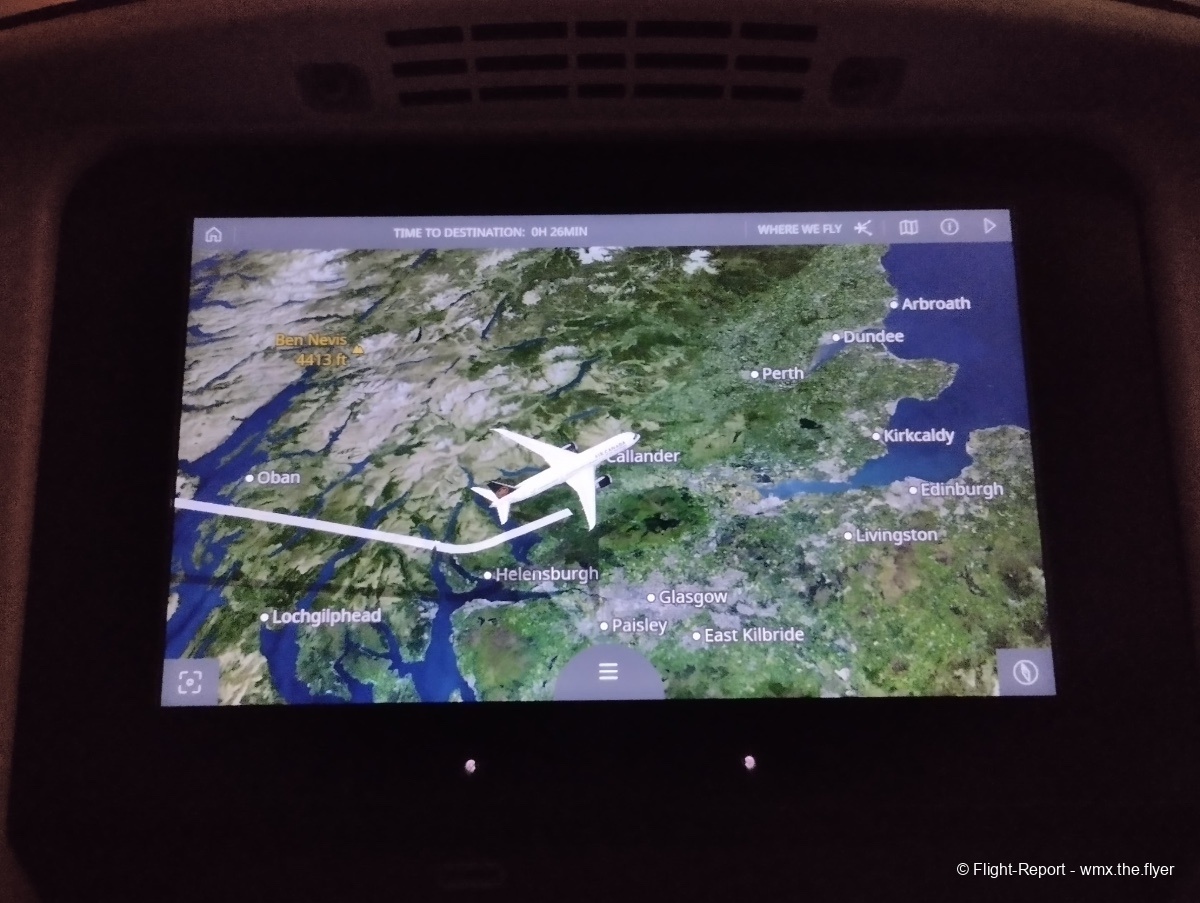
The aircraft approached from the west, making a slight left turn just northeast of Glasgow. Descending through 4000ft a few minutes later over the Firth of Forth, the aircraft turned right base and aligned with the assigned runway of Runway 24. The City of Edinburgh soon came into full view through my port-side windows.
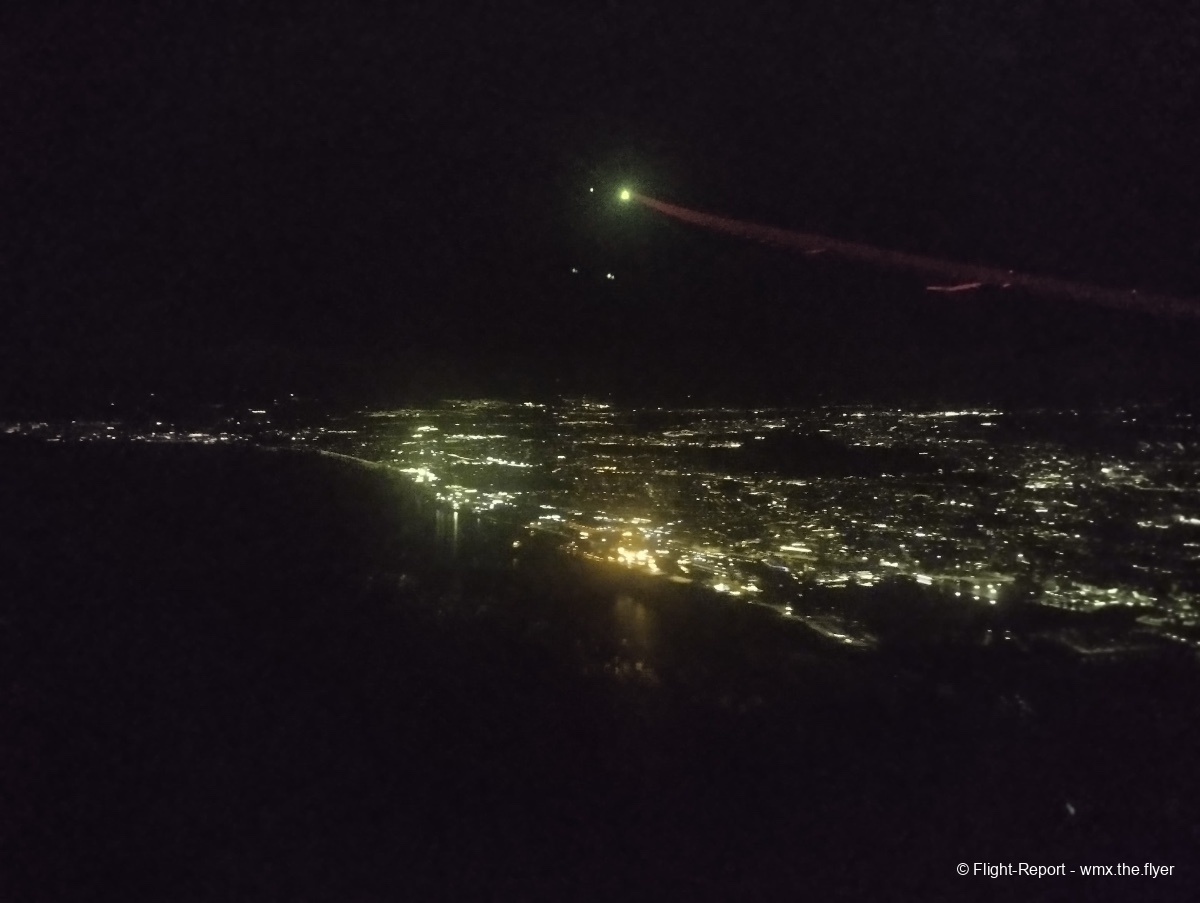
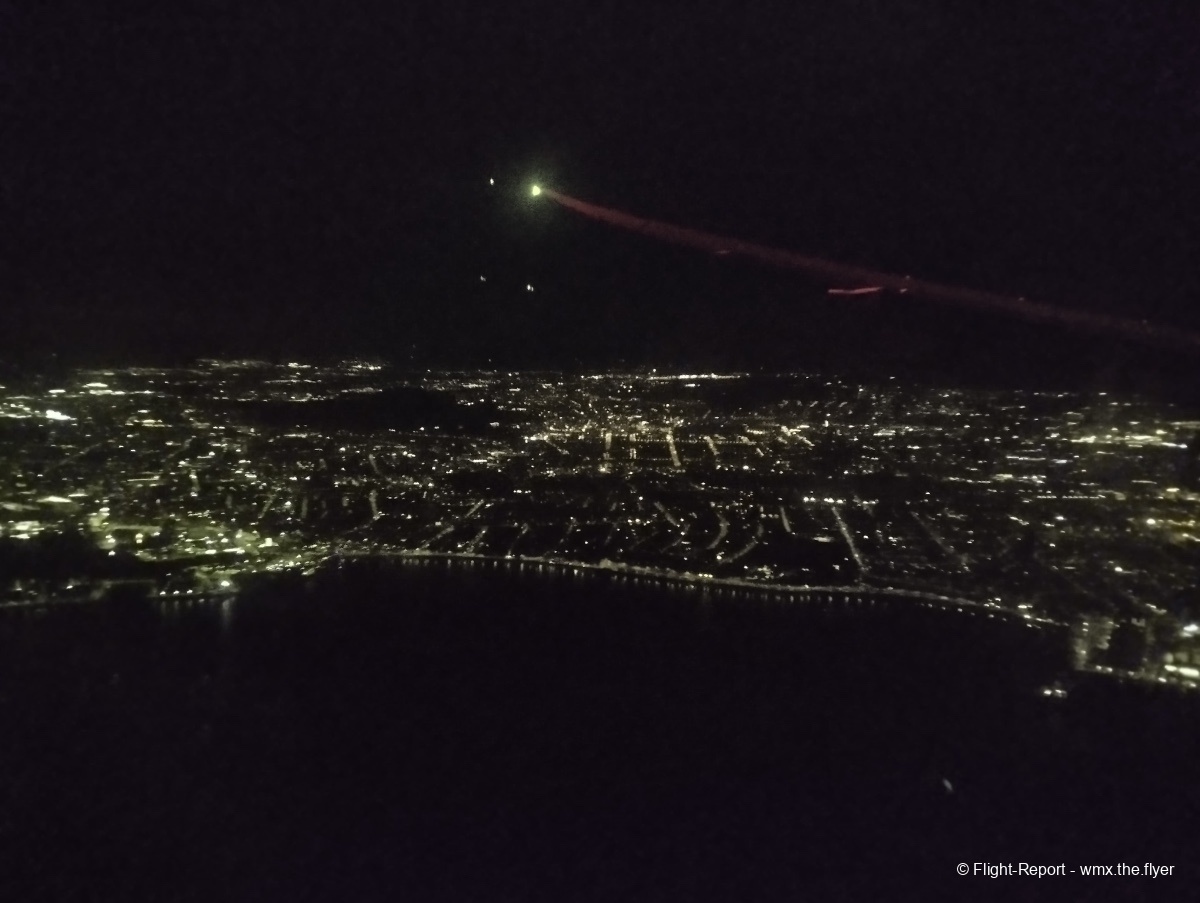
The aircraft landed on Edinburgh’s Runway 24 at 06:21 local time, 24 minutes ahead of schedule.
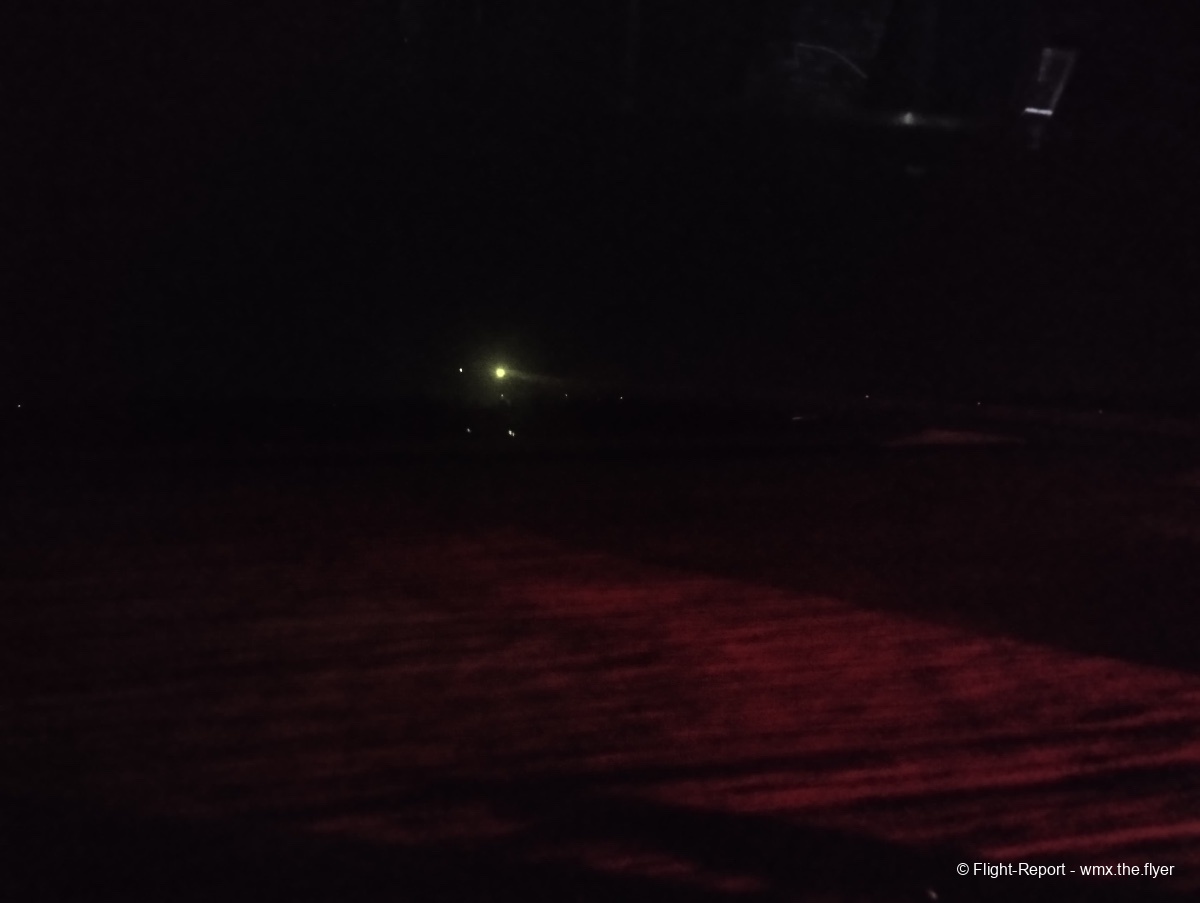
After landing, the aircraft continued rolling down the full length of the runway before turning off at A1 on to taxiway A.
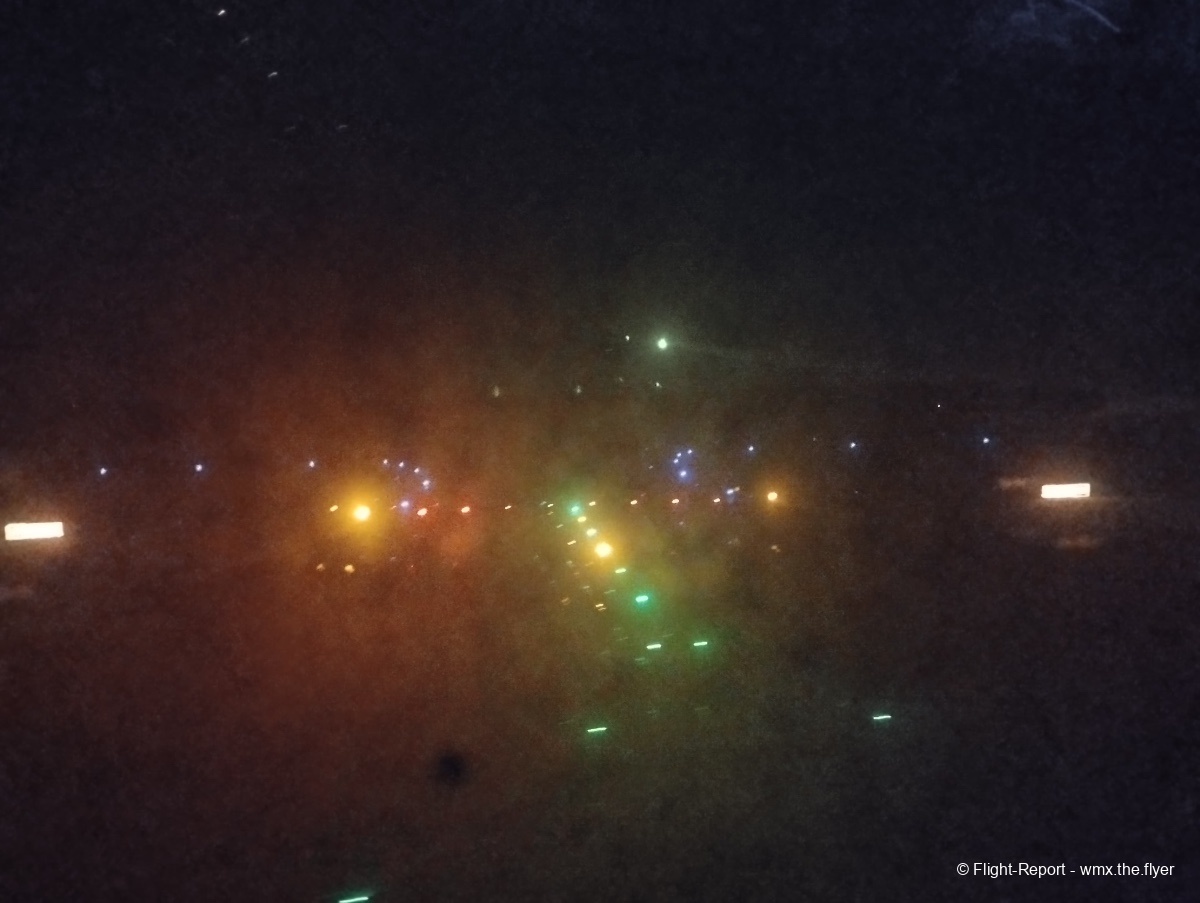
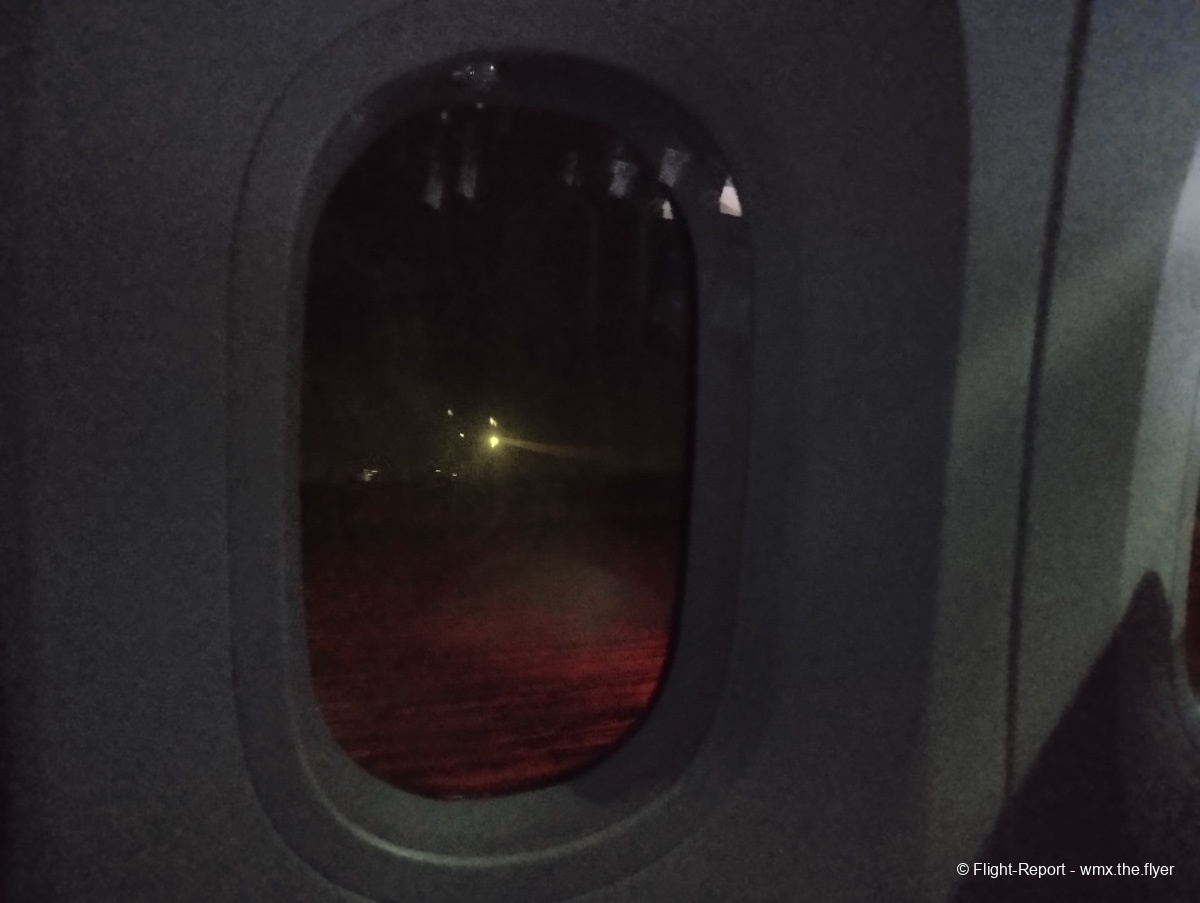
The aircraft turned right at M1 onto taxiway M, then turning right at M2 to park at gate 15.
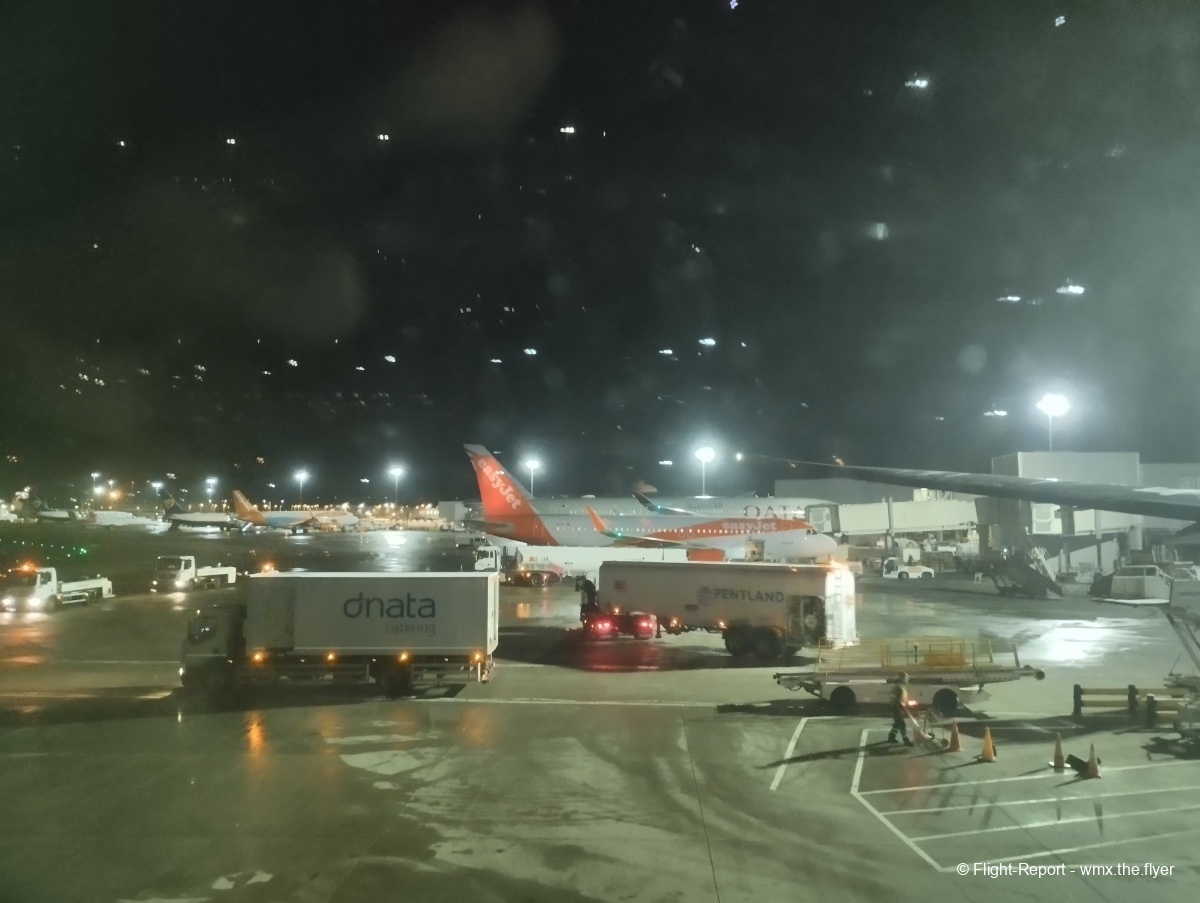
Look at the difference in air pressure! The inside of the bottle is filled with air at cabin pressure, on the 787 that is about equivalent to 6000ft of altitude, while the cabin has now depressurised to match the pressure of outside the aircraft, just metres above sea level.
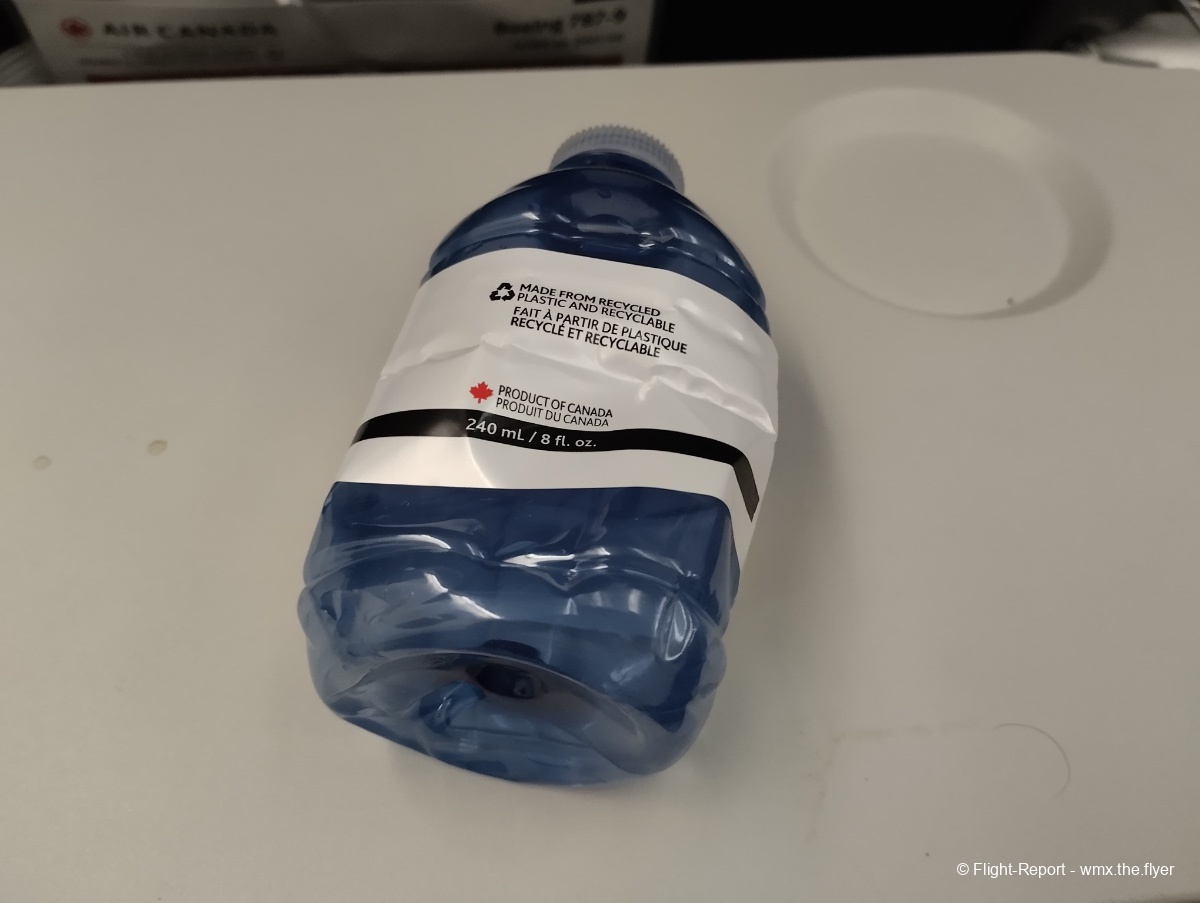
Deboarding was smooth and the cabin crew members looked to be still in good spirits waving the passengers goodbye.
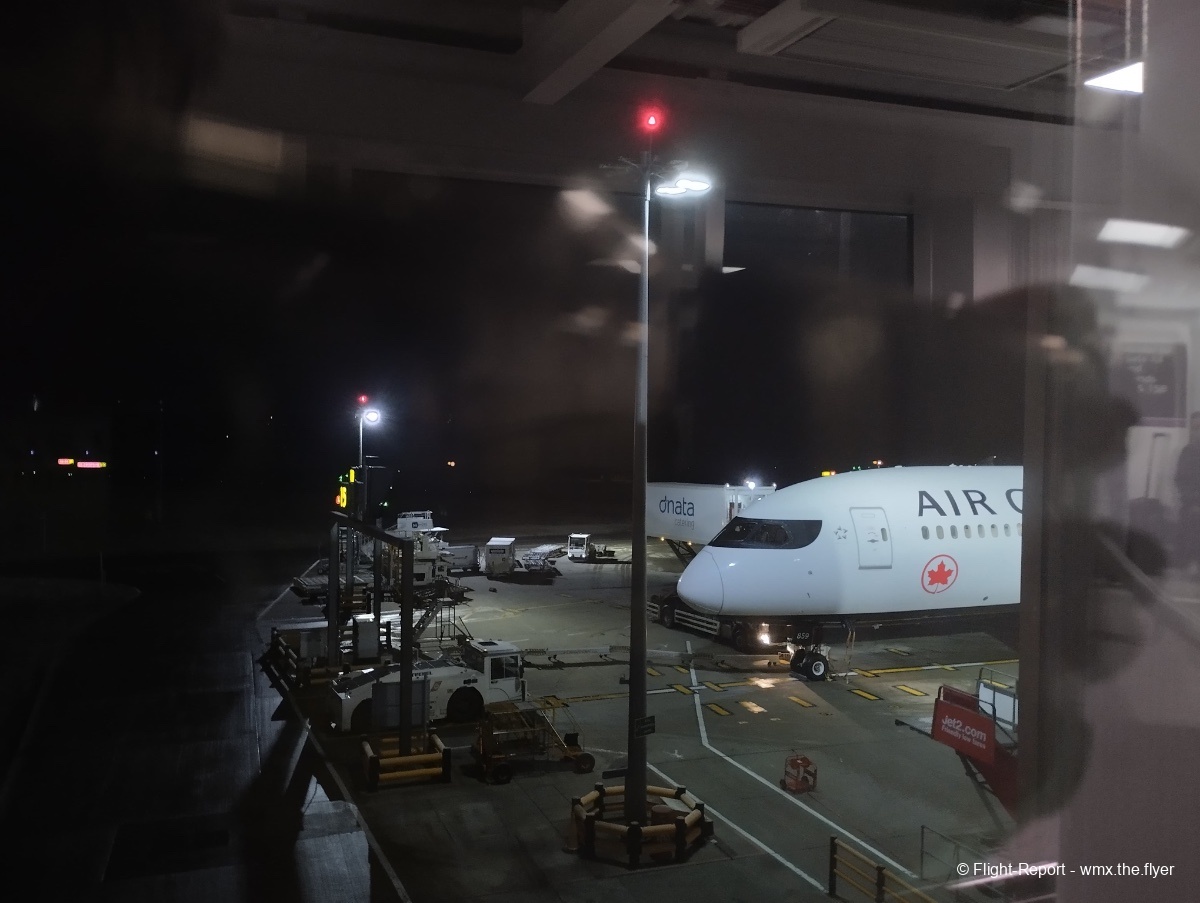
Arrival Airport - Edinburgh EDI
History and current operations at the airport
Edinburgh Airport (EDI/EGPH) started off in 1916 as Turnhouse Aerodrome, serving the Royal Air Force during the First World War. The airfield was utilized for military use until after the Second World War, when it opened for commercial traffic in 1947. In 1977, the current terminal building was completed alongside the current runway (06/24), which was able to take pretty much all modern airliners including the Concorde back then. The current control tower was built in 2005. Edinburgh Airport currently serves 152 destinations with 33 airlines. Edinburgh Airport’s busiest year was in 2019, when it handled 14700000 passengers, making it the busiest airport in Scotland. In 2020 and 2021 with the COVID-19 pandemic, the numbers drastically declined, but are rising again as air travel bounces back. In 2023, Edinburgh Airport once again handled around 14000000 passengers.
Immigration
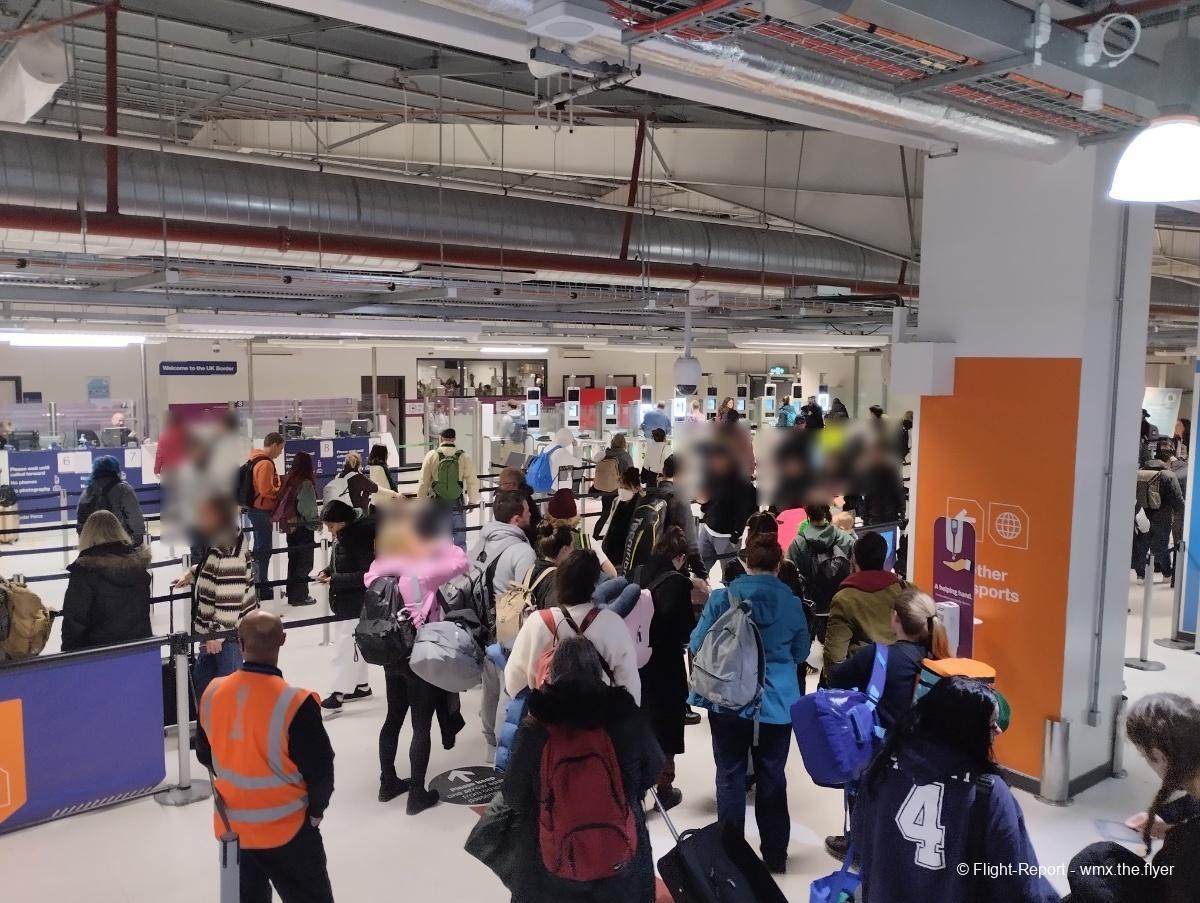
Immigration was standard, which brought me to the electronic gates which had failed miserably a month prior. However, I was relieved this time as the gates swung open to let me through.
Baggage Reclaim
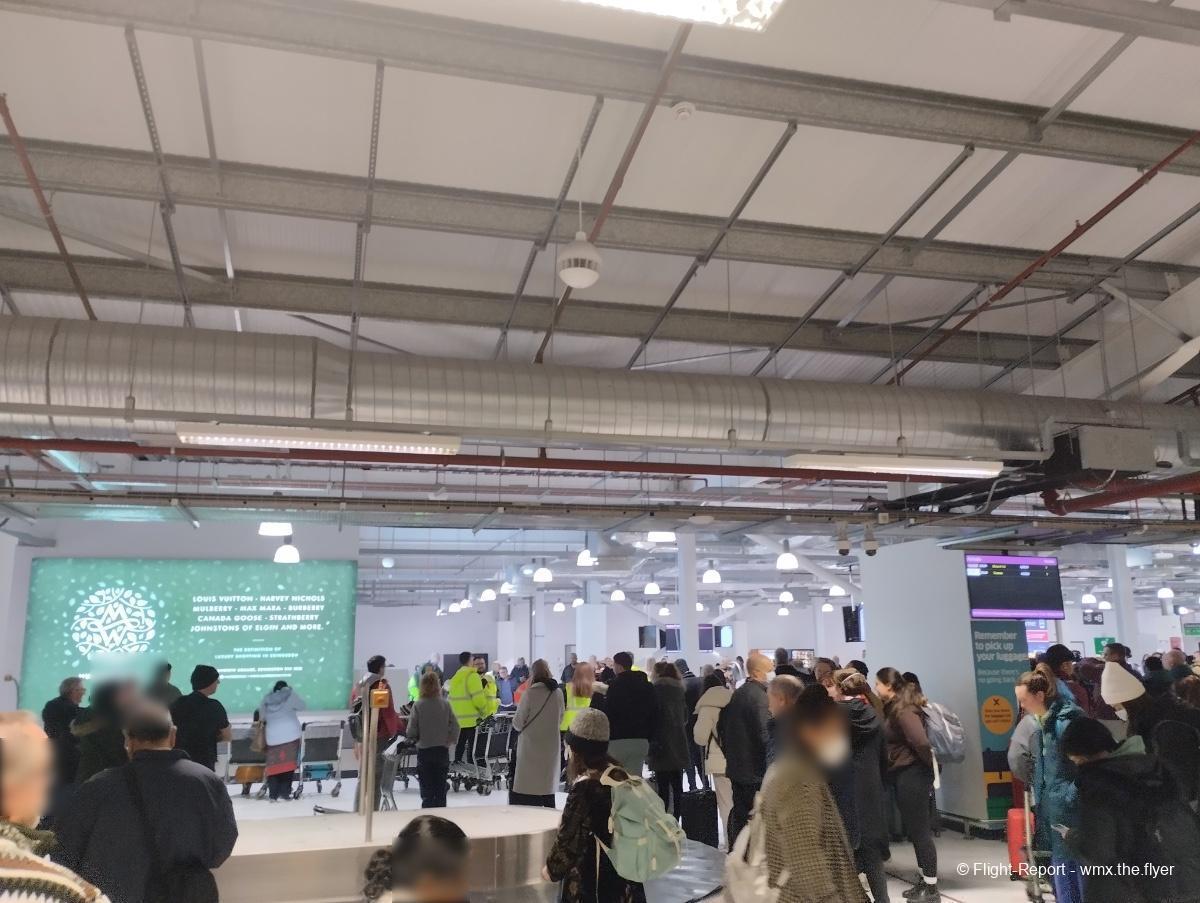
The baggage reclaim area was, like the rest of the airport, very clean but extremely busy with the passengers from my flight. My checked luggage took not too long to arrive onto the belt.
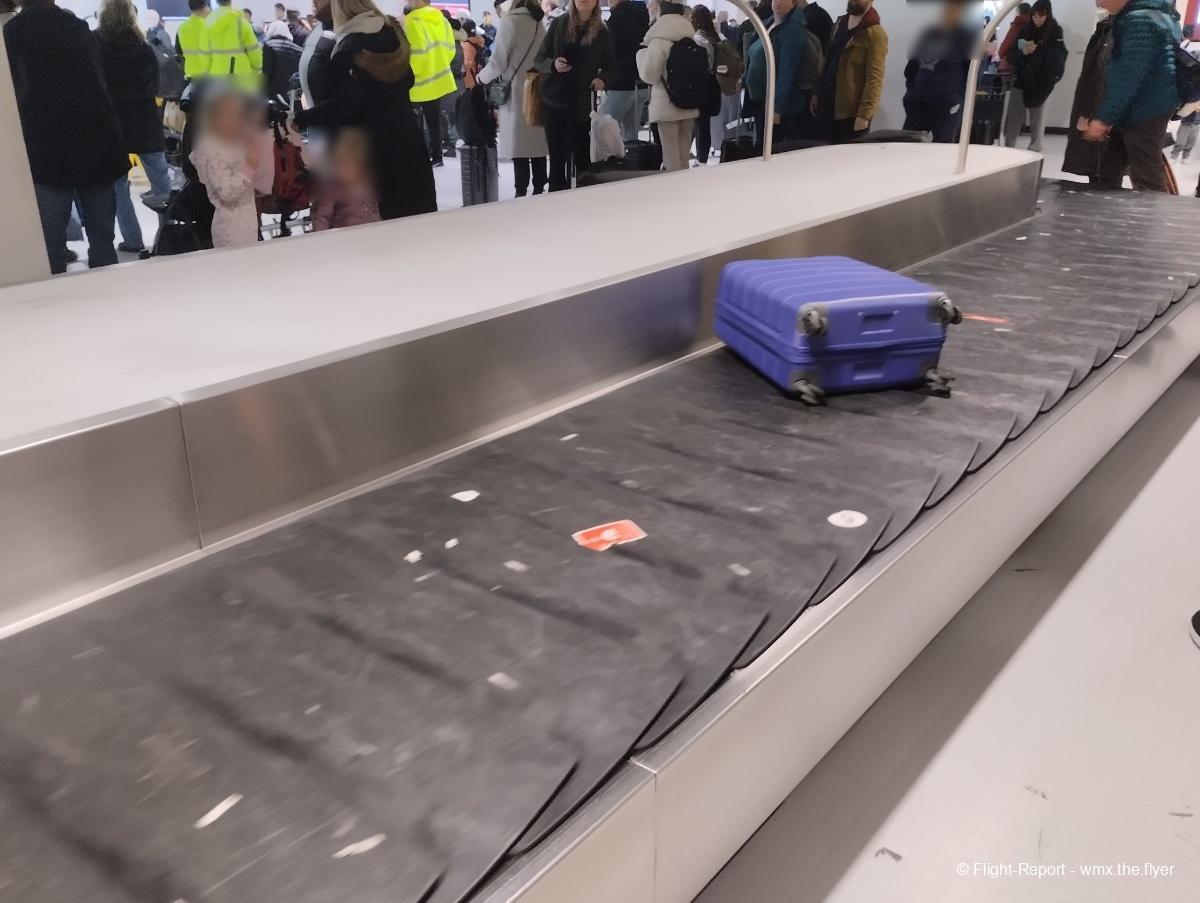
Transport to/from the airport
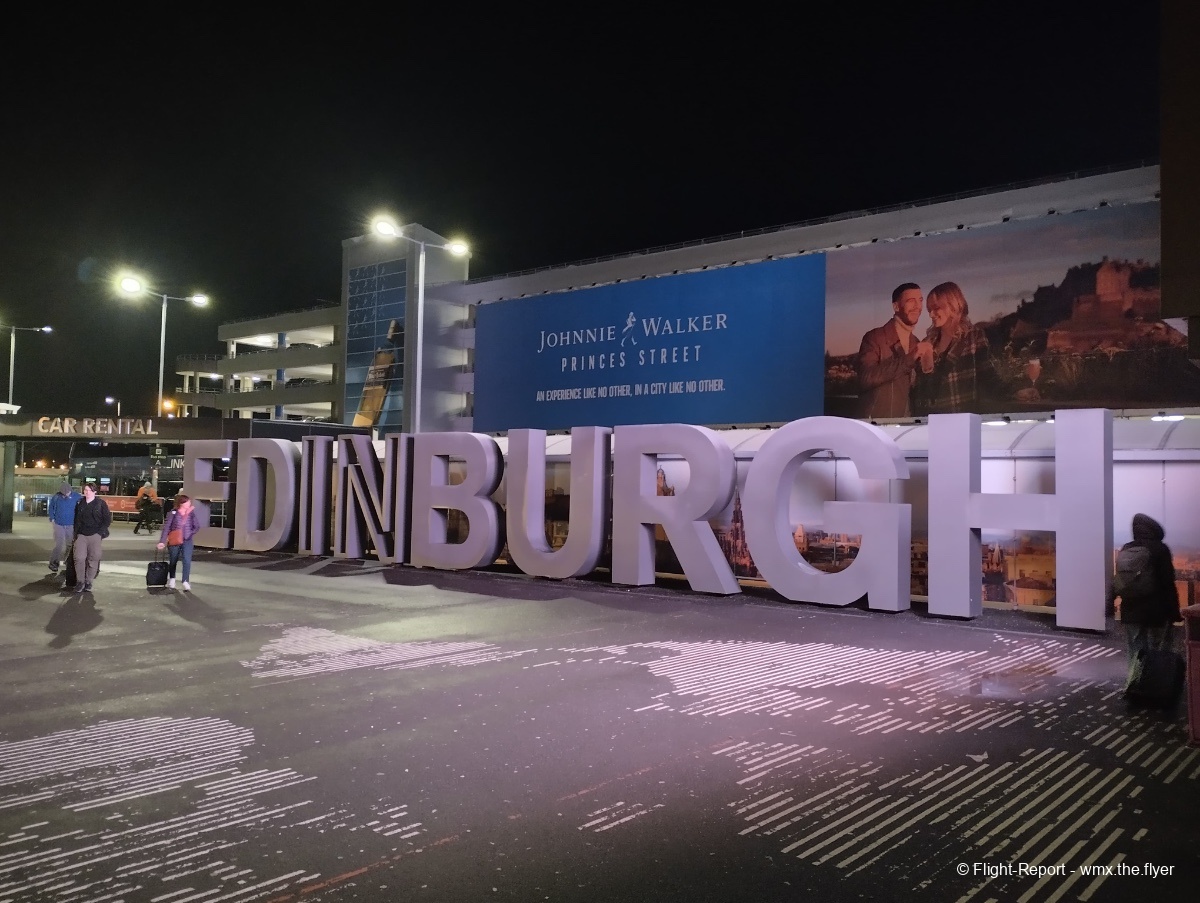
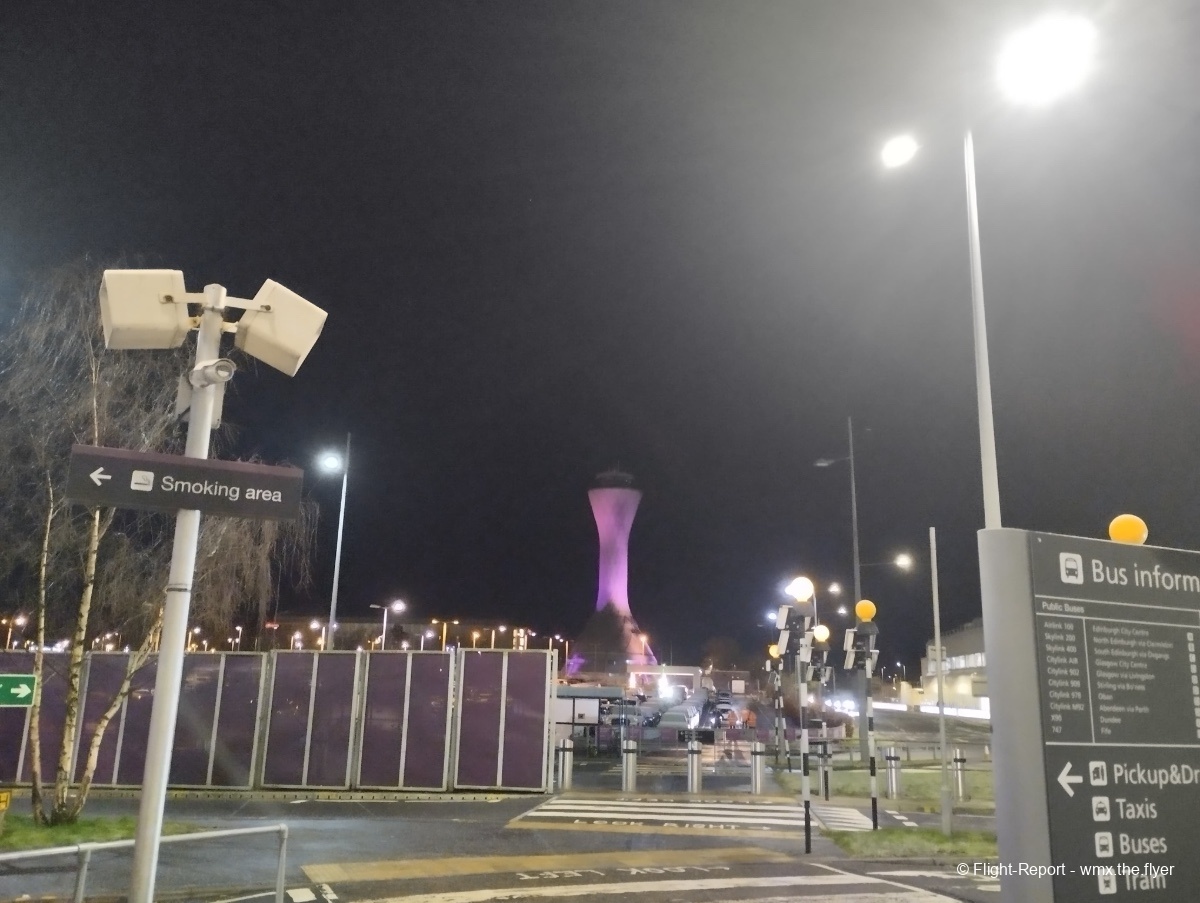
Edinburgh Airport is well connected to the city centre by road, bus, or tram. The A8 road, which connects Edinburgh with Glasgow, runs past Edinburgh Airport. Public buses, most notably the Airlink 100 service provided by Lothian Buses, runs every few minuted between the airport and the city, connecting the two in around 25 minutes. The Edinburgh Trams service also makes a similar trip toward the city centre, though at a higher price. I, however, stayed the night at the nearby Moxy hotel near the airport, passing by the airport’s spitfire on display on the way.
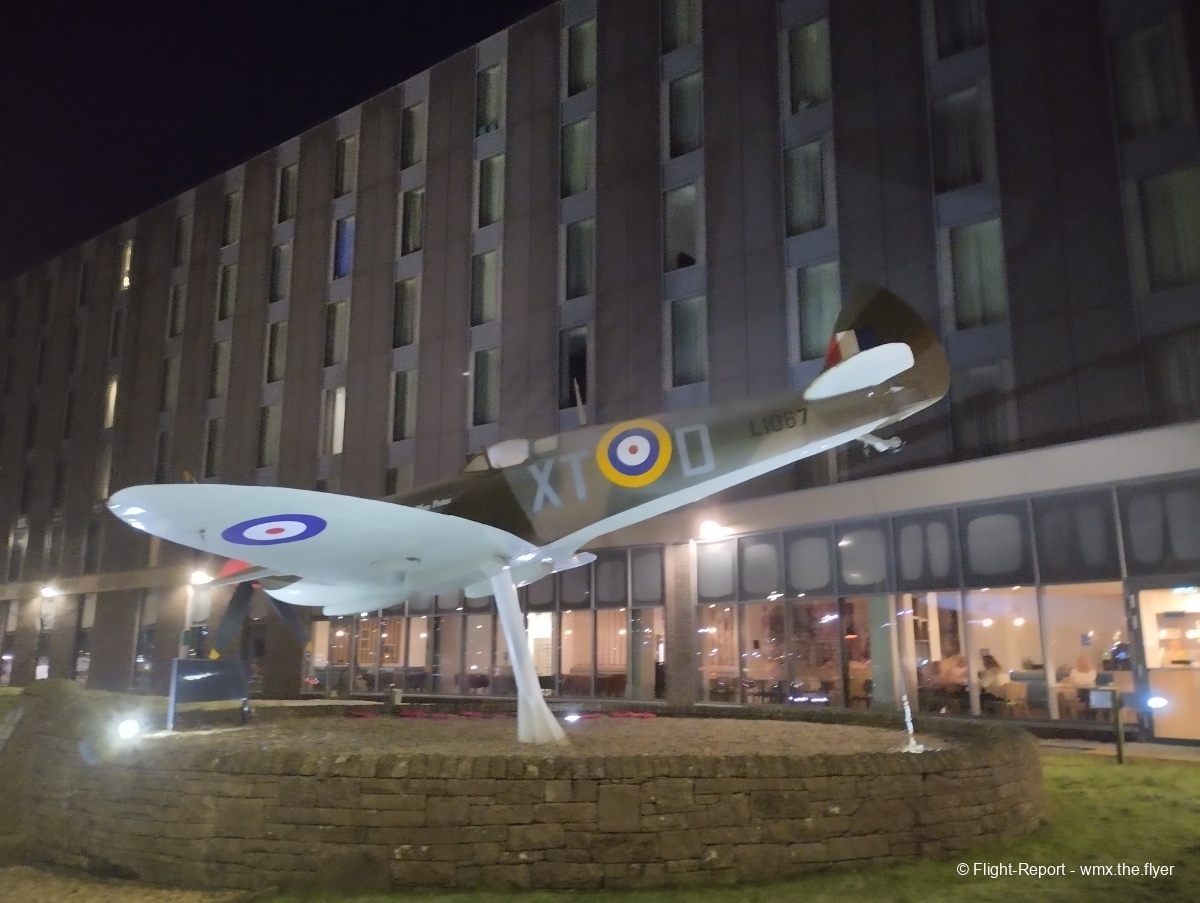
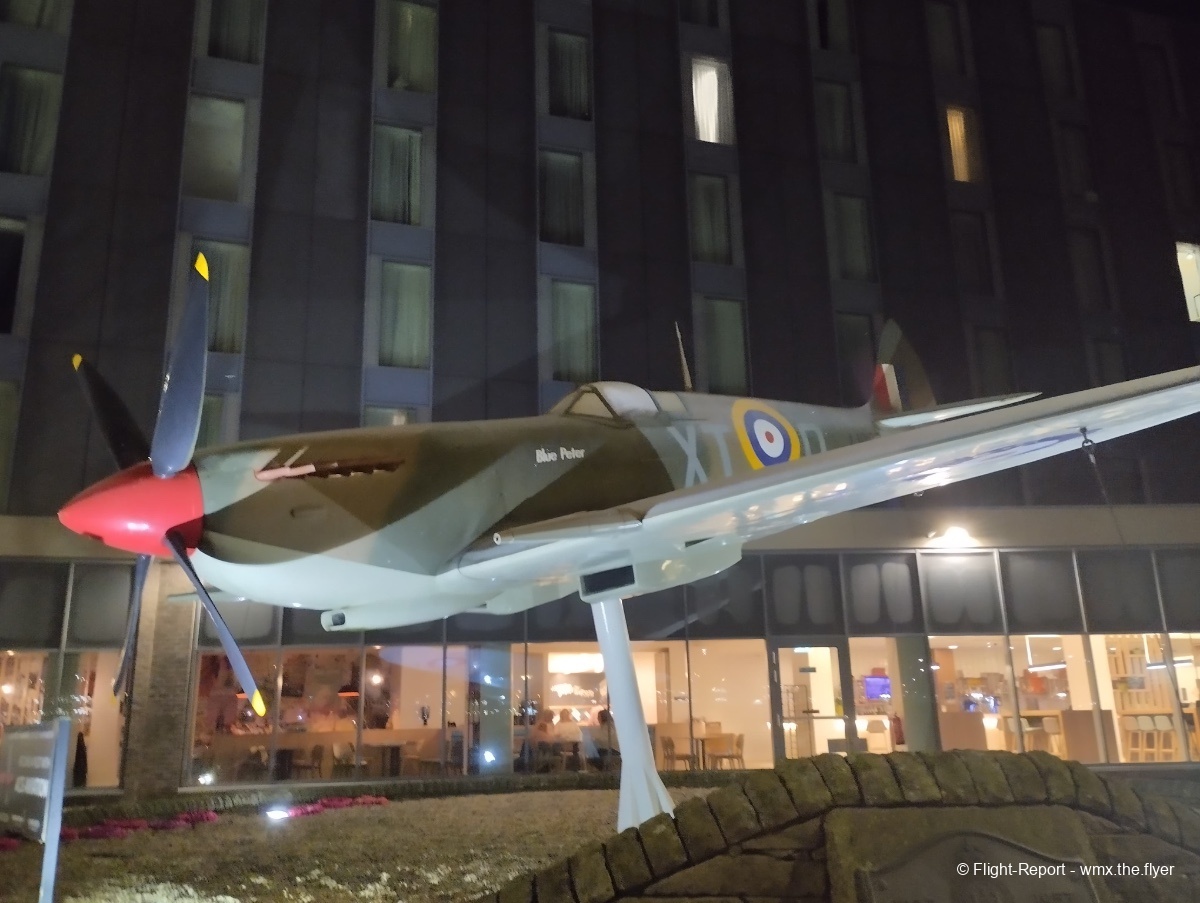
ARRIVAL AIRPORT SCORES: 9/10
Final Ratings
Airports
Airports Experience: 7/10
Hard Product
Seat Comfort: 10/10
Sleep Comfort: -/10
In-flight Entertainment: 7/10
Aircraft Cleanliness: 10/10
Aircraft Comfort: 10/10
Soft Product
Food and Beverage: 5/10
Other service: 6/10
Amenities: 7/10
Cabin Crew: 8/10
OVERALL RATING: 77/100
Flight routing
- 1
- 2
- 3UA5272 - Economy - Los Angeles —> Seattle - Embraer E175
- 4
- 5

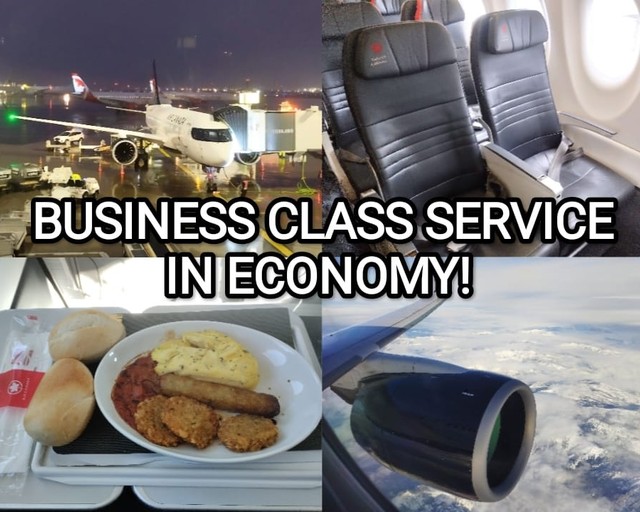
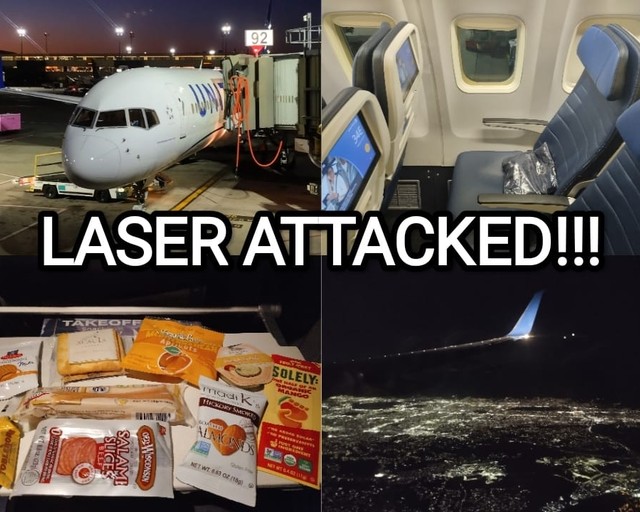
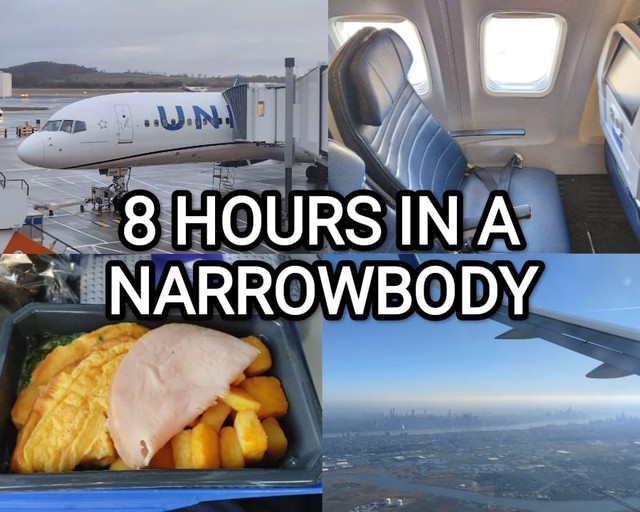
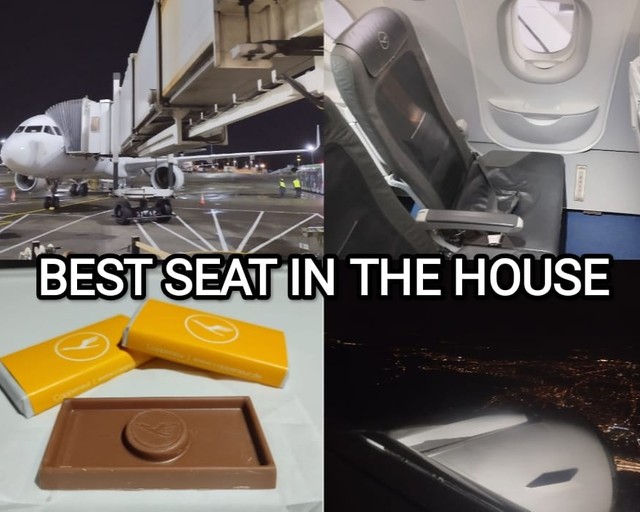
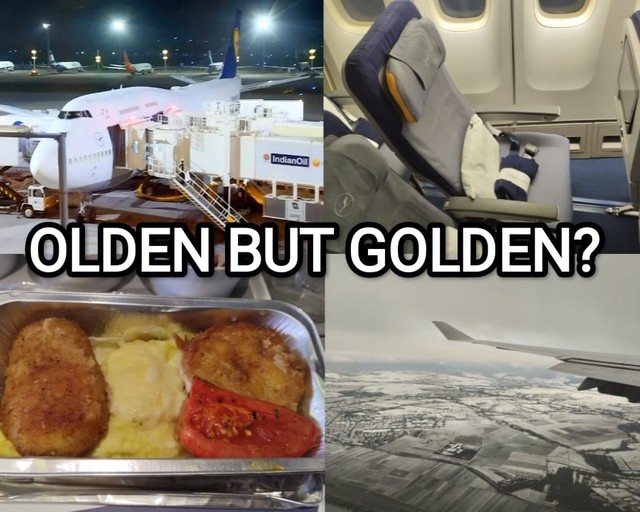

Thanks for sharing this FR. Surprised that EDI can sustain the larger B789 on this route. Overall AC is on par with its North American competitors and catering is never an area they are going to stand out in. Getting the row after the 3 seat to 2 seat switch is definitely a bonus with how narrow B787 seats are.